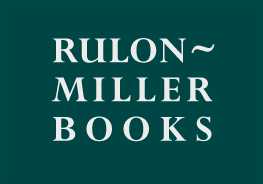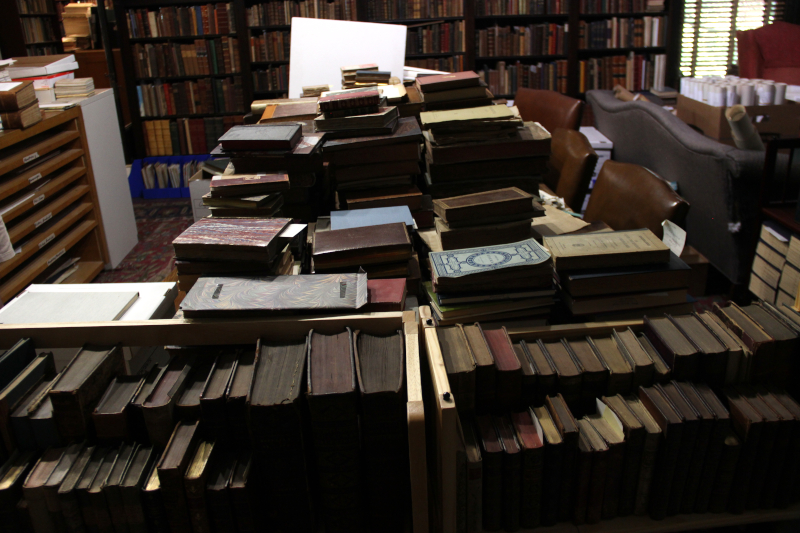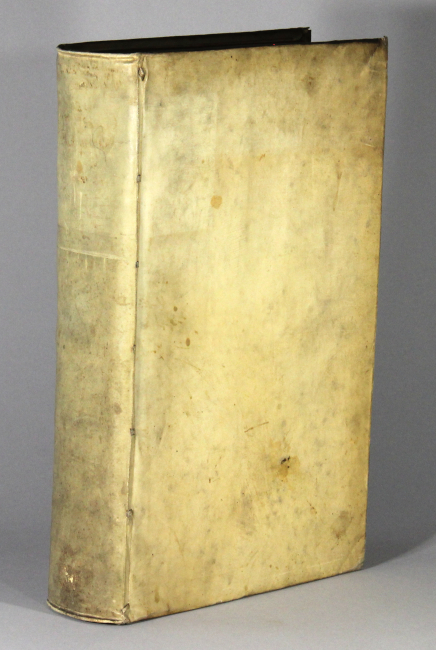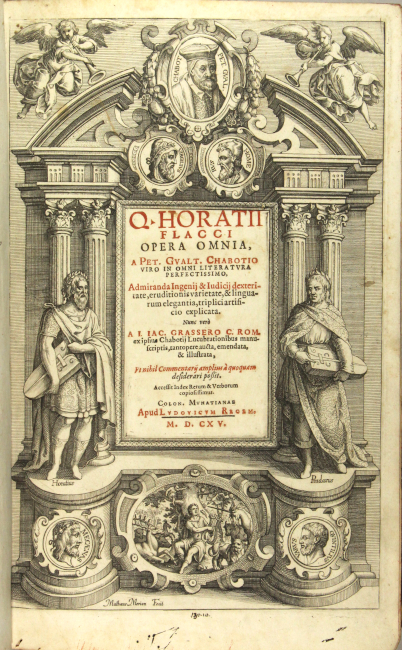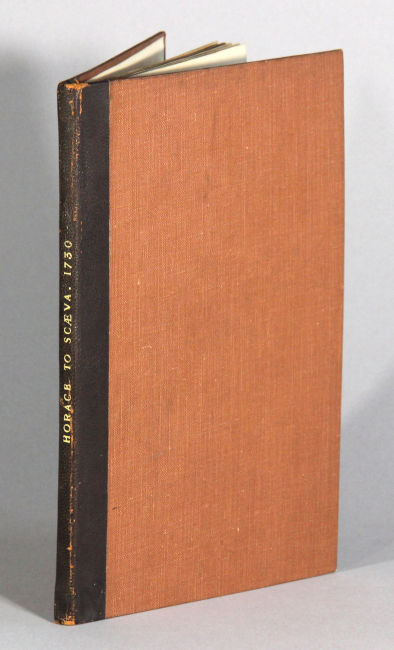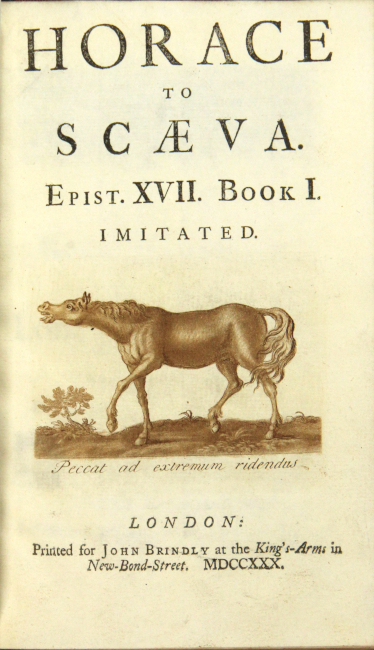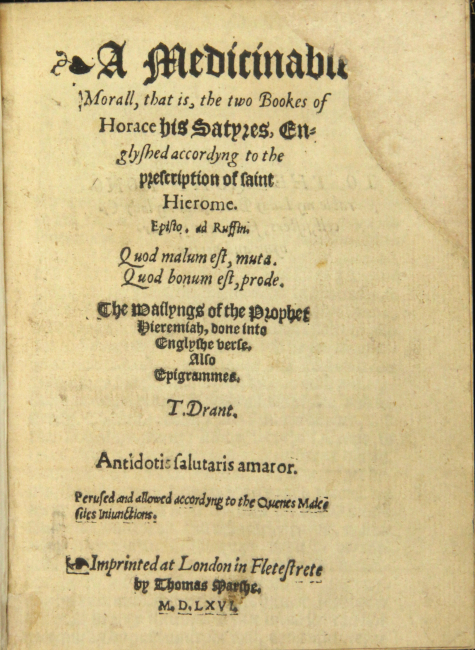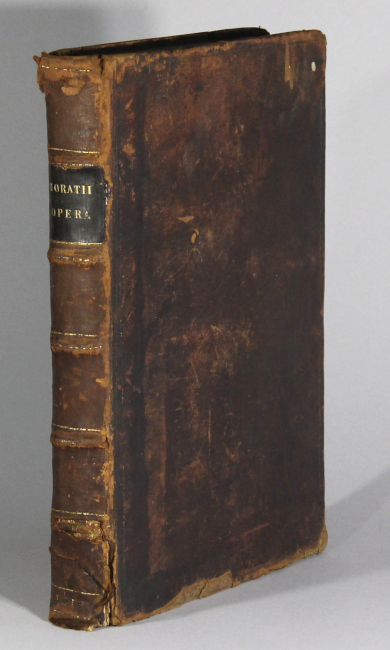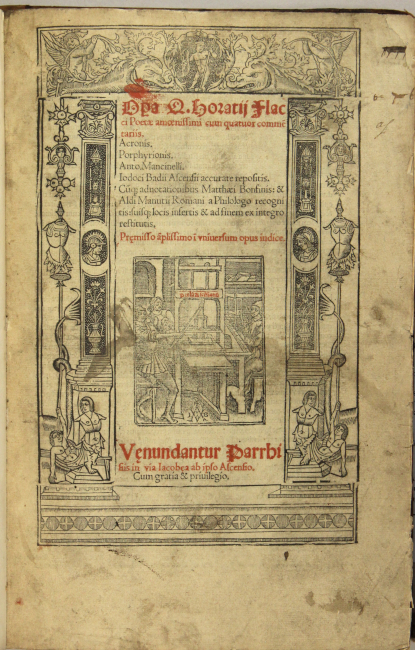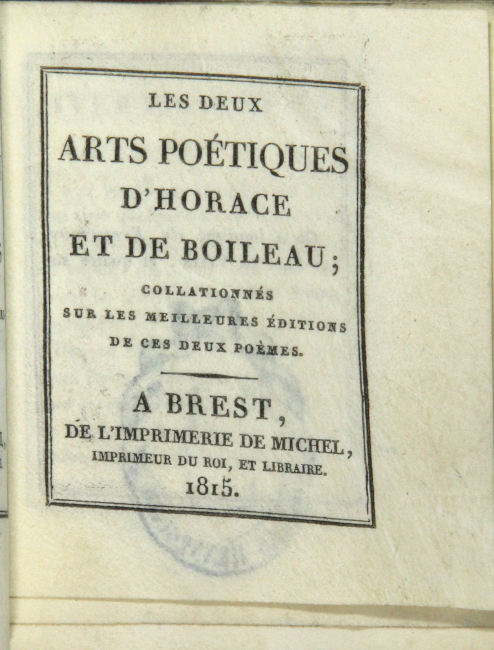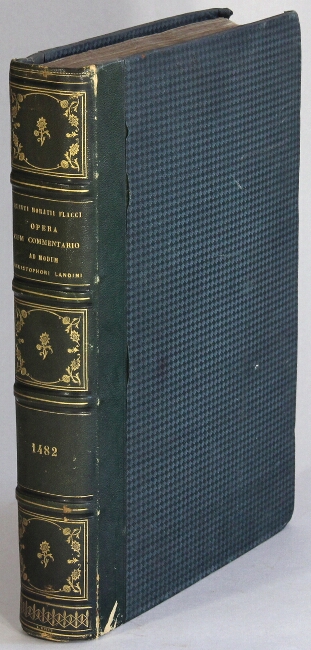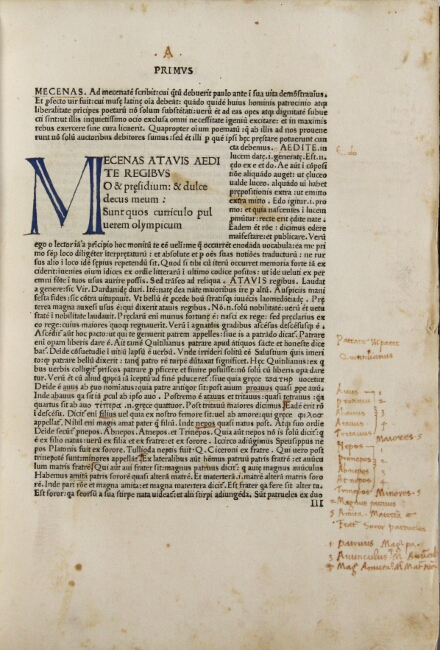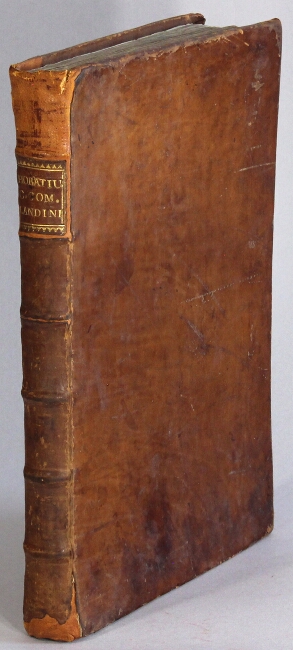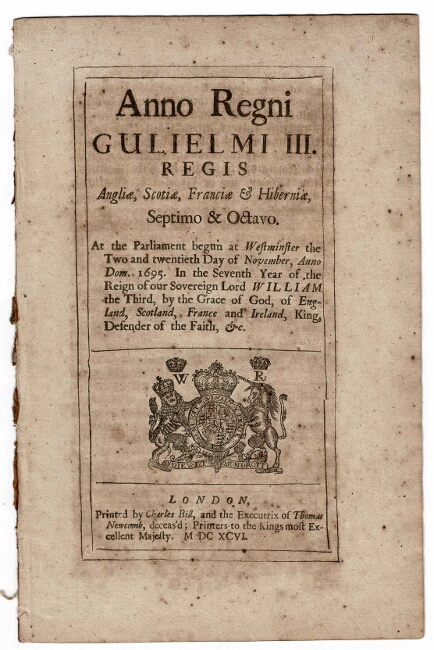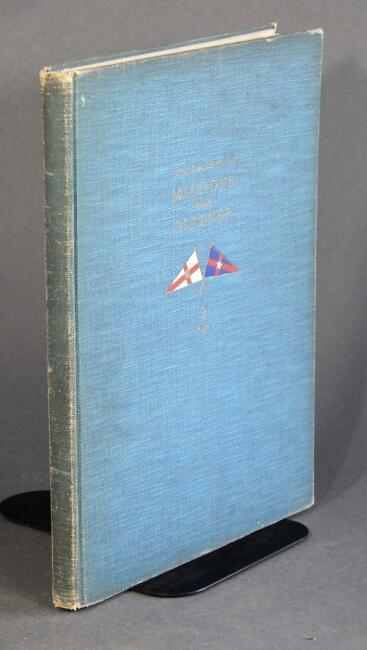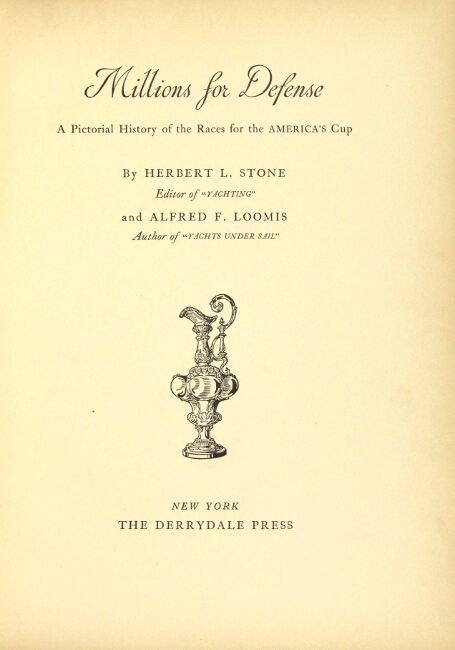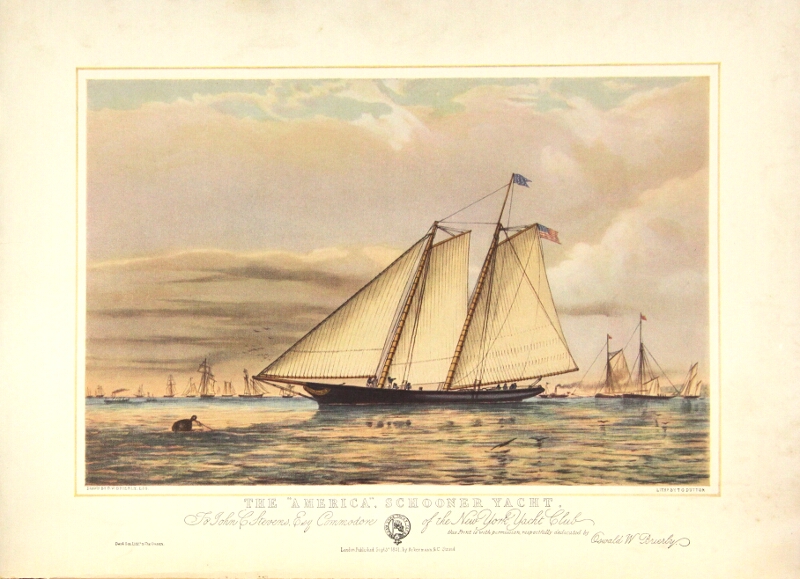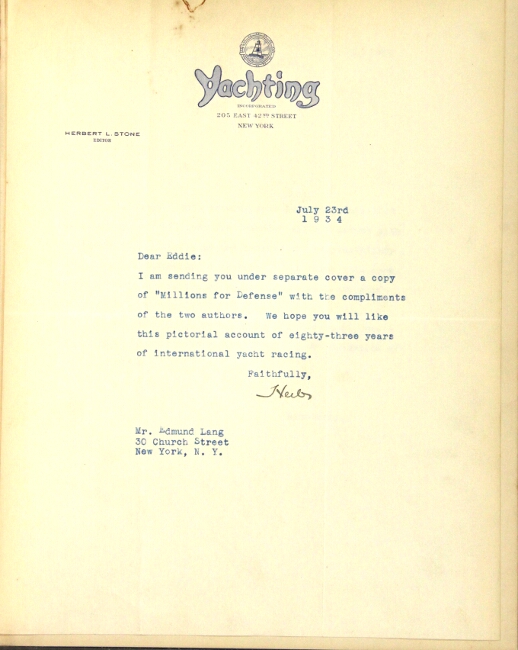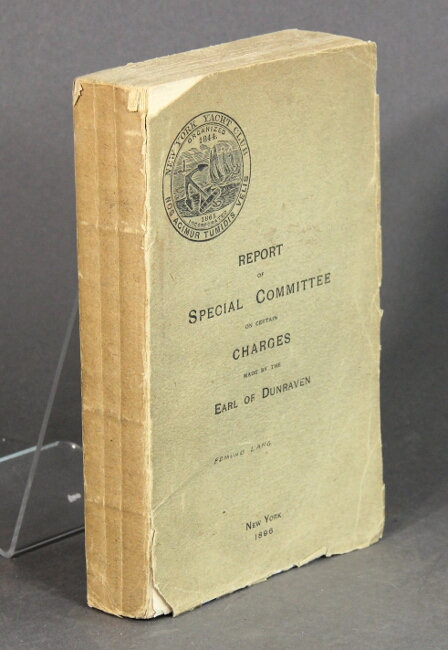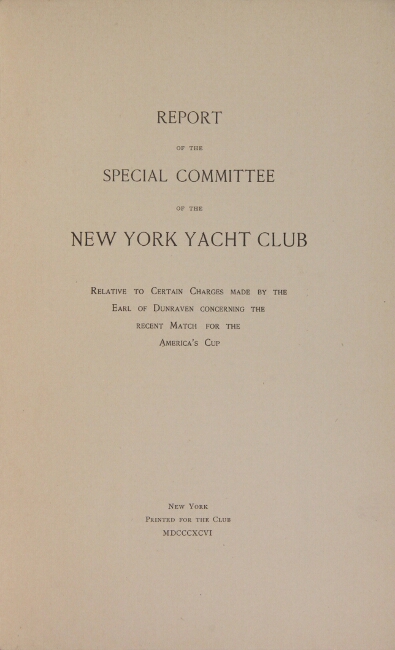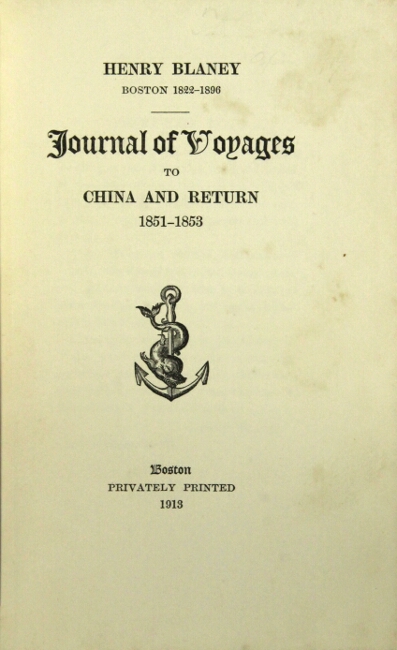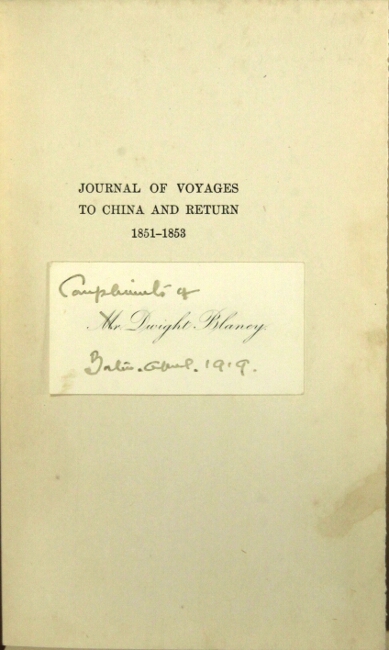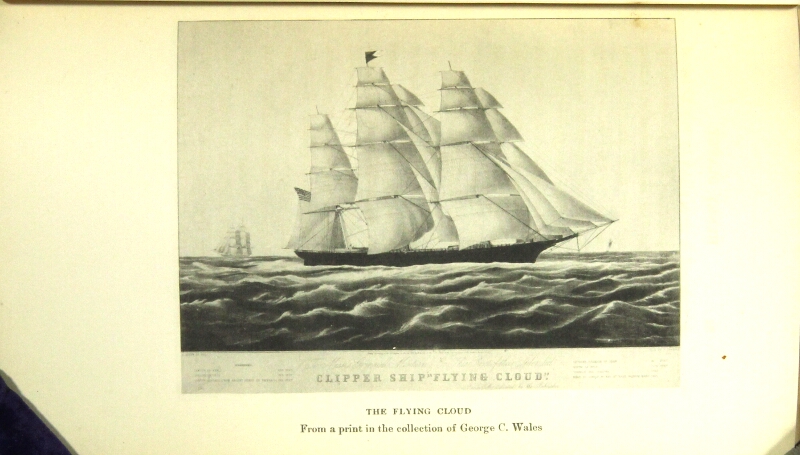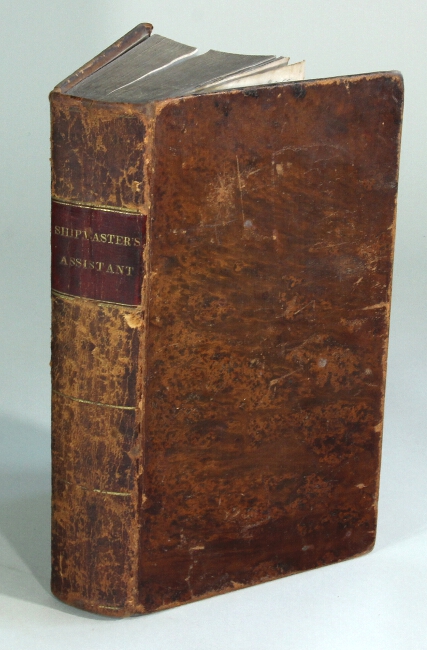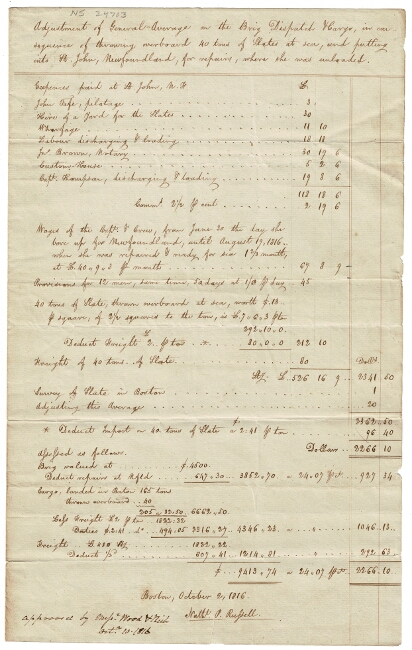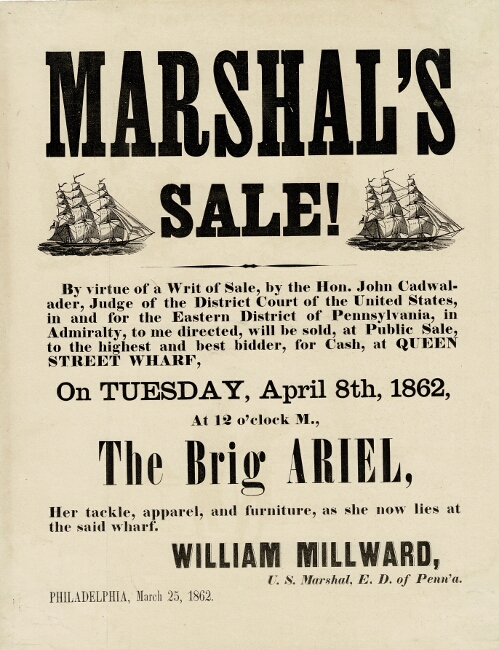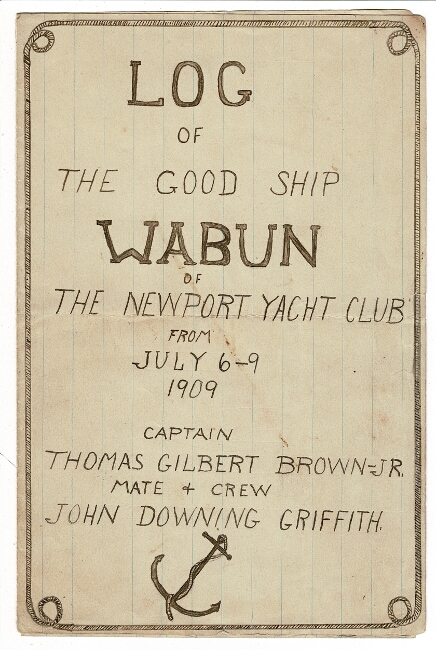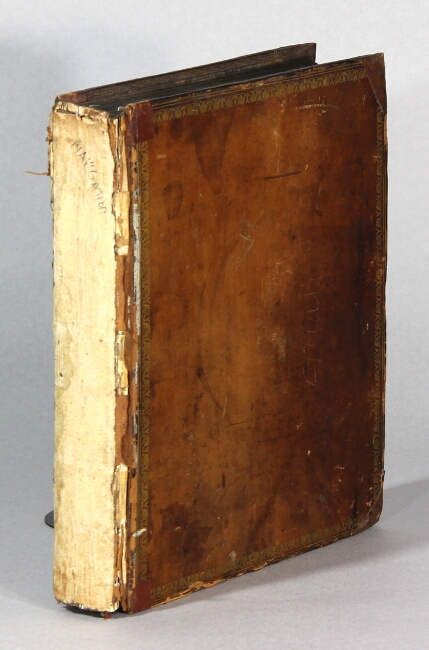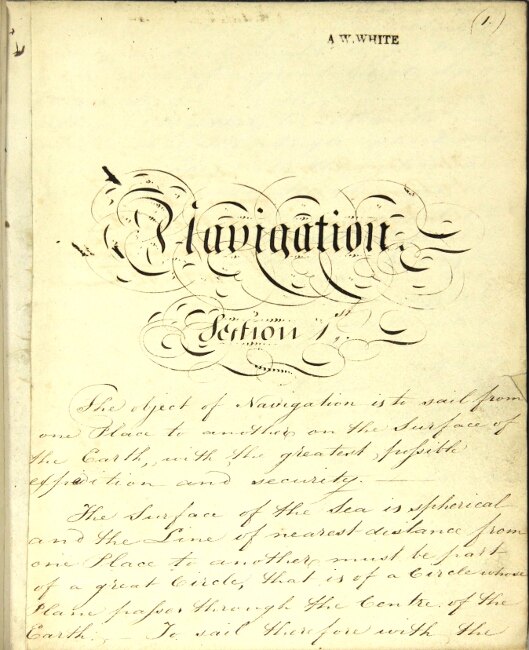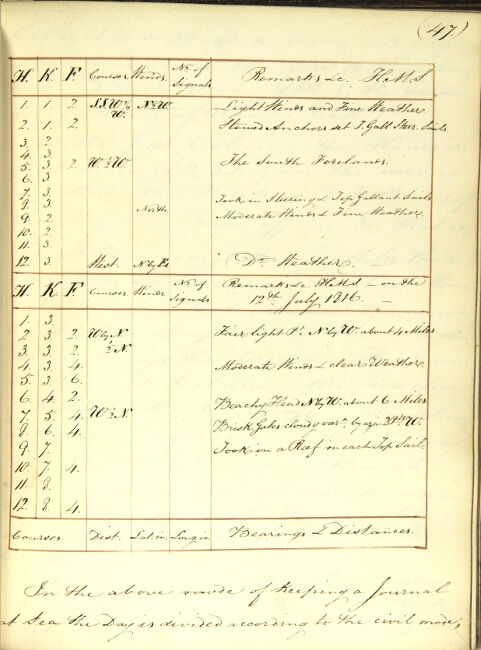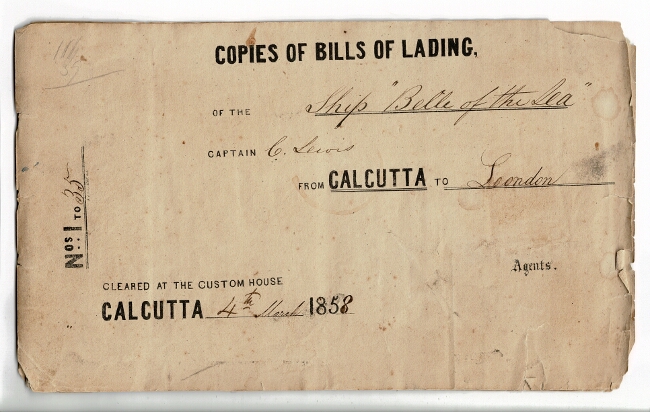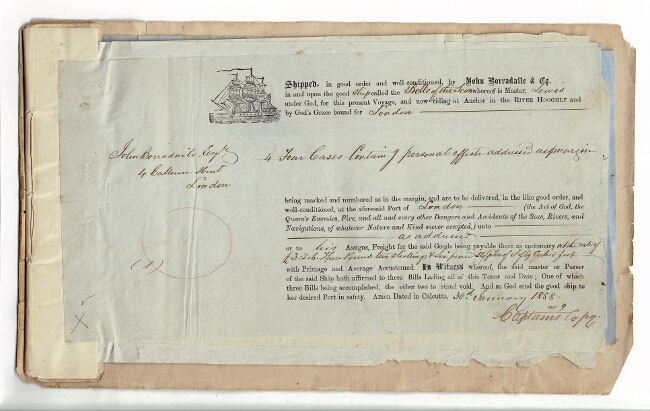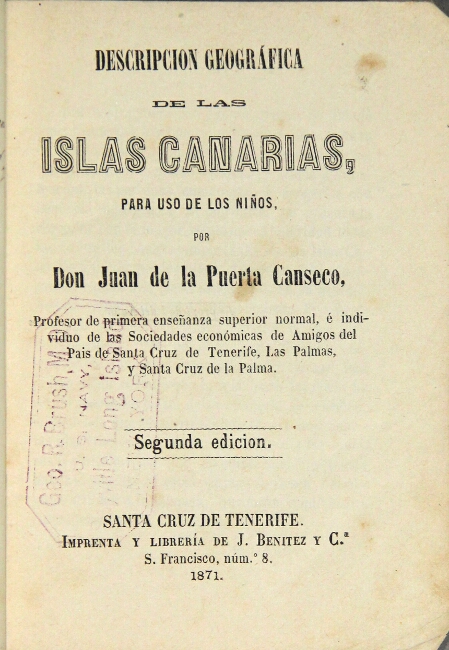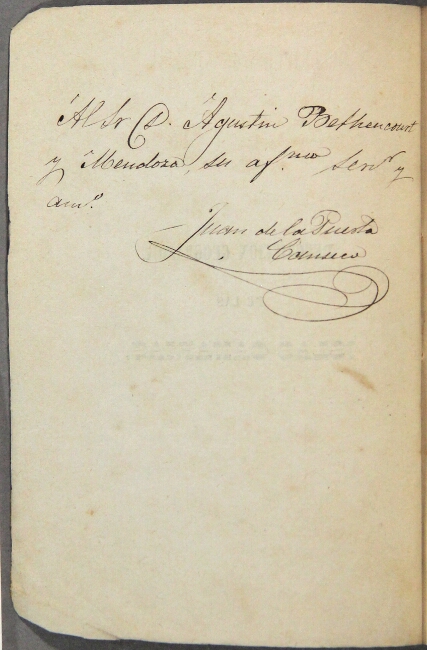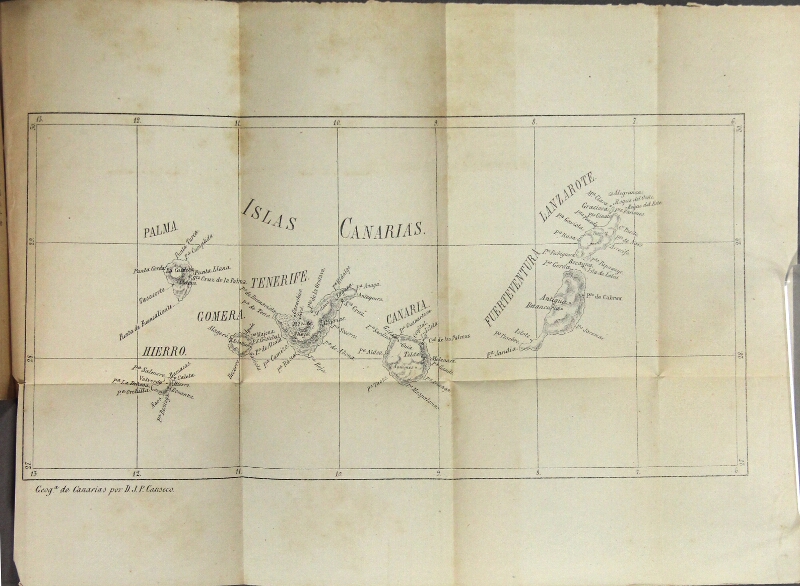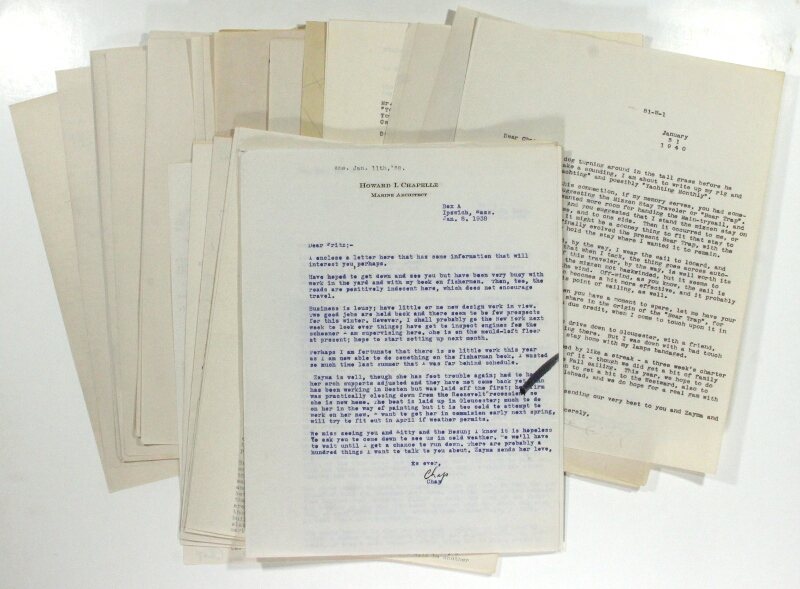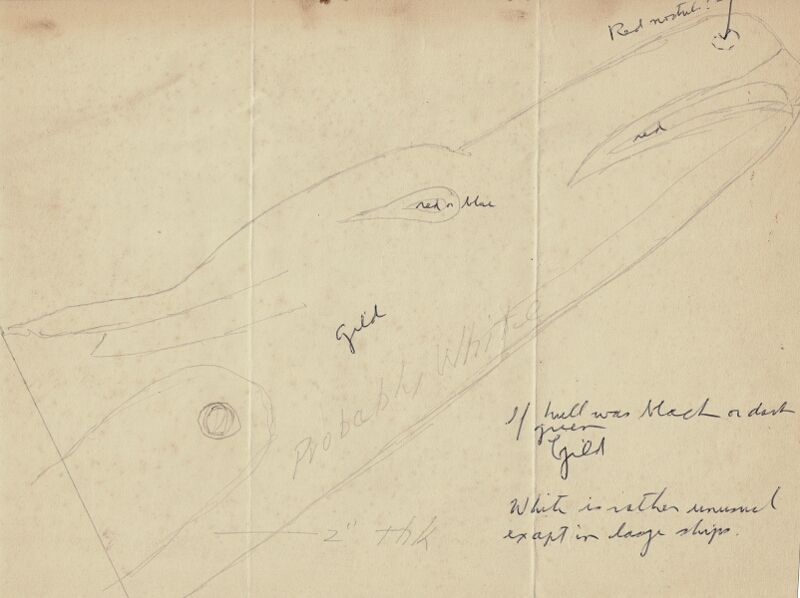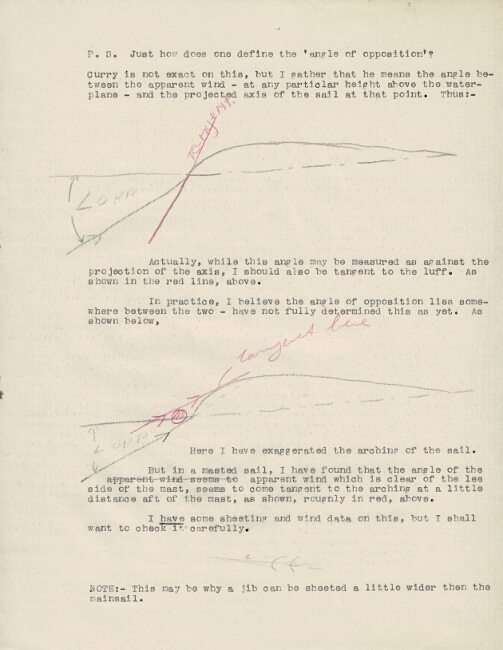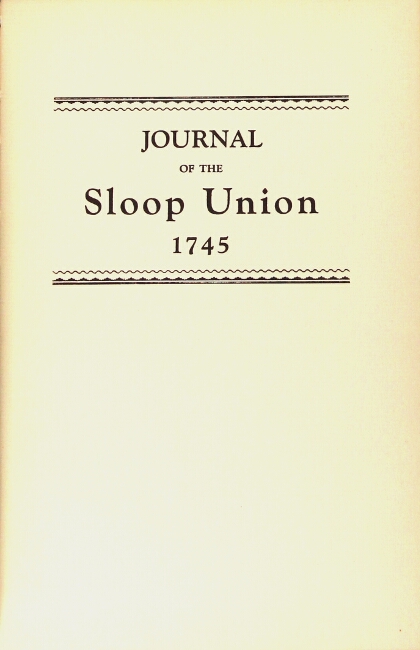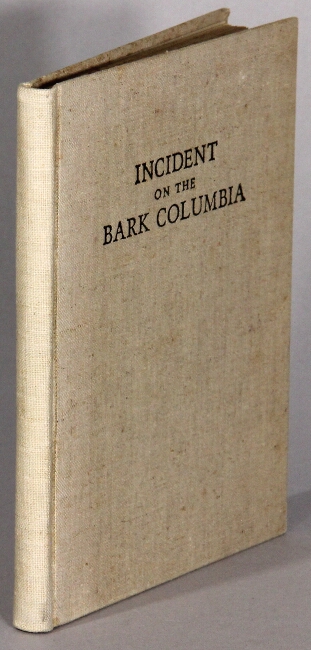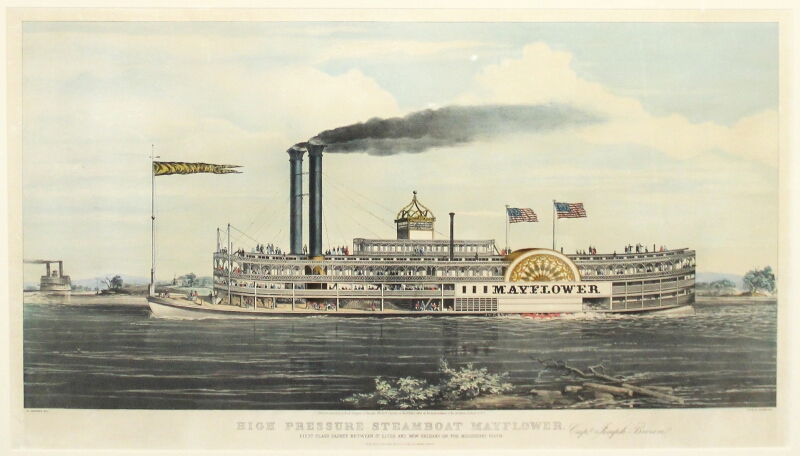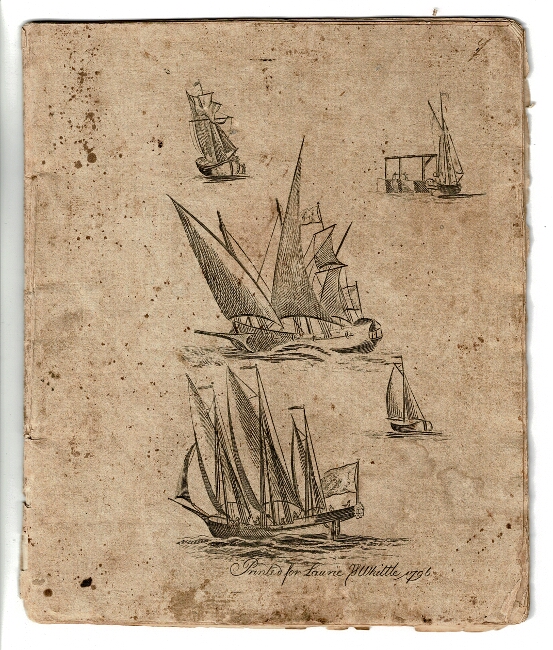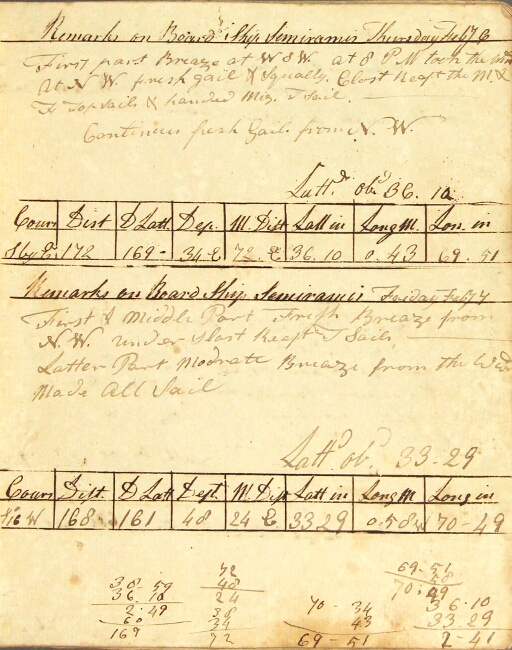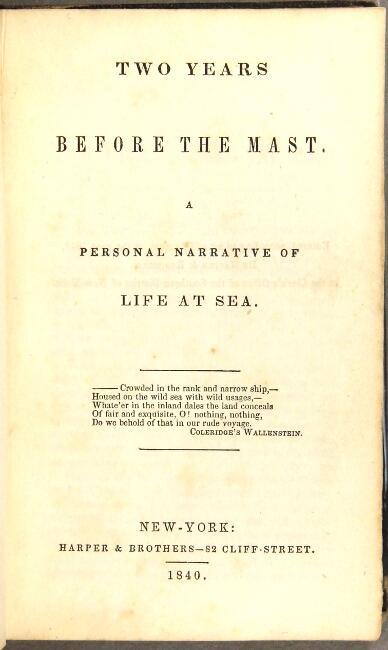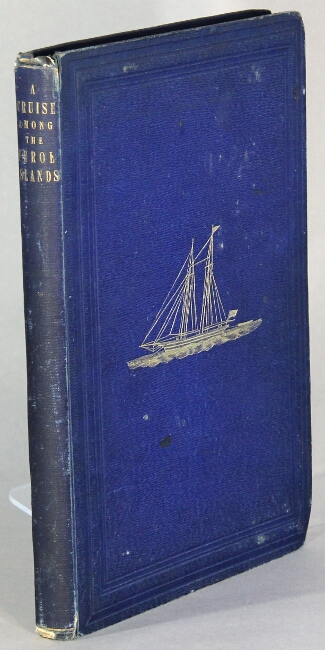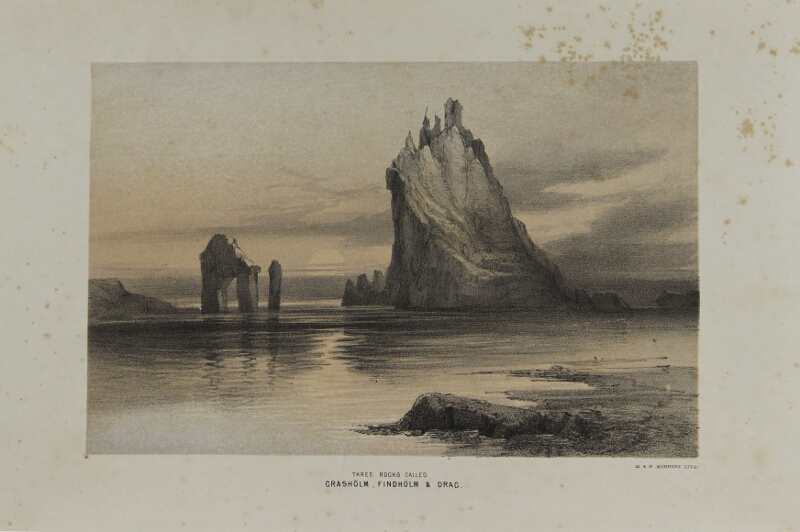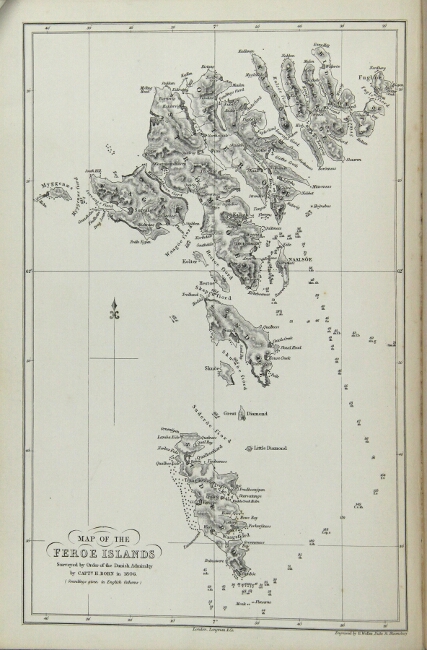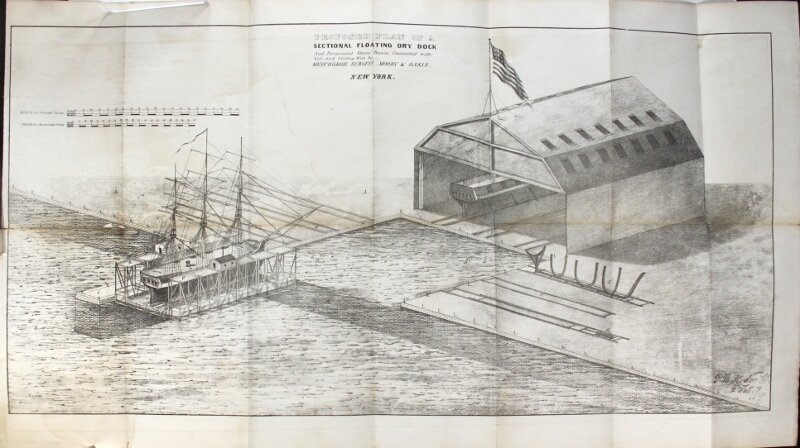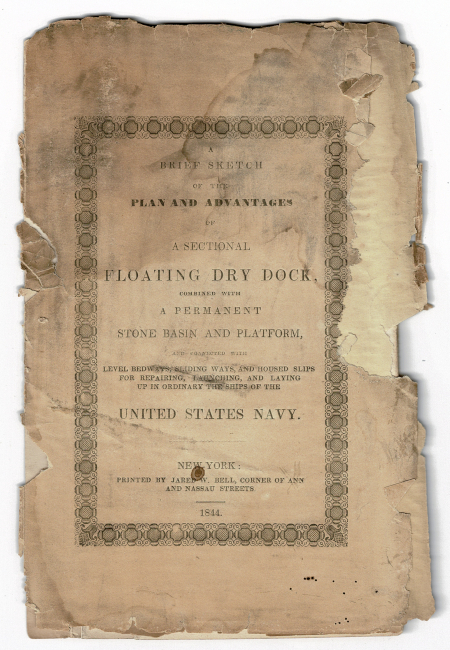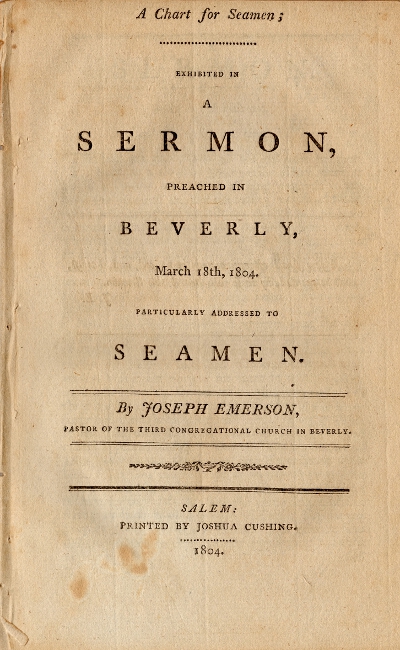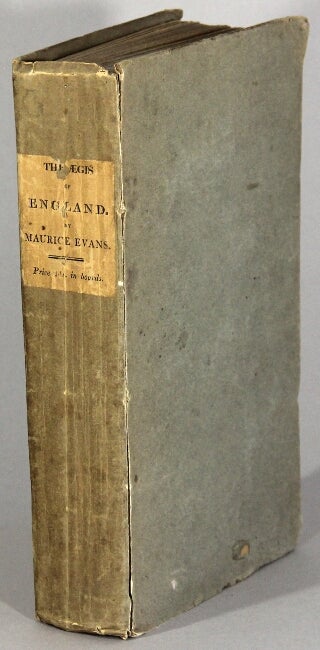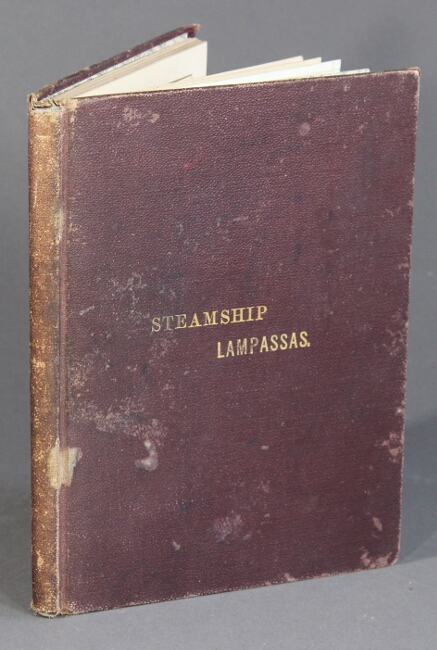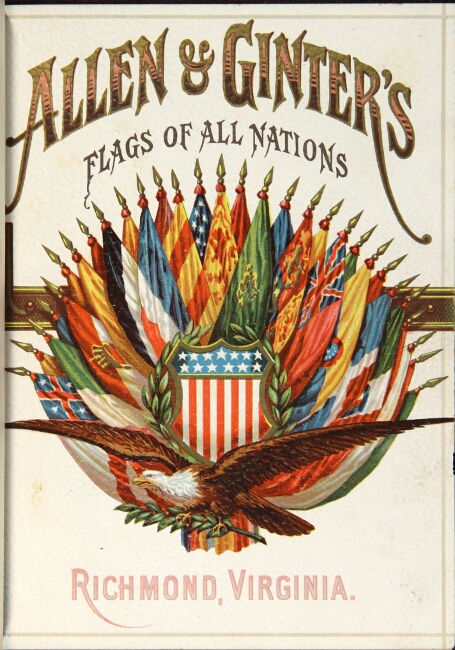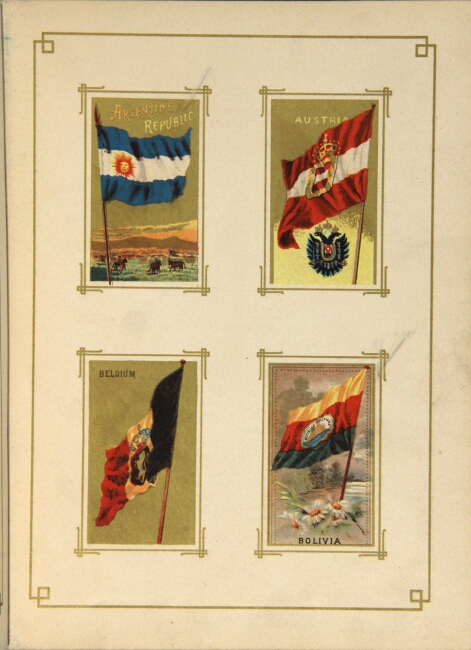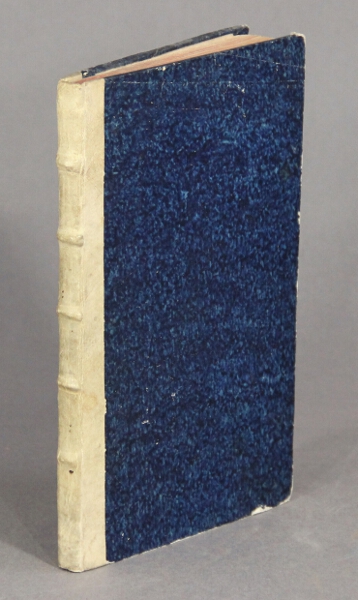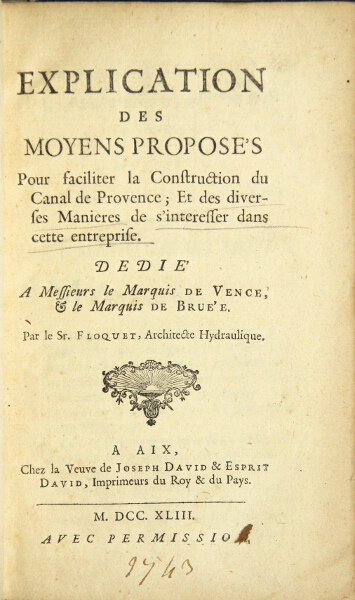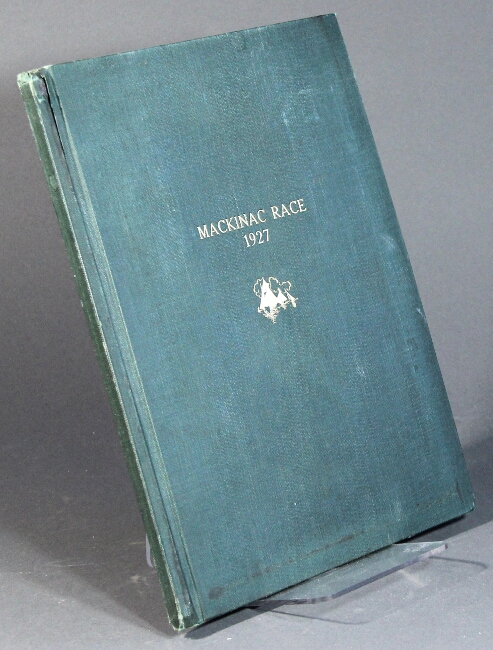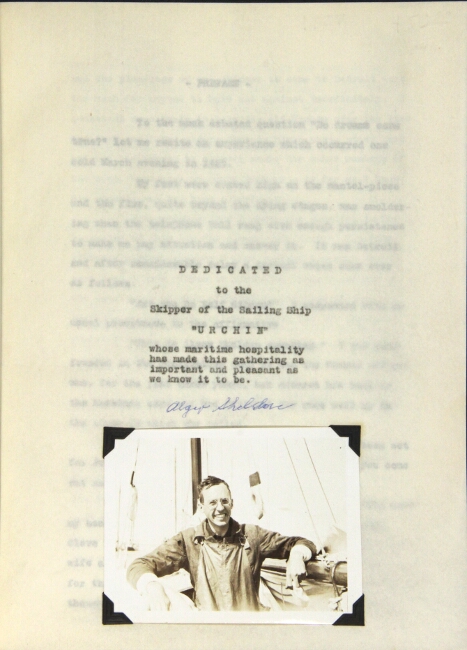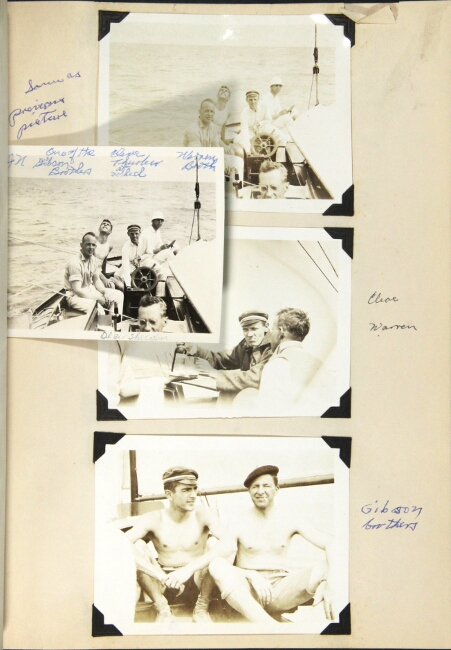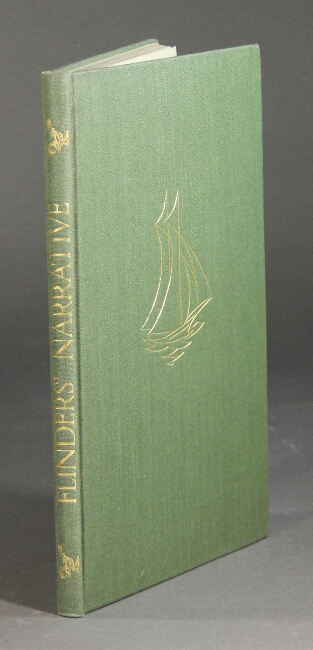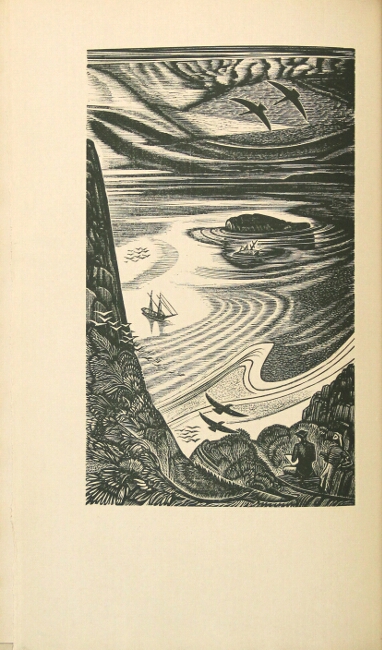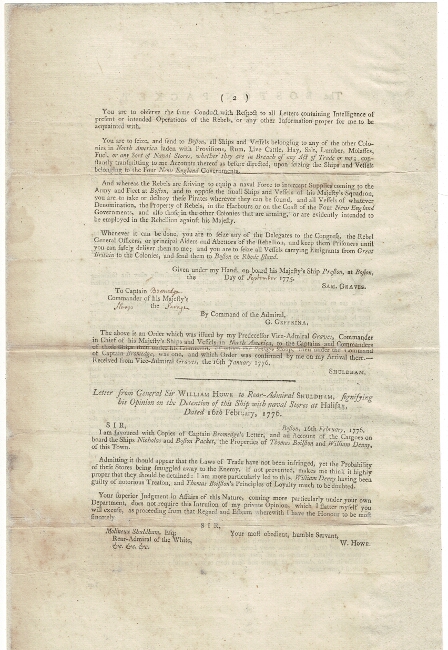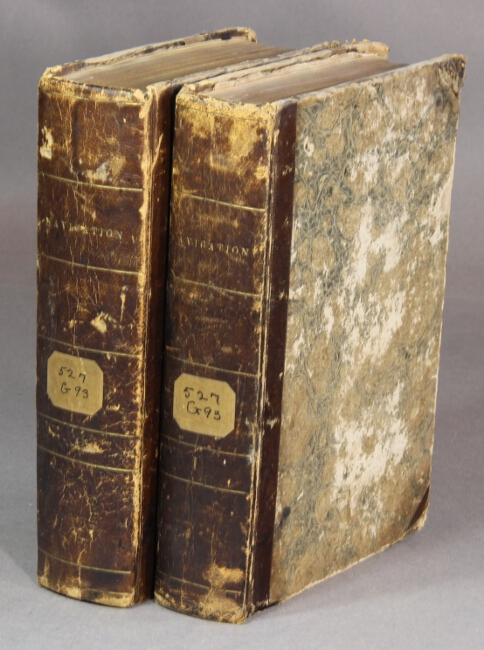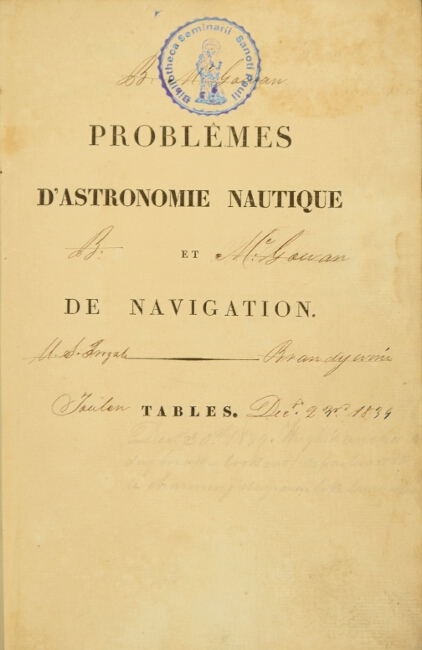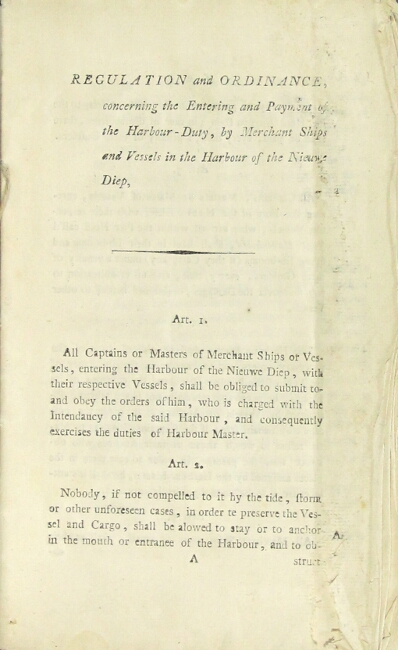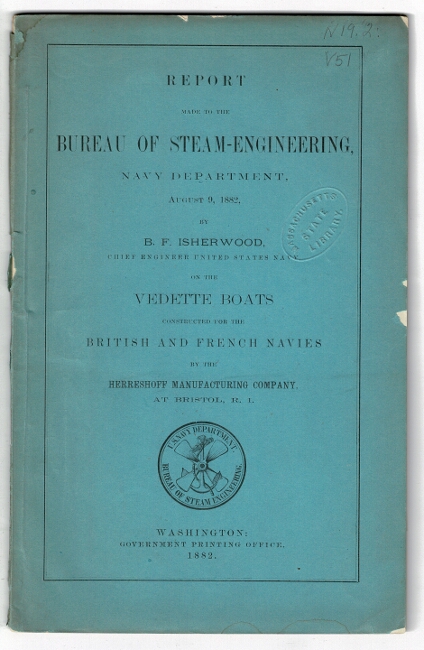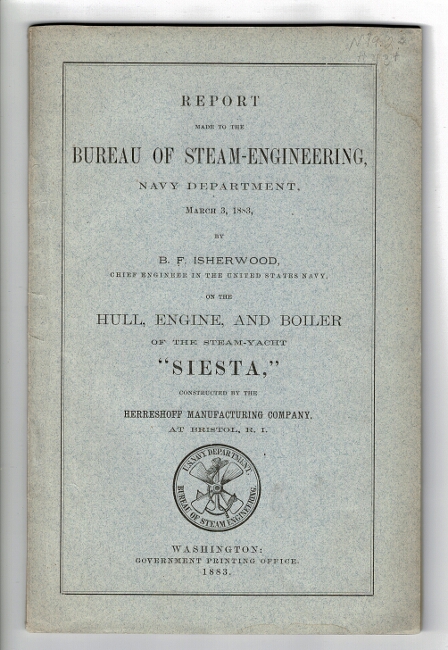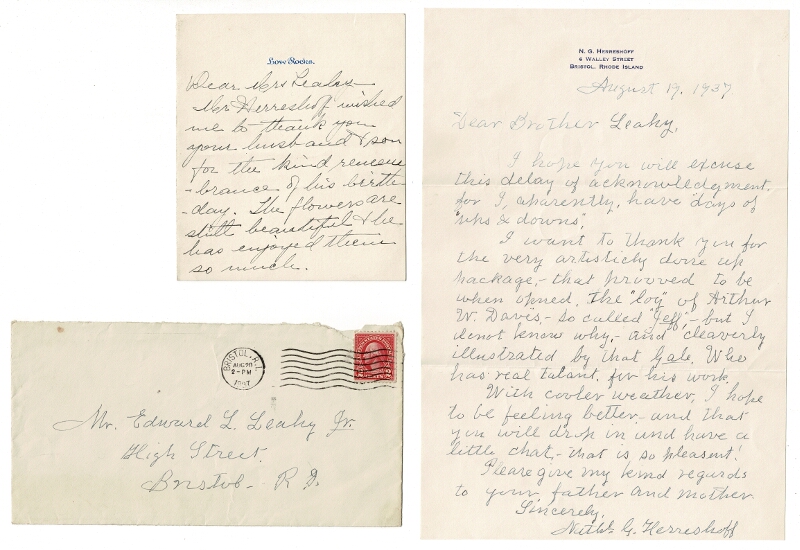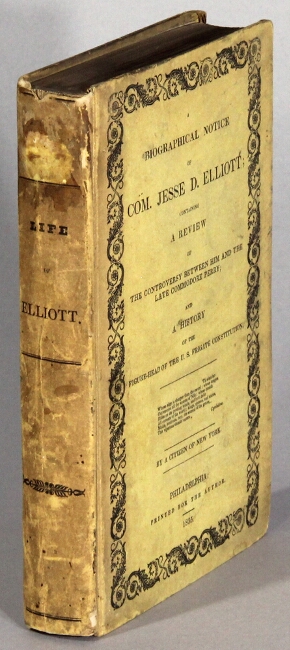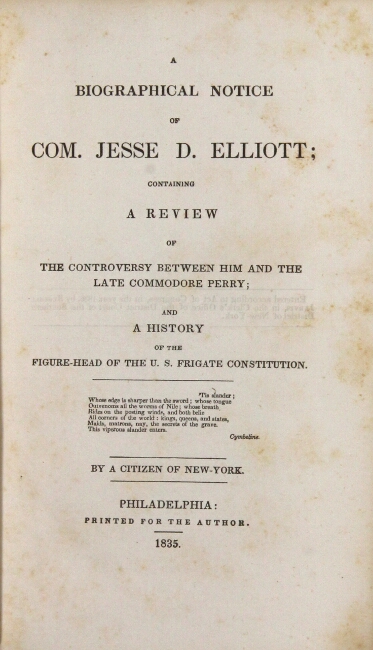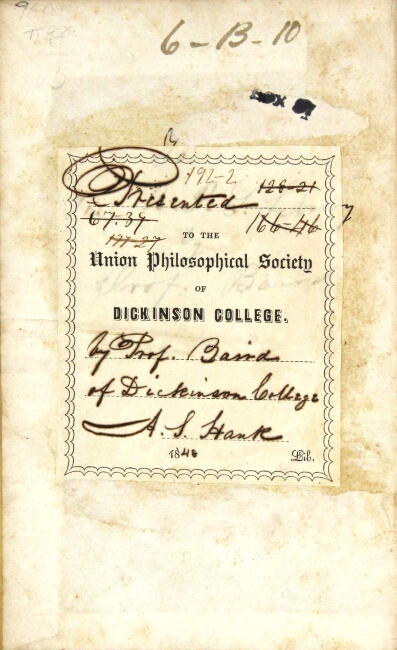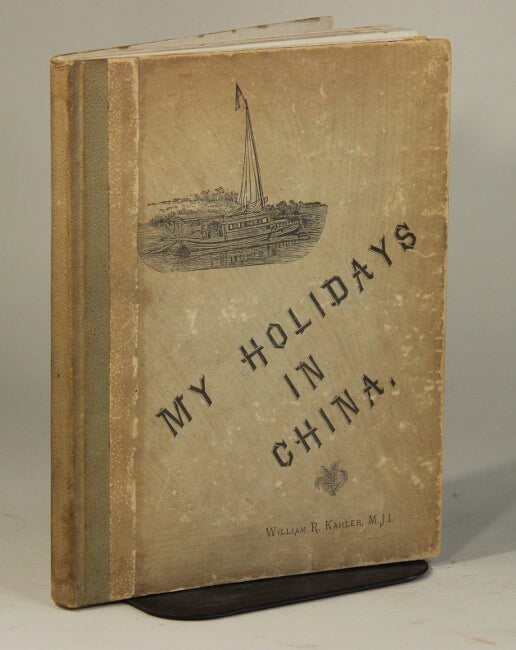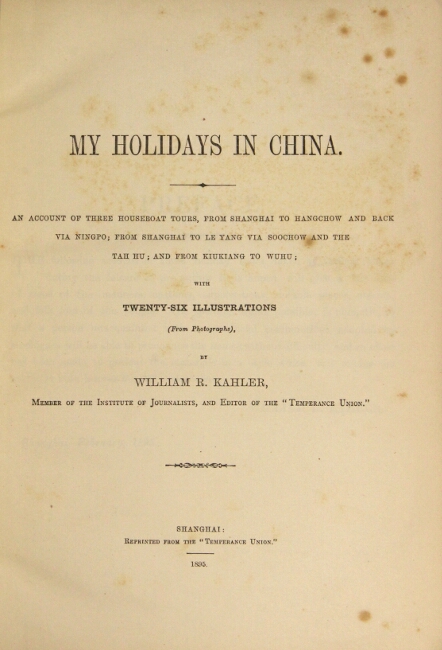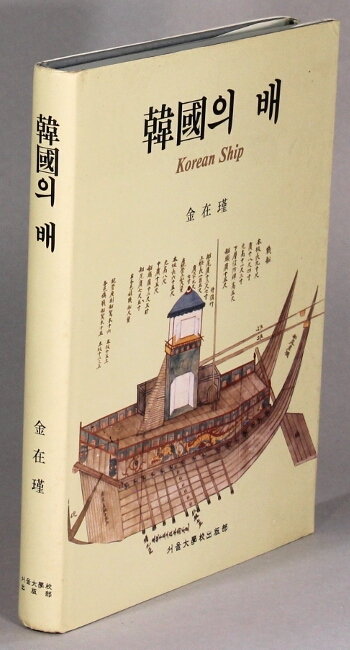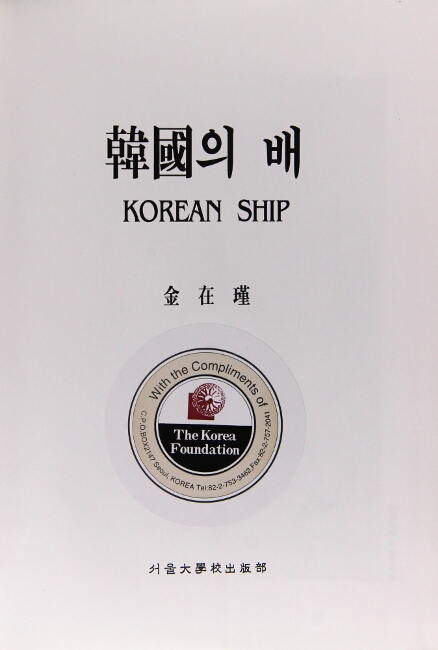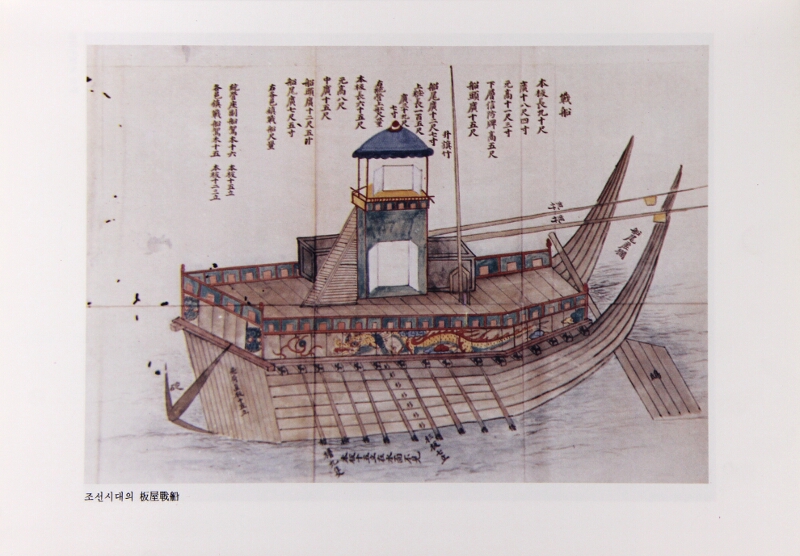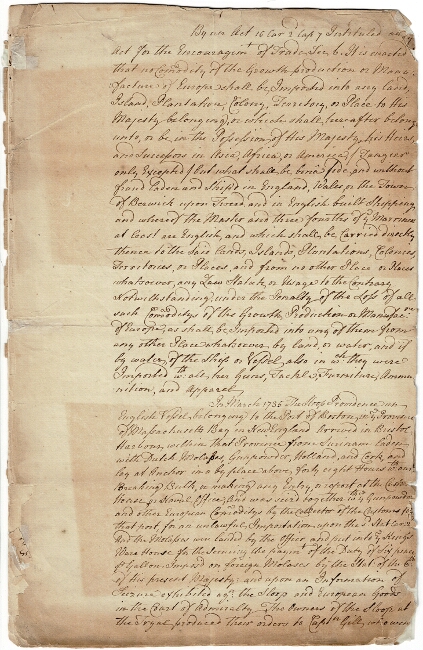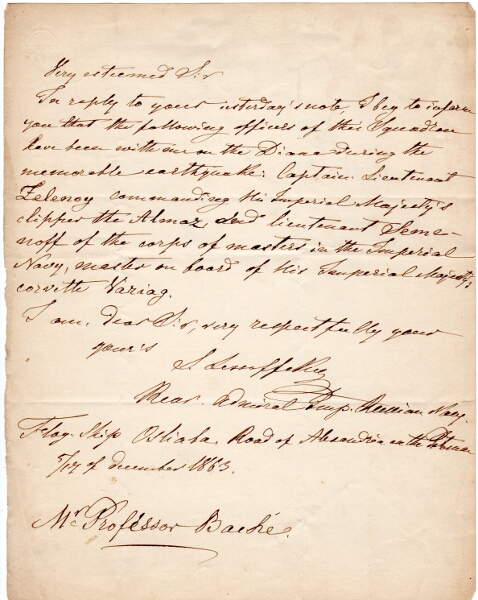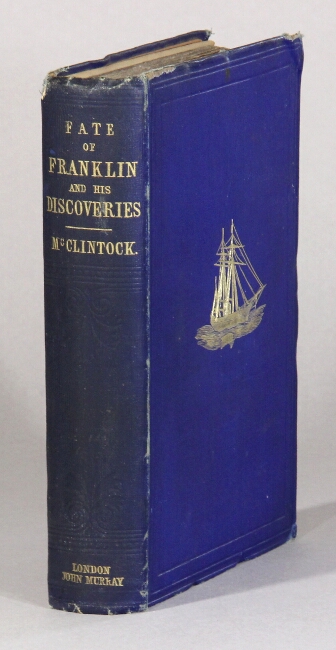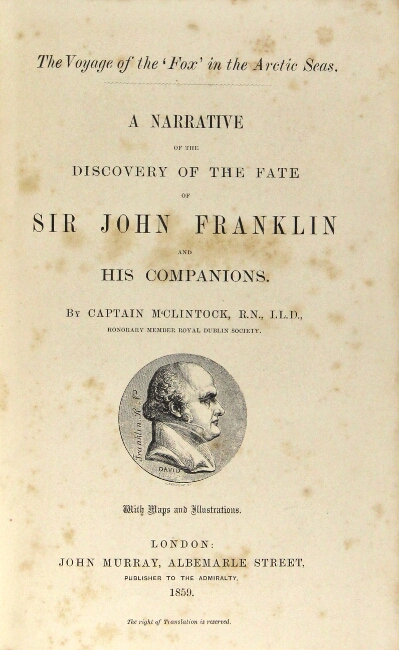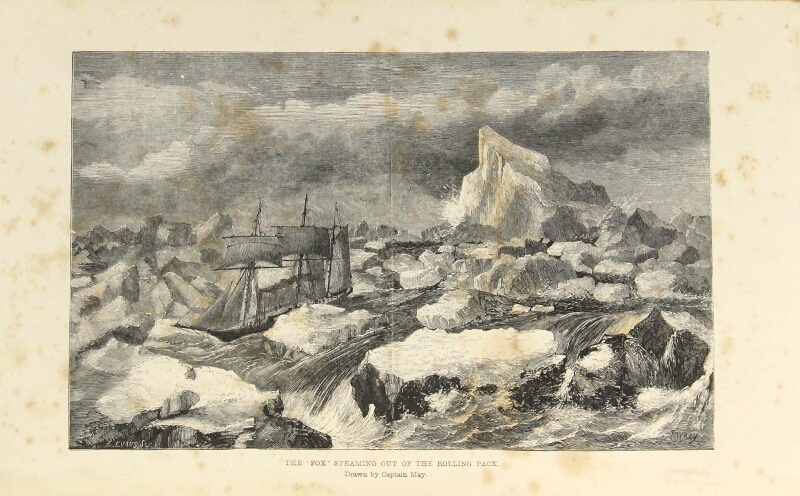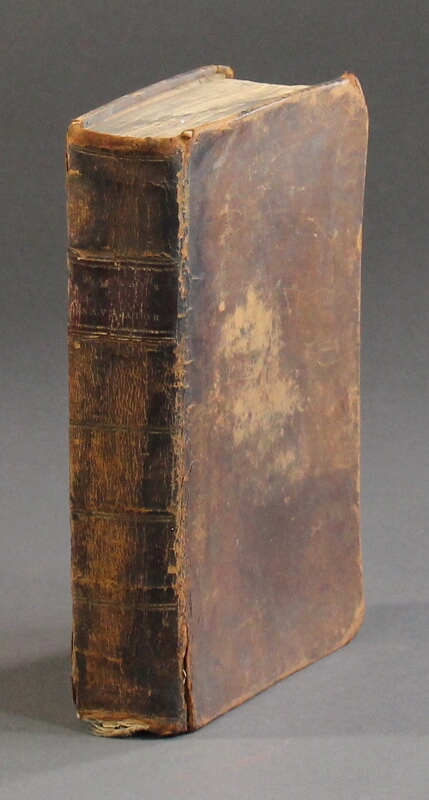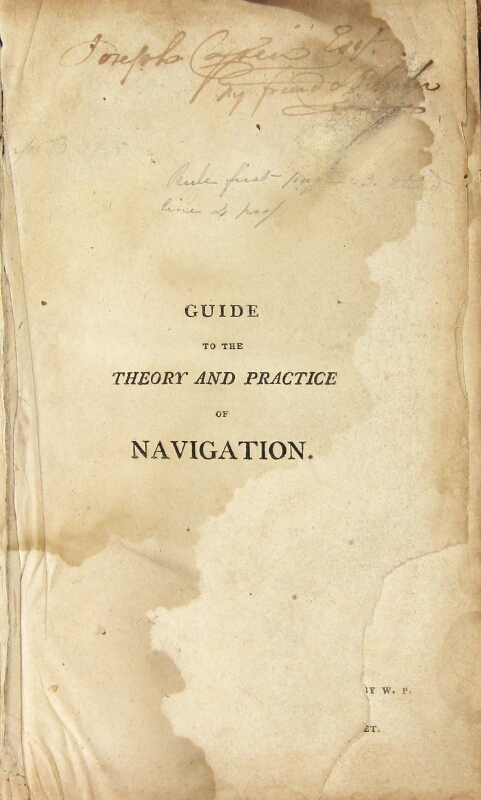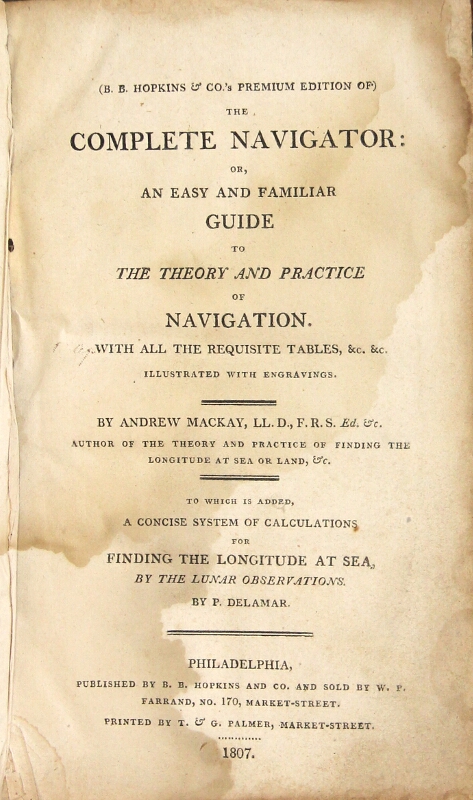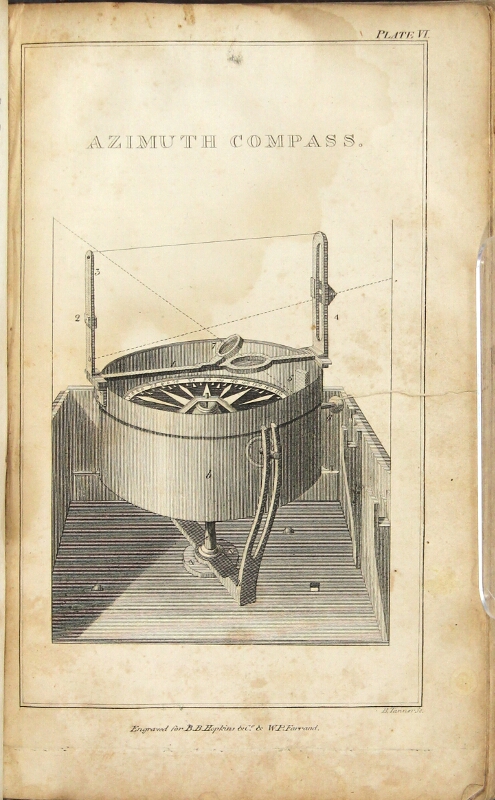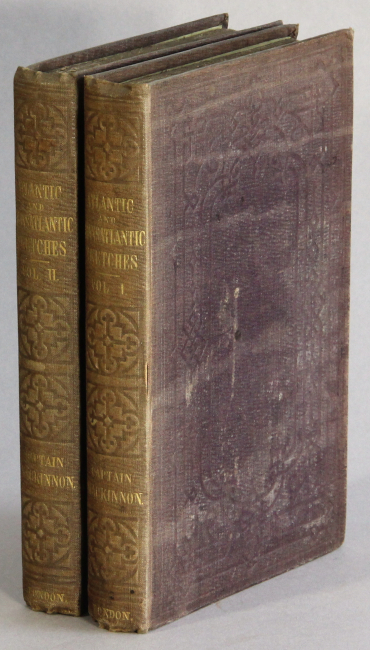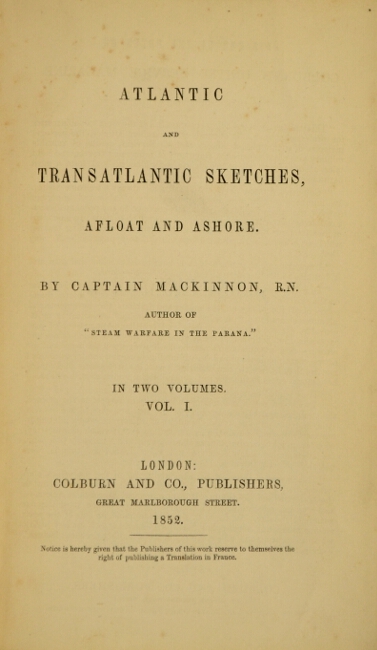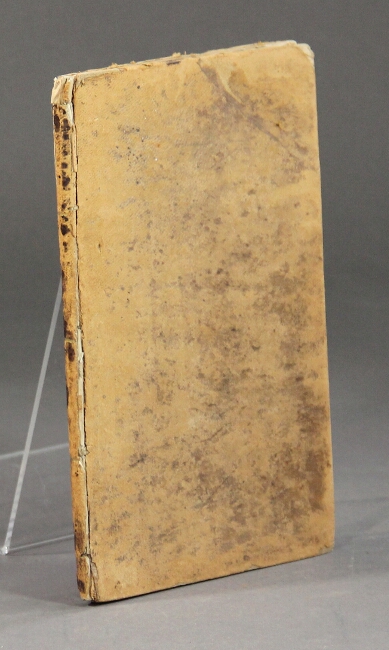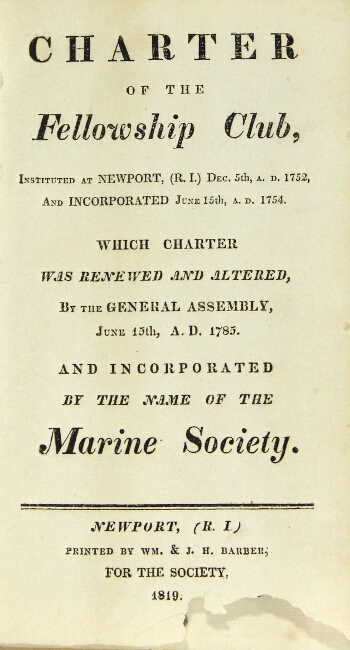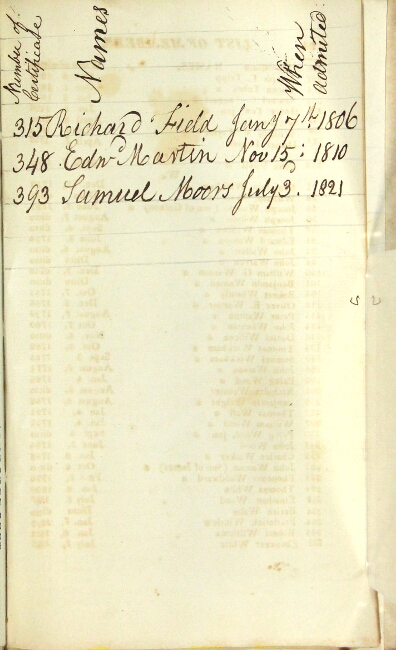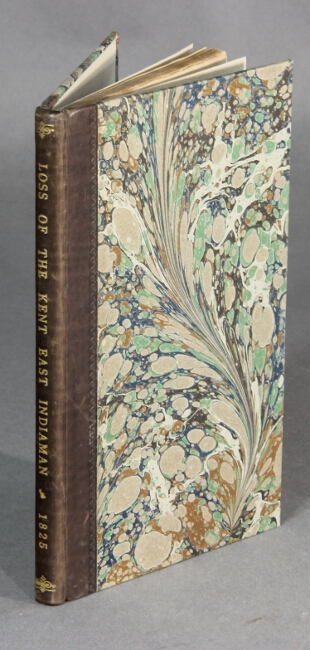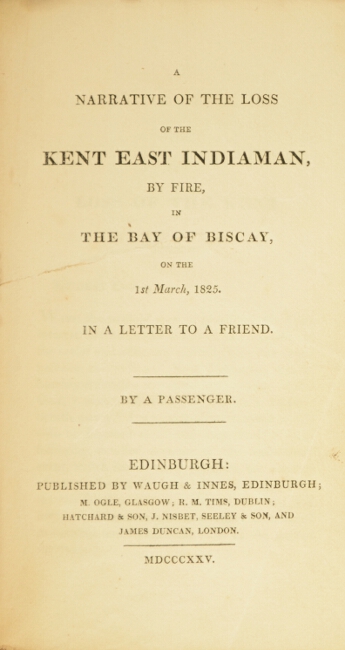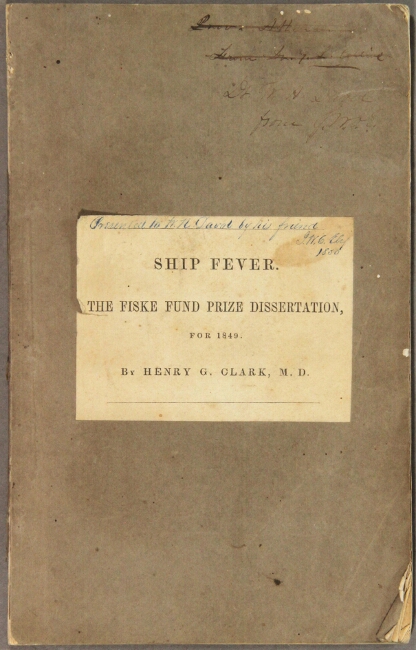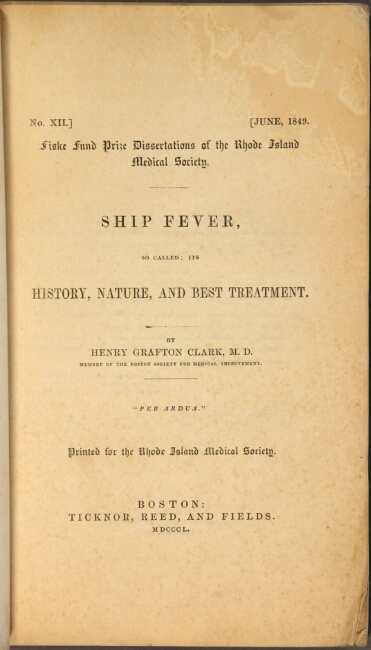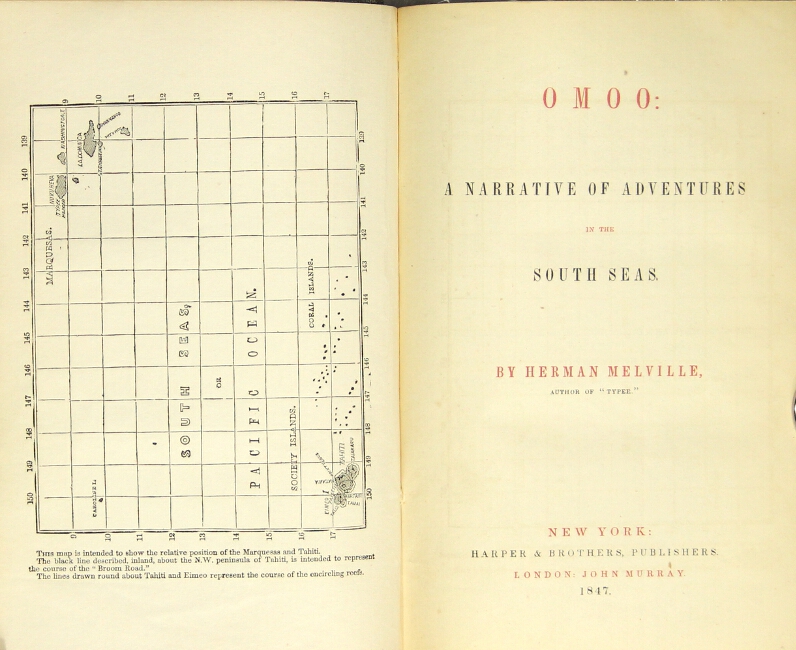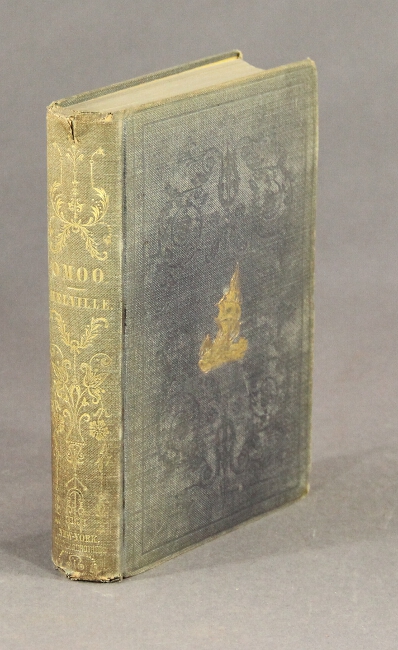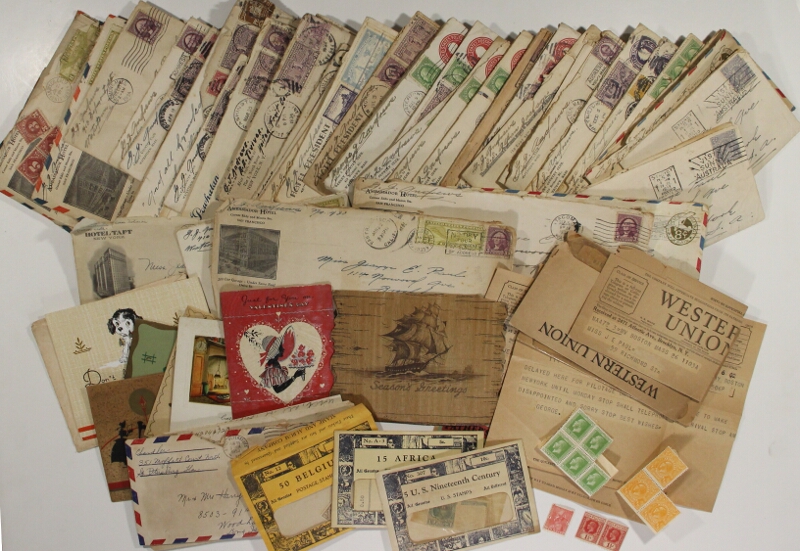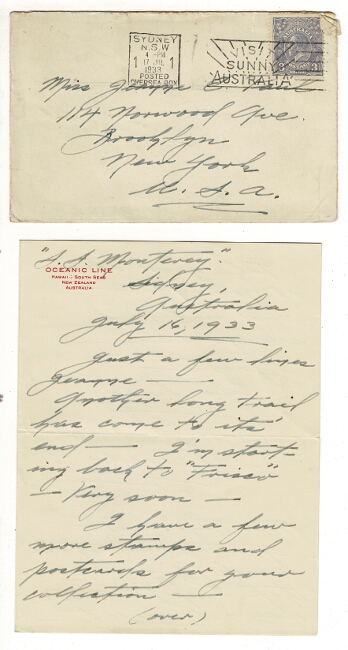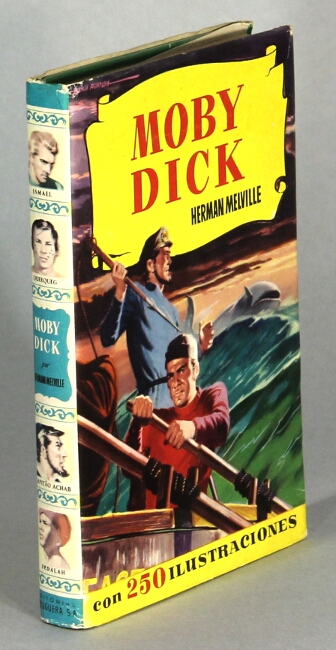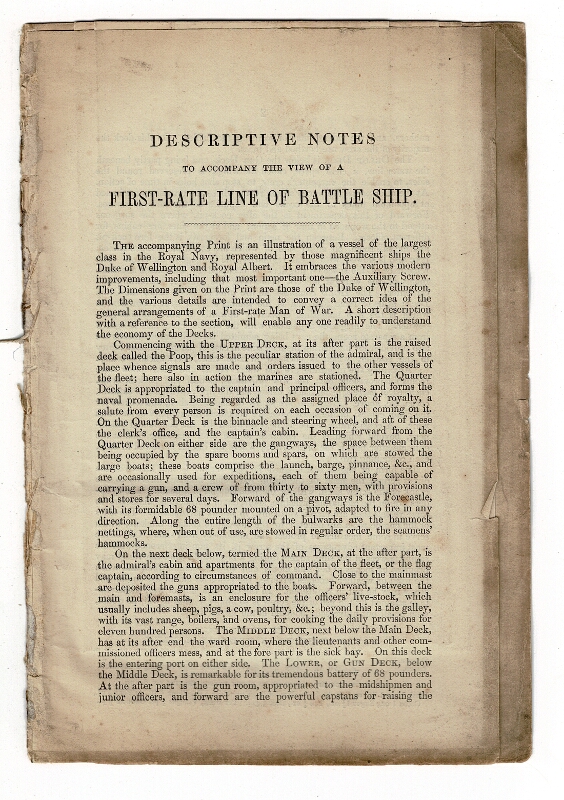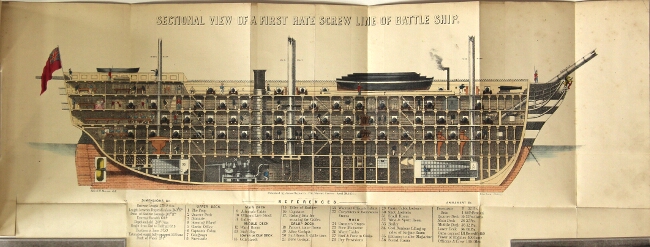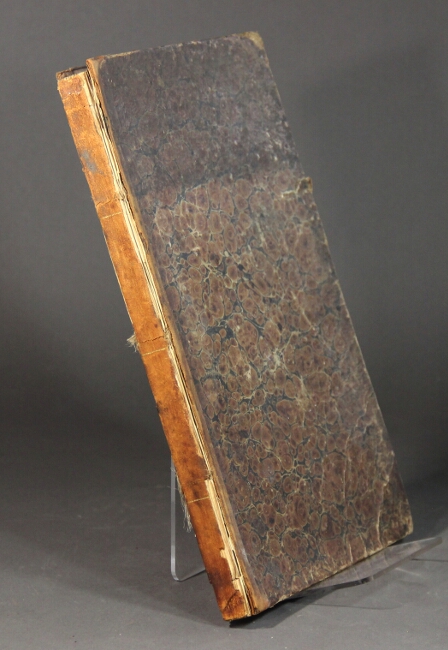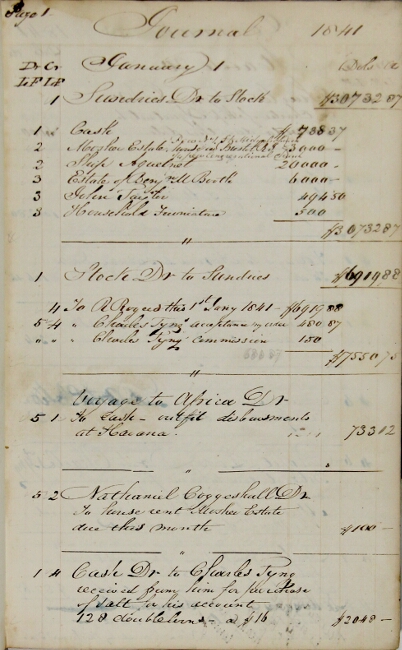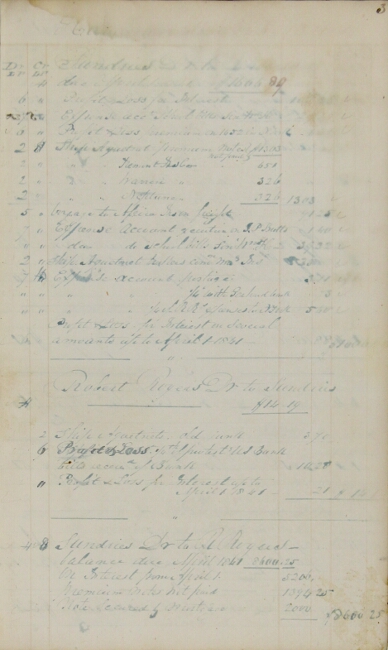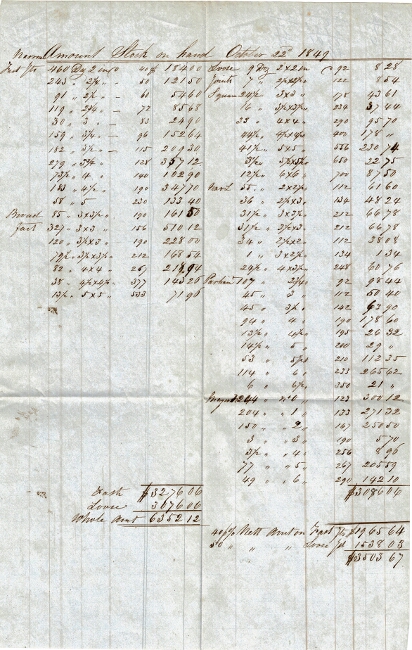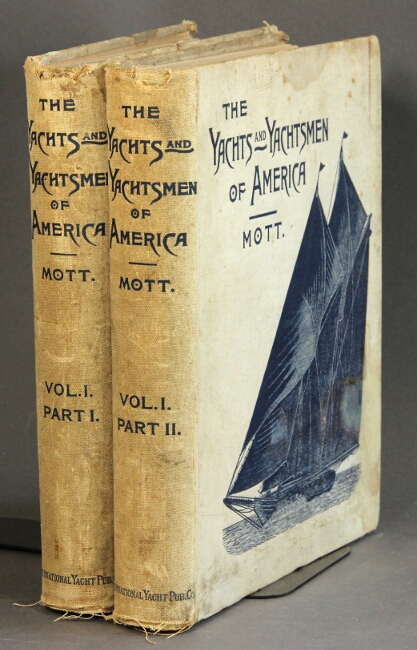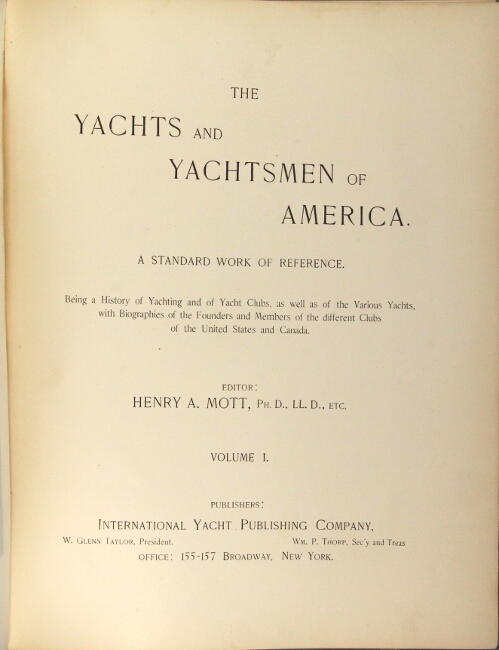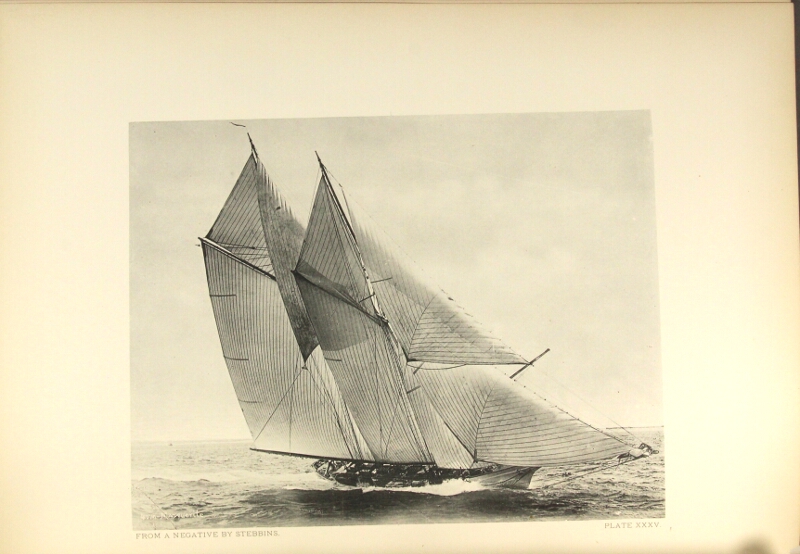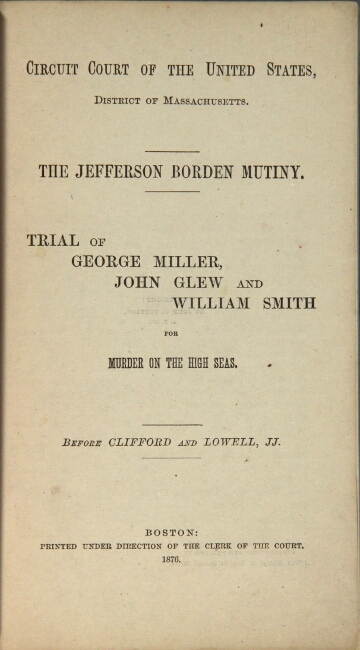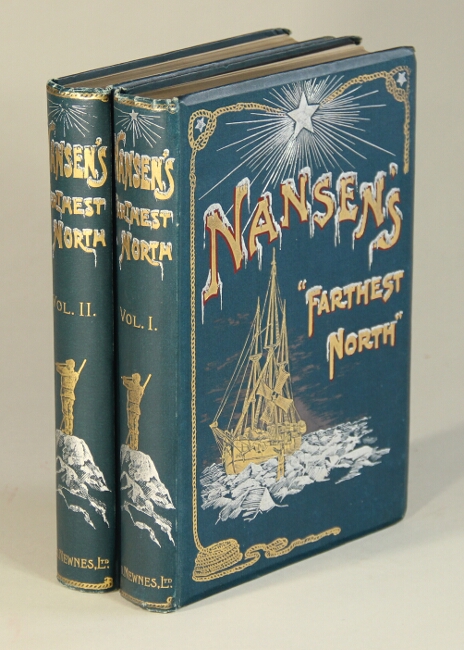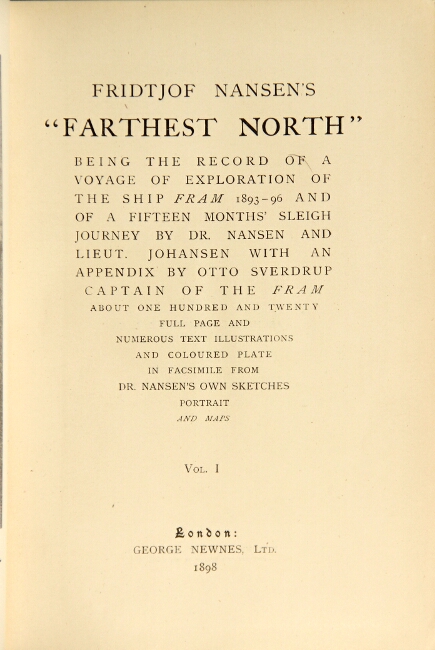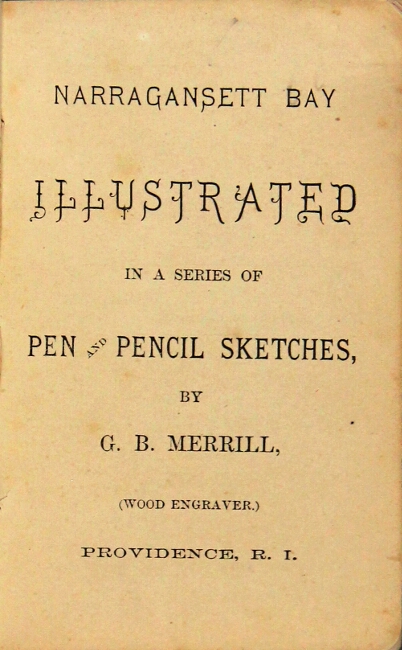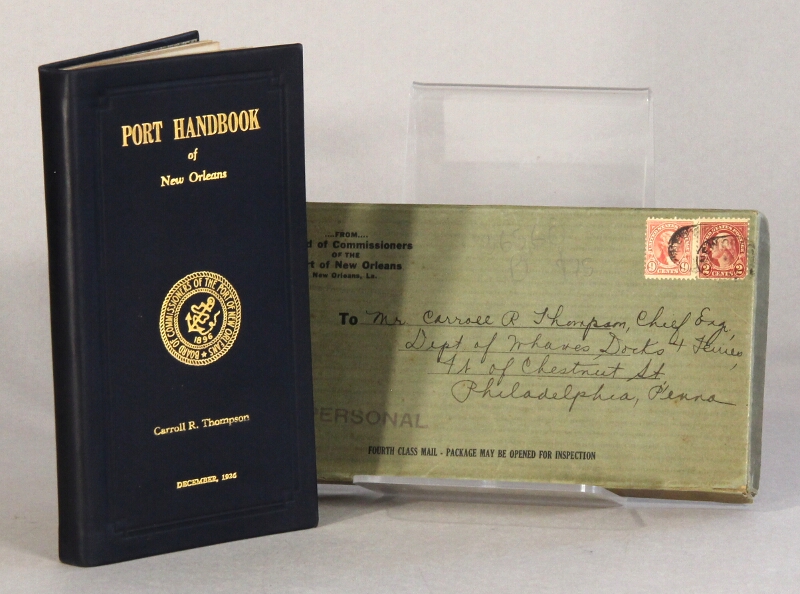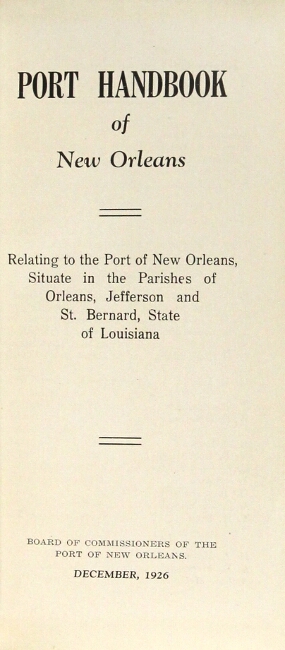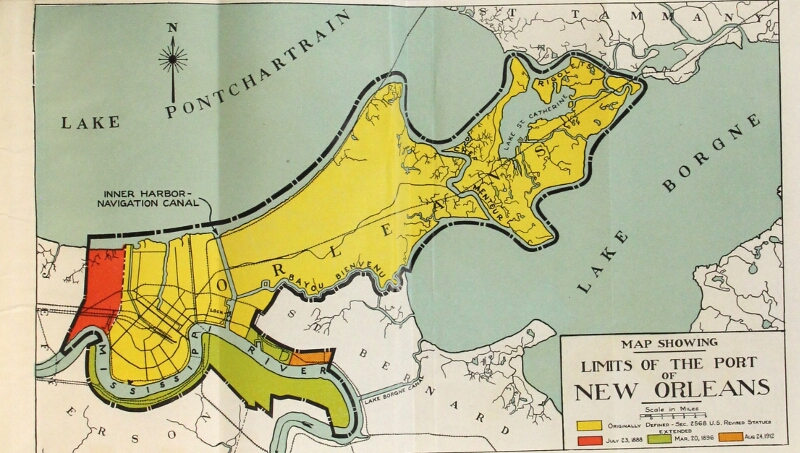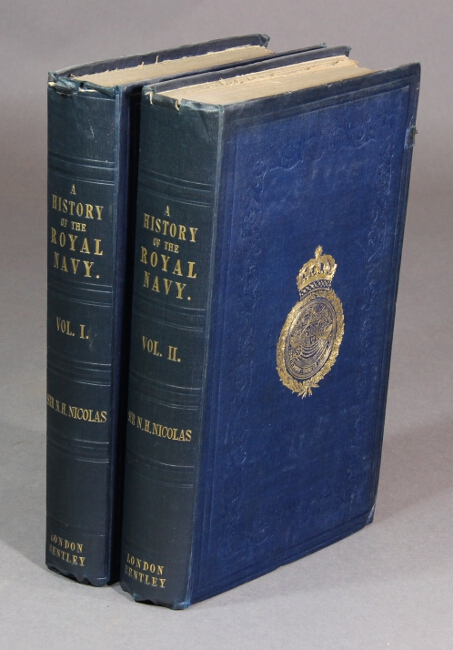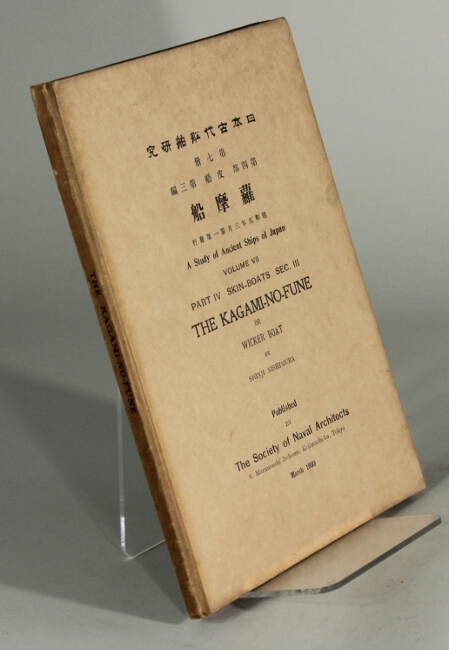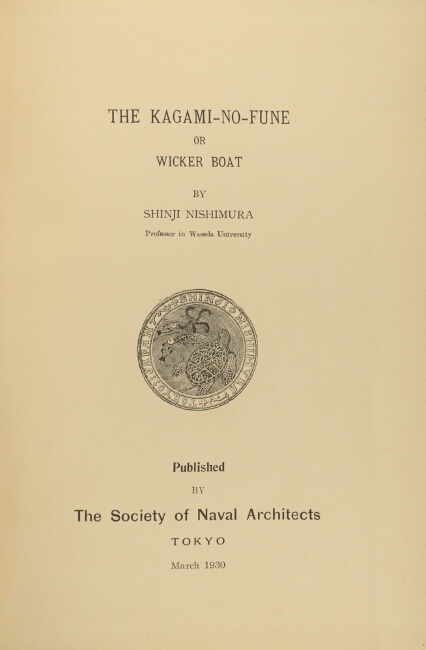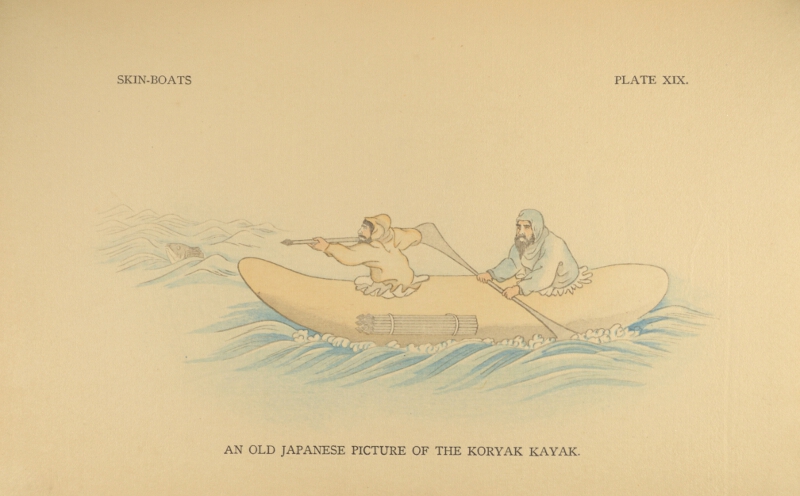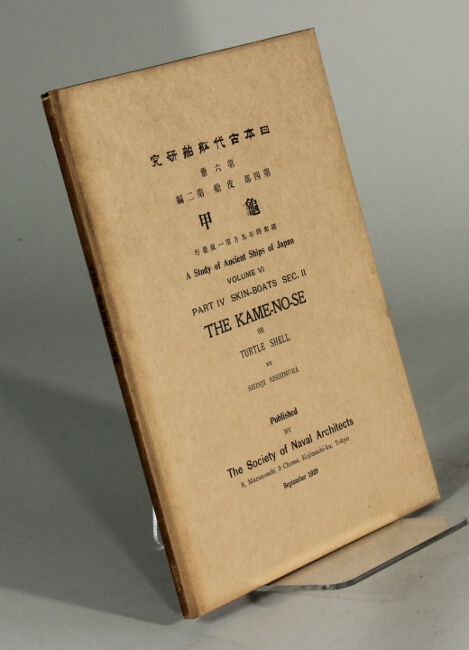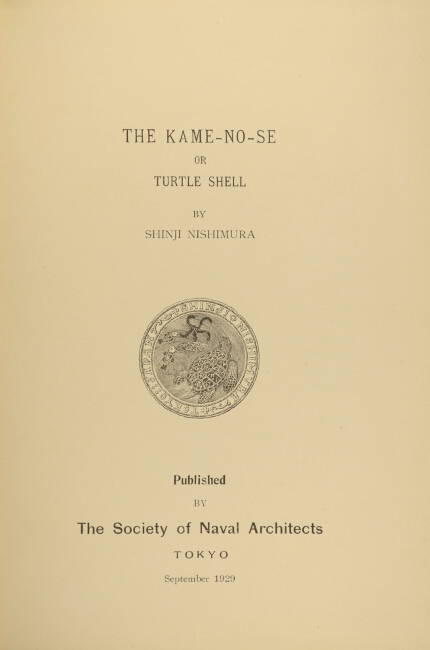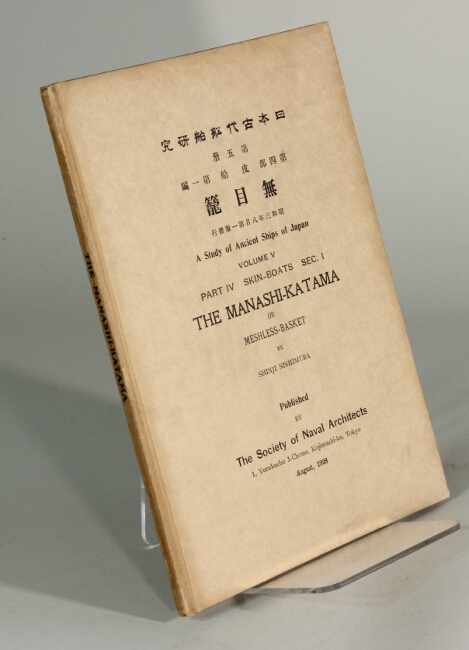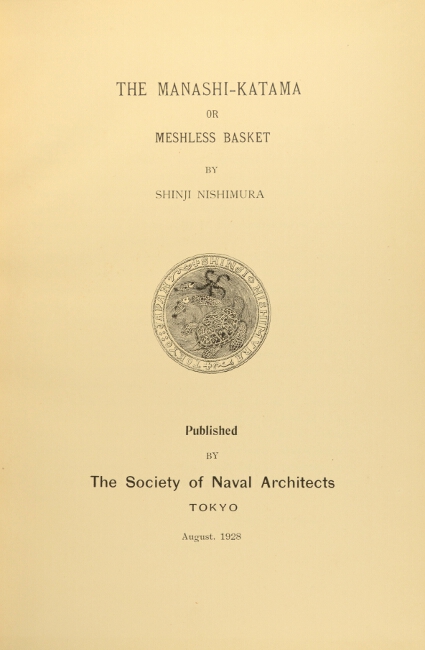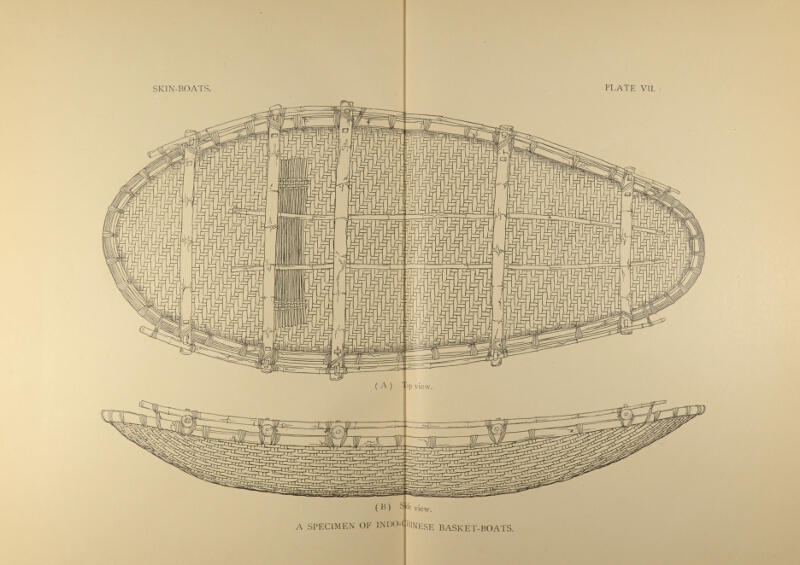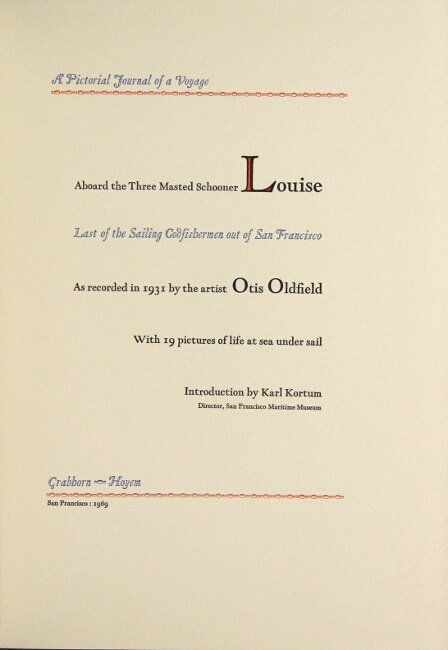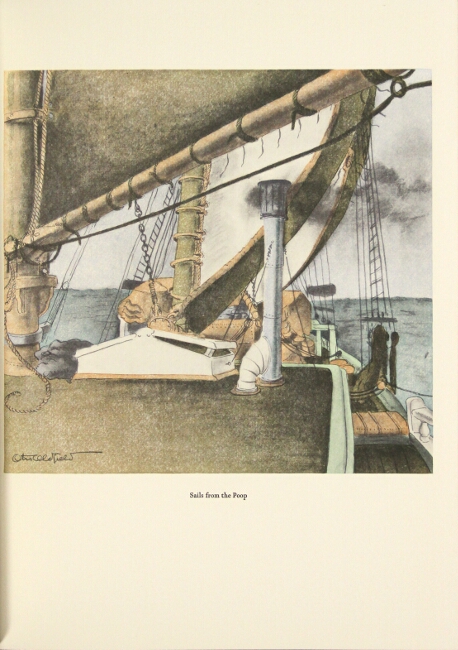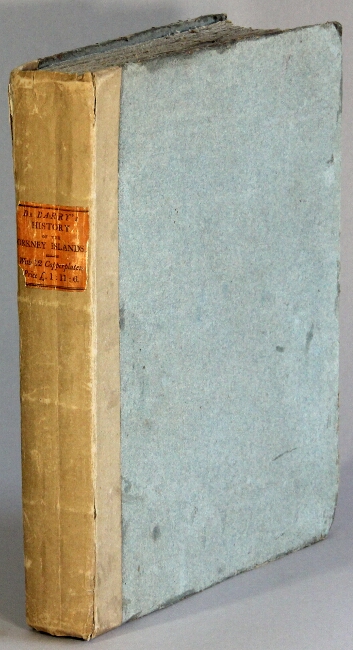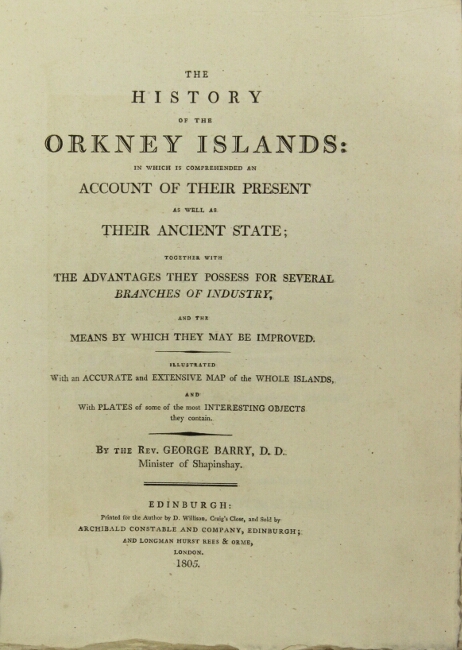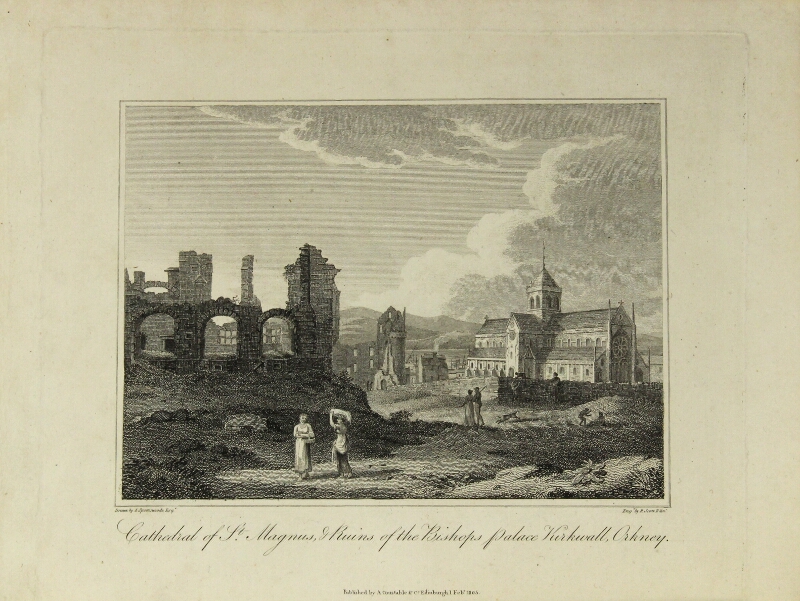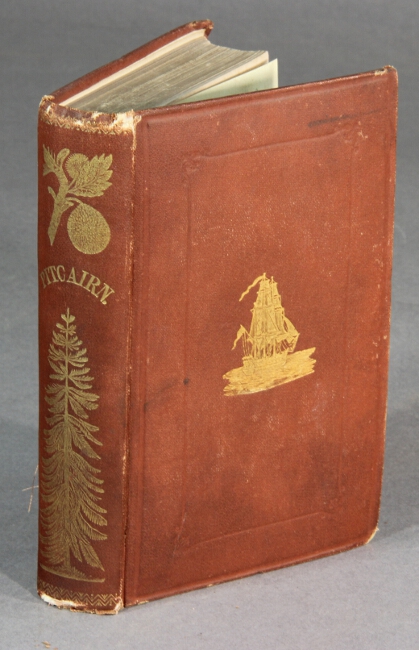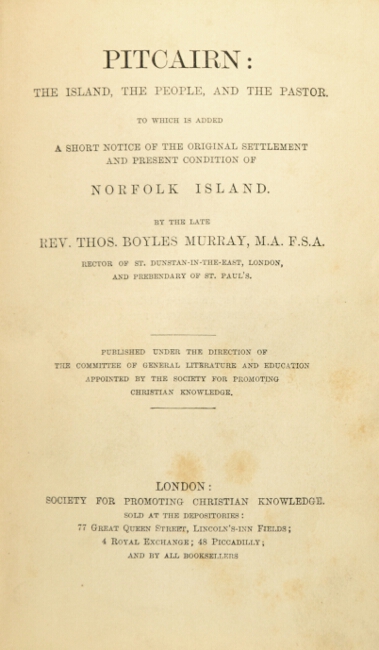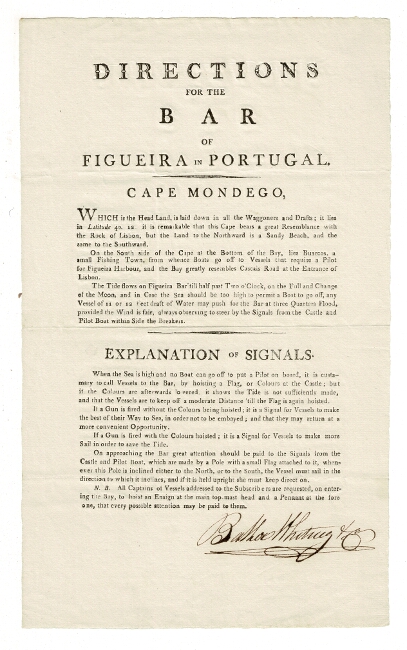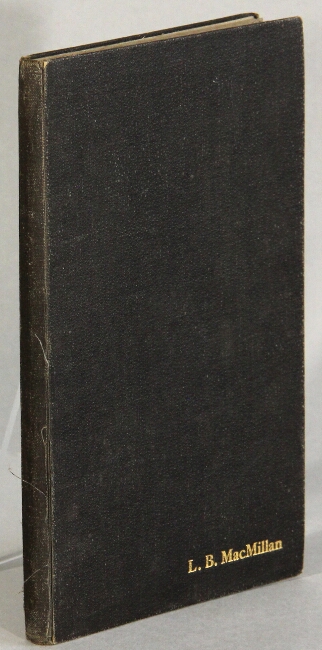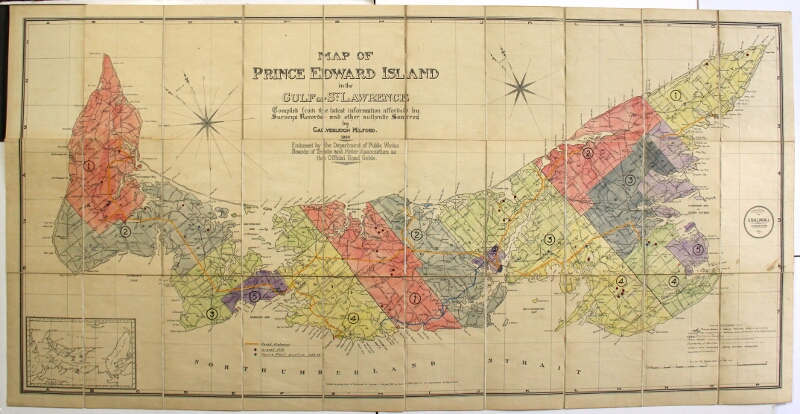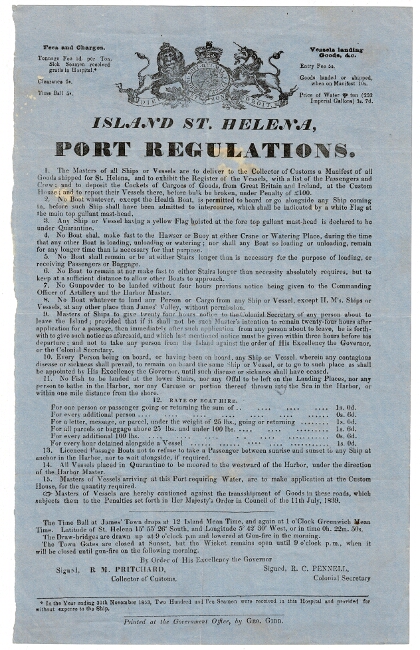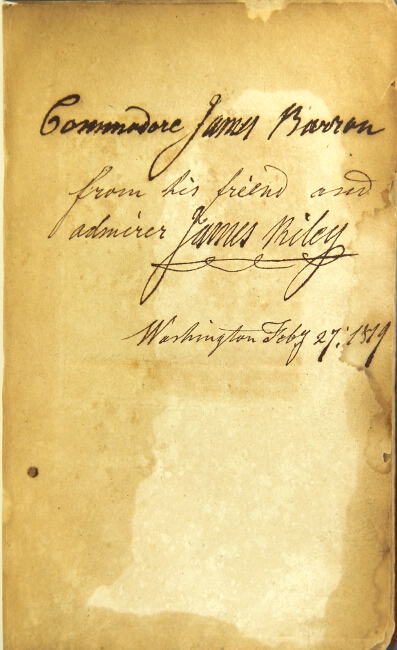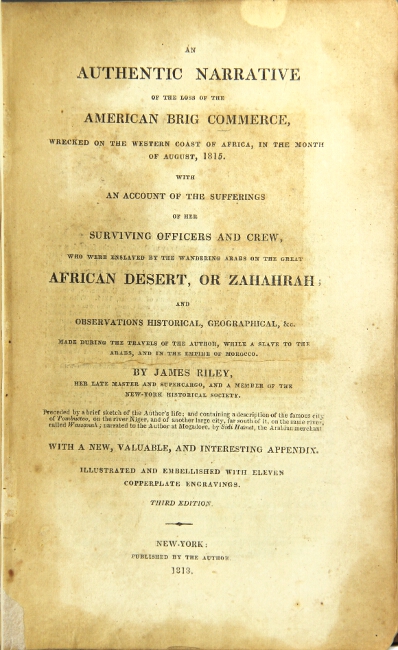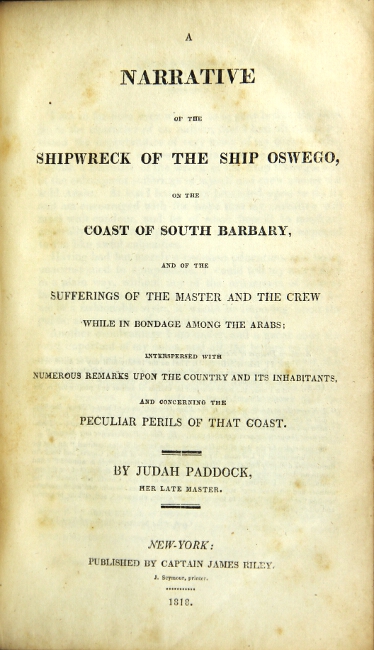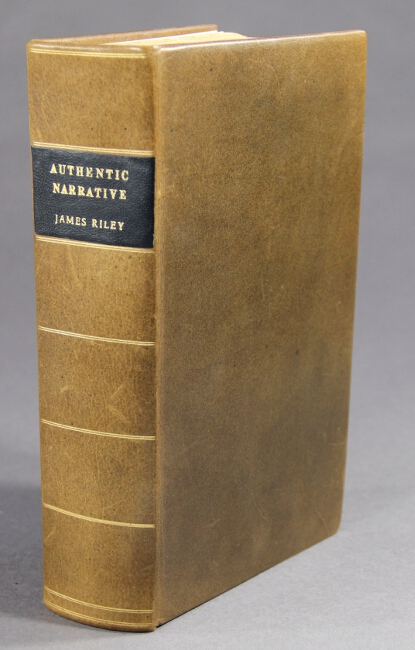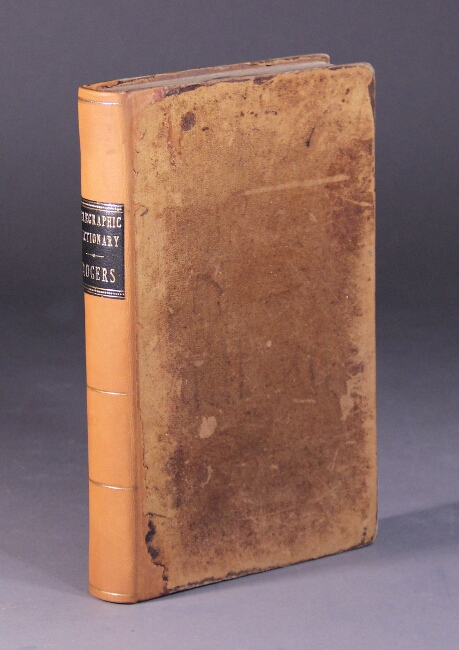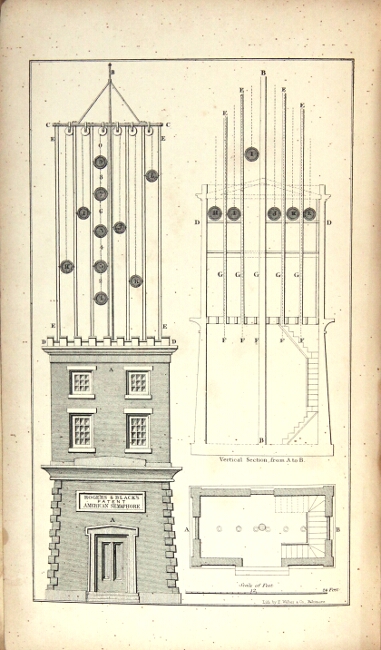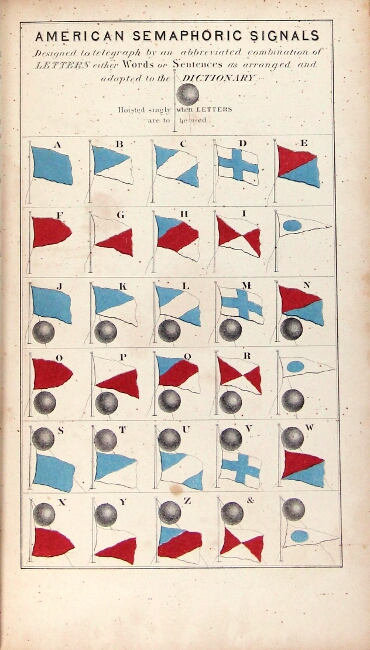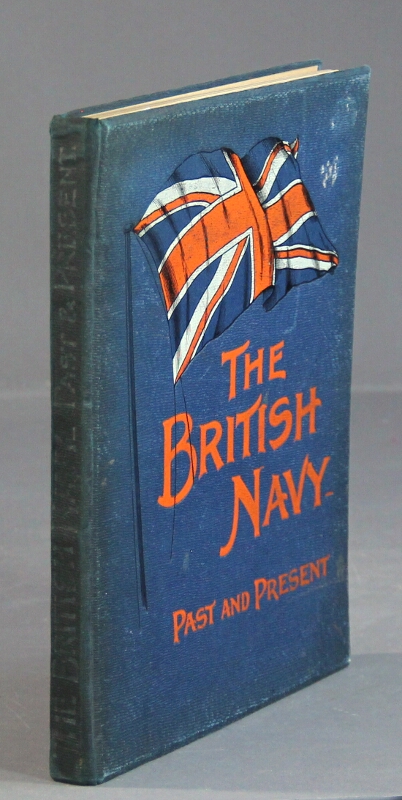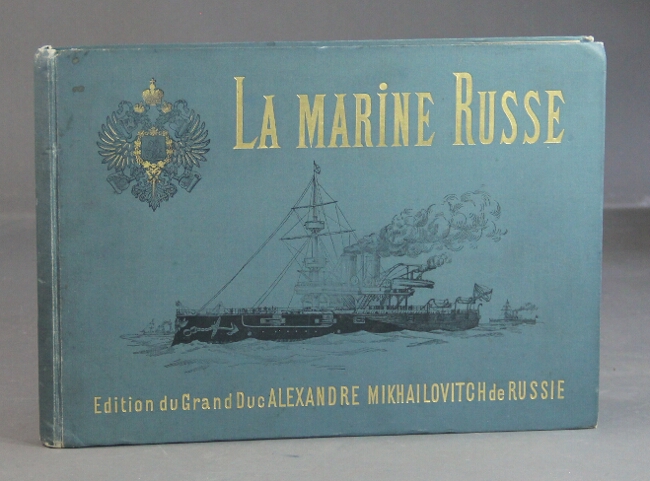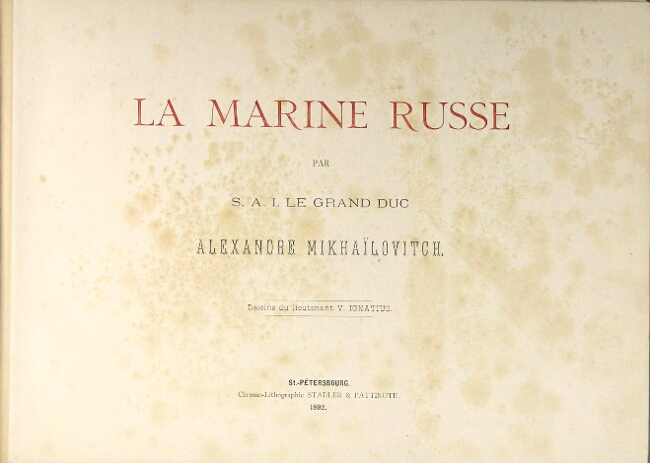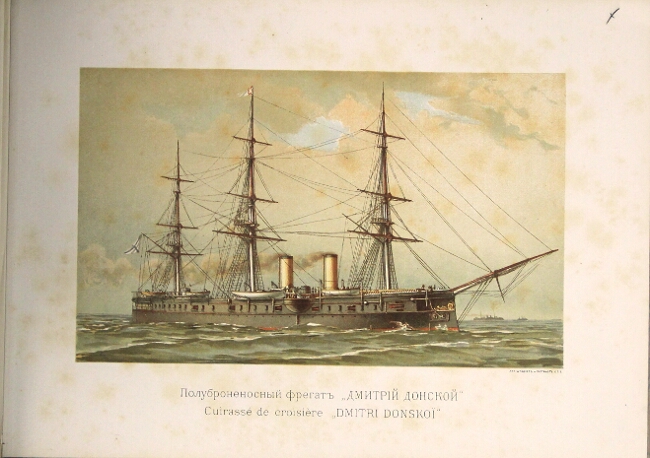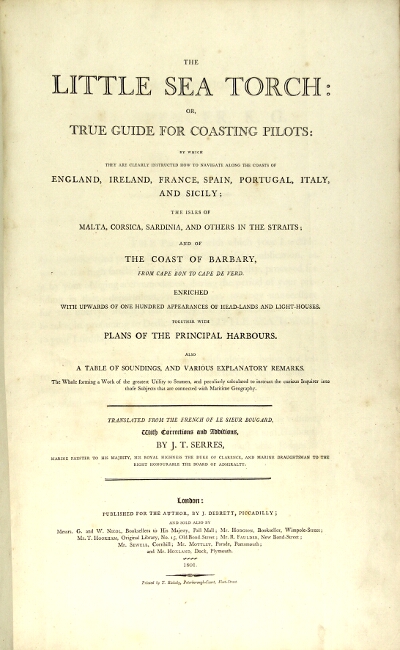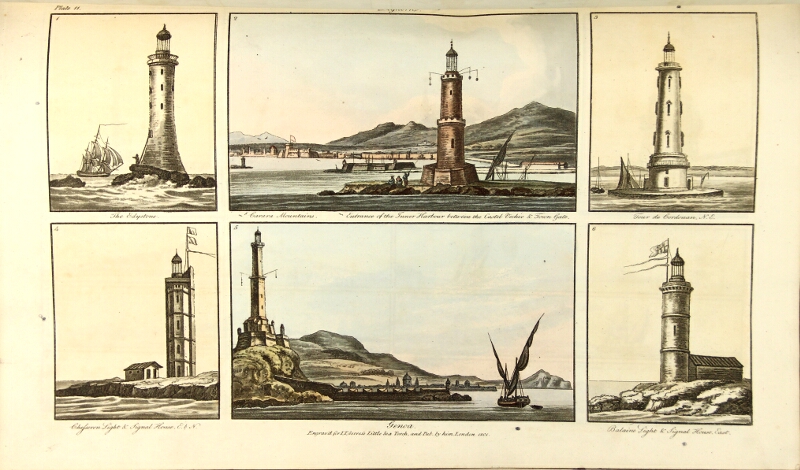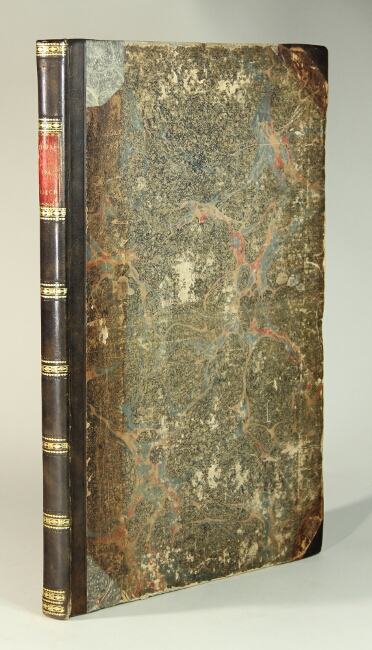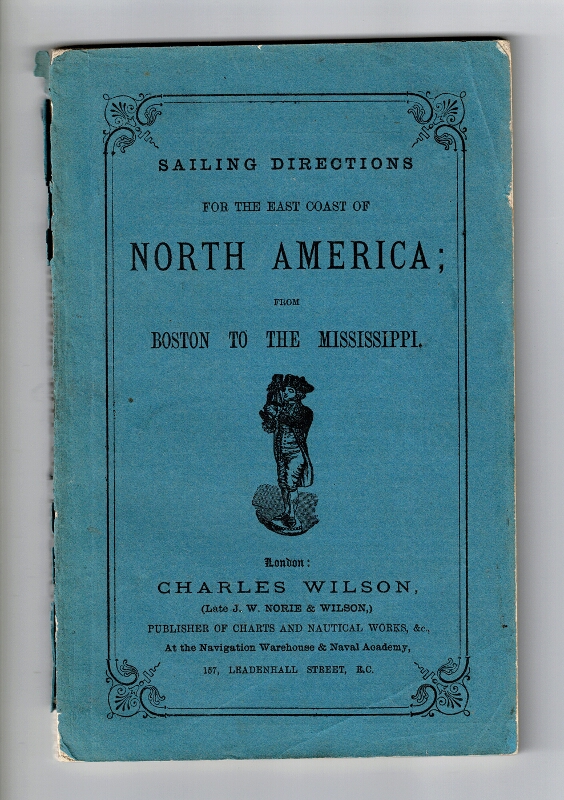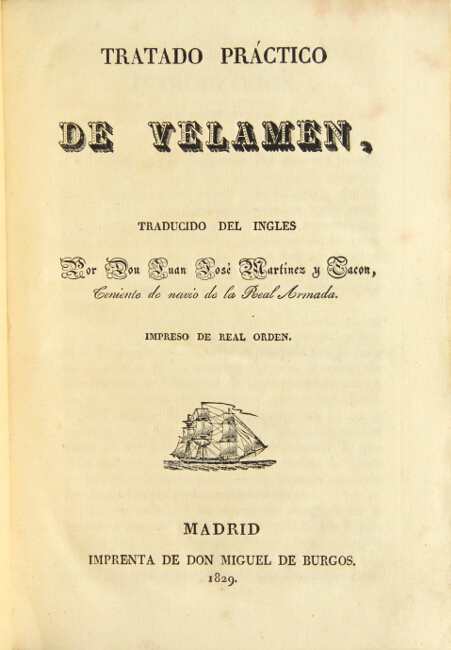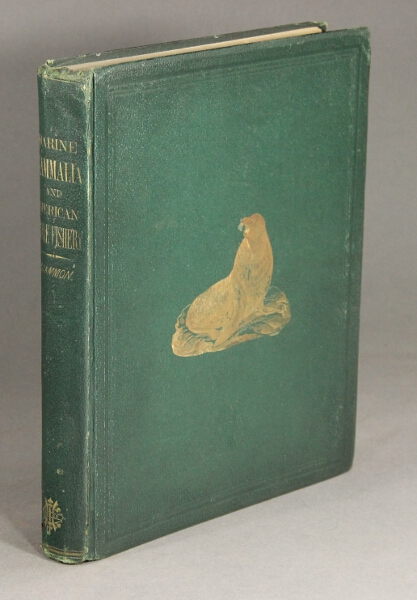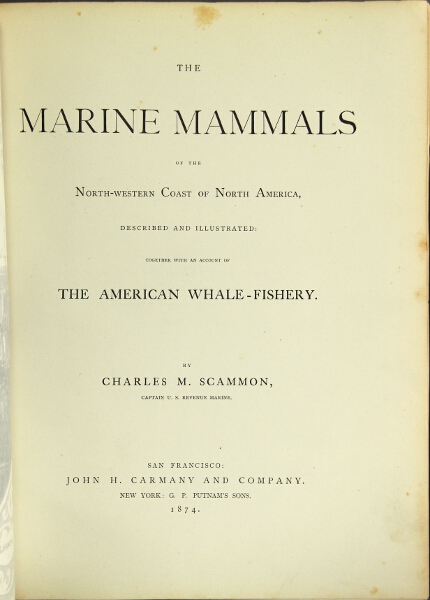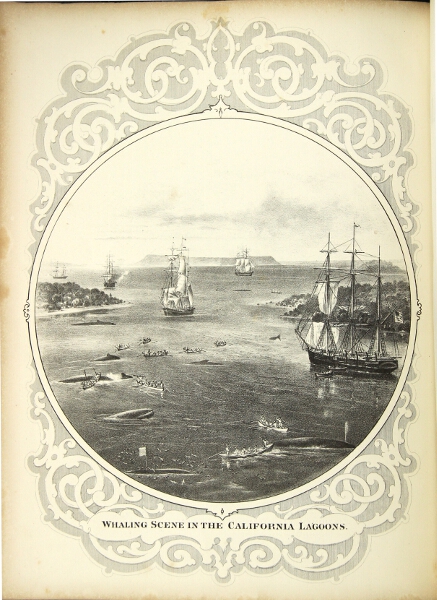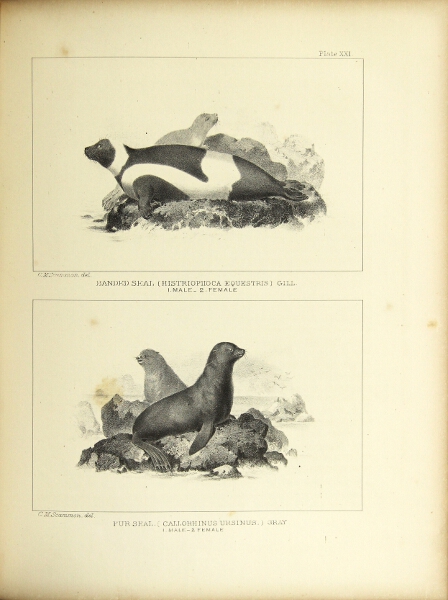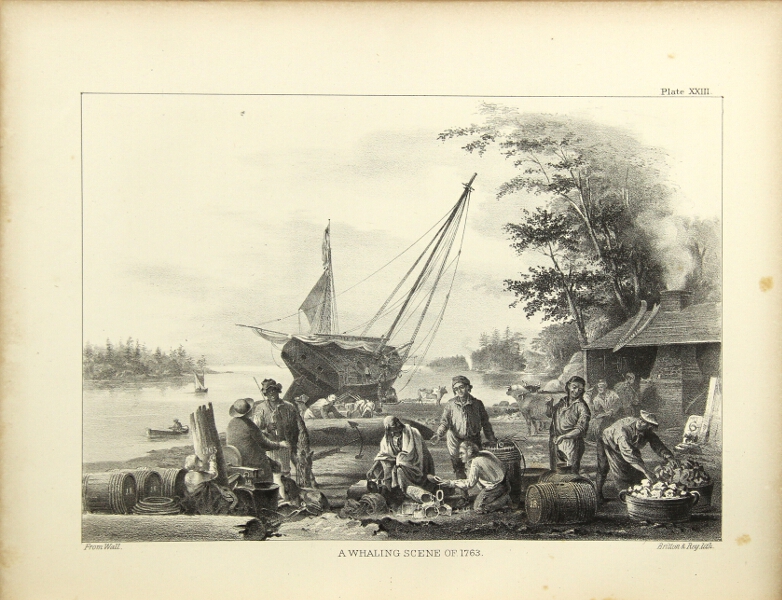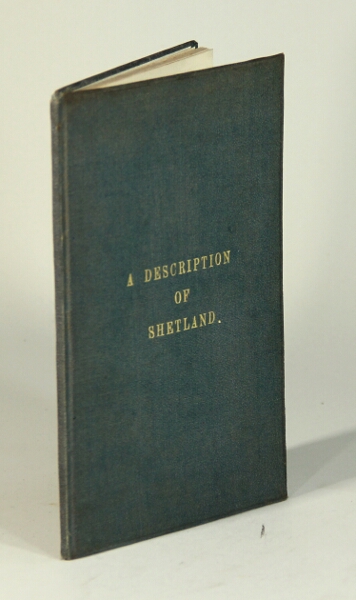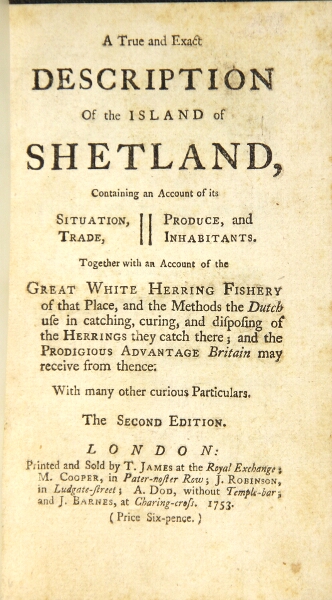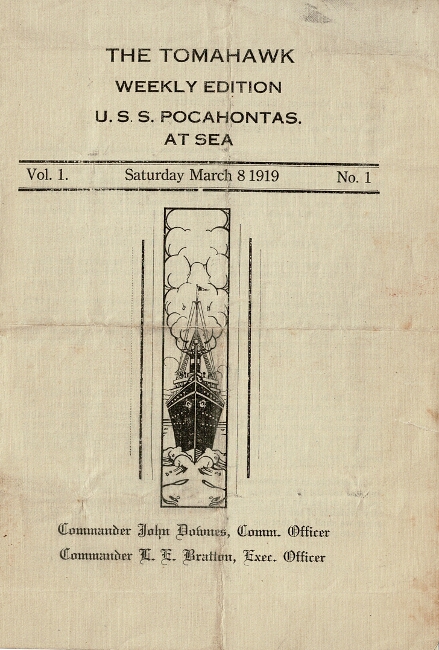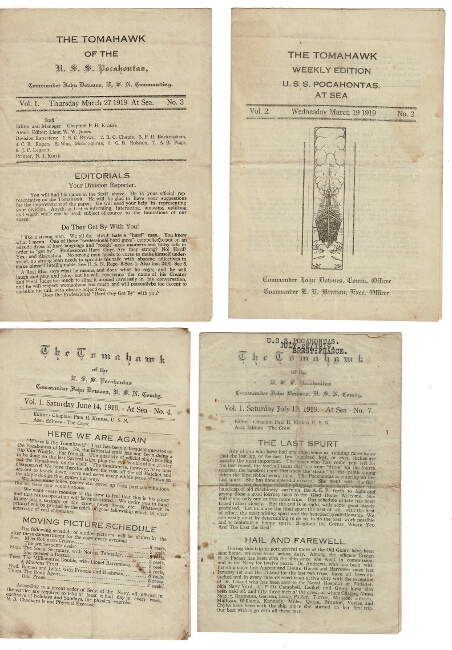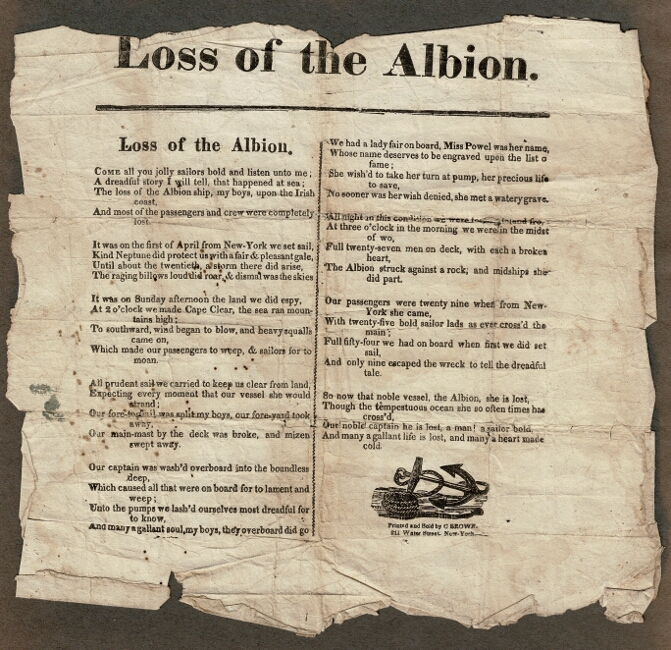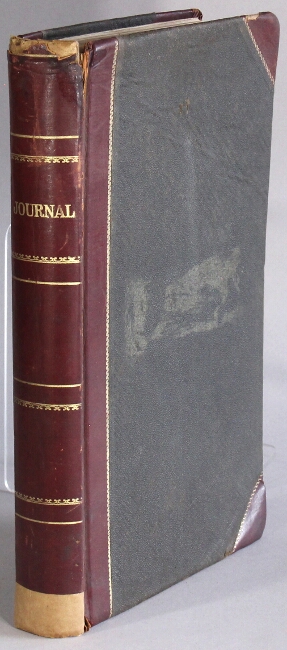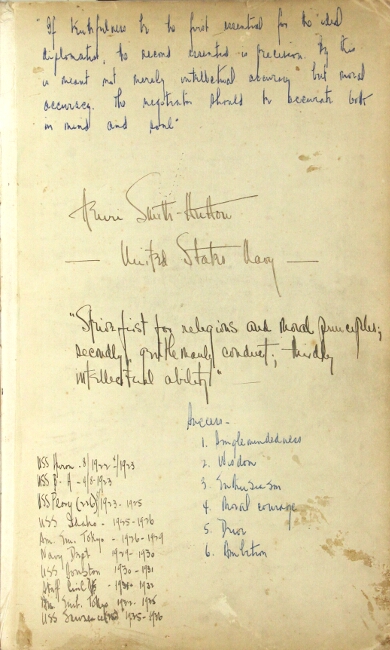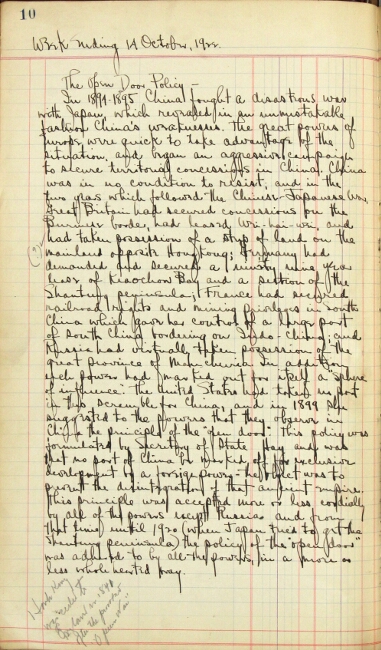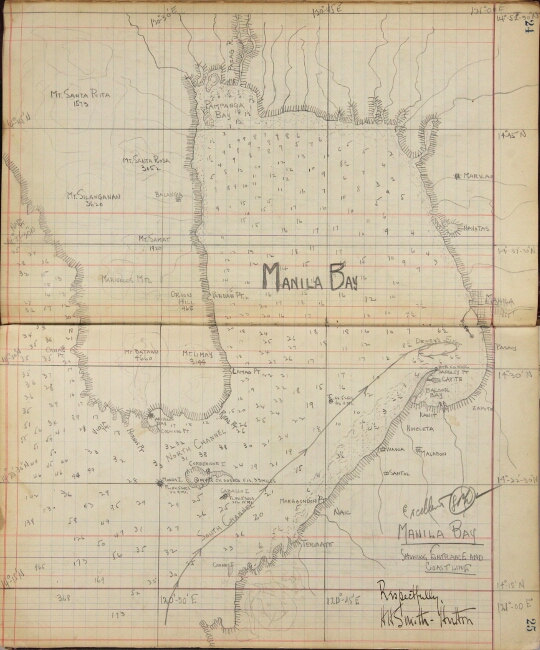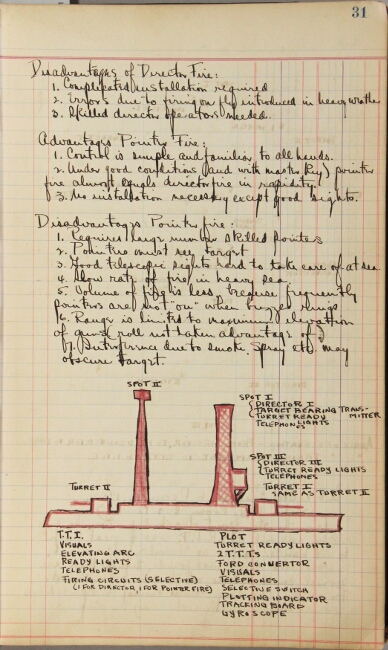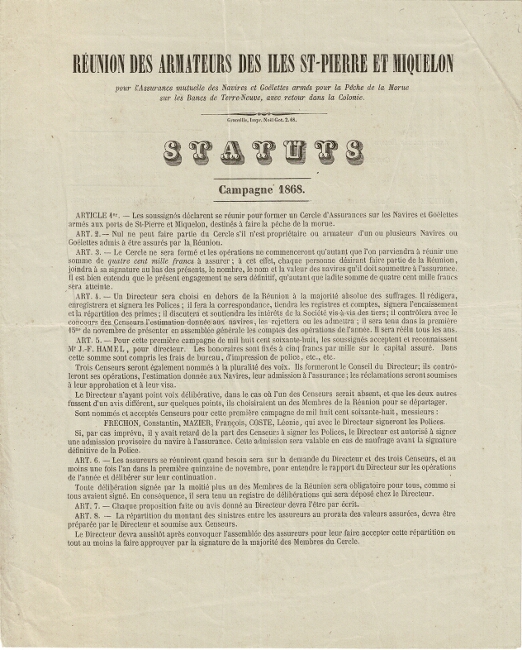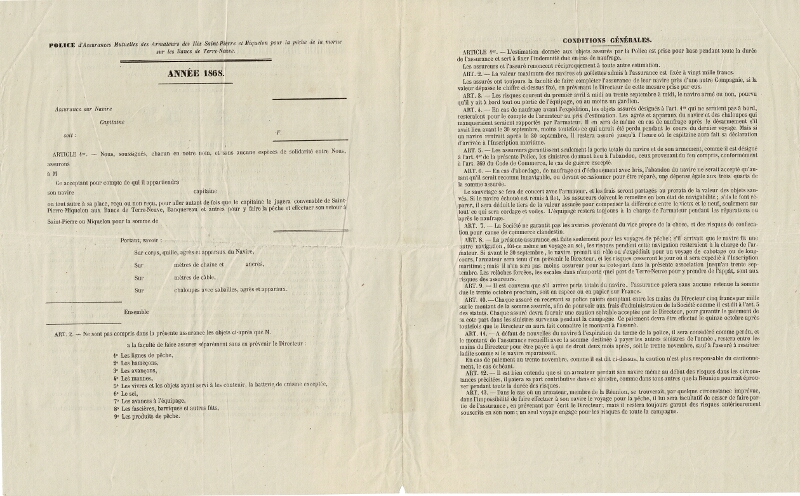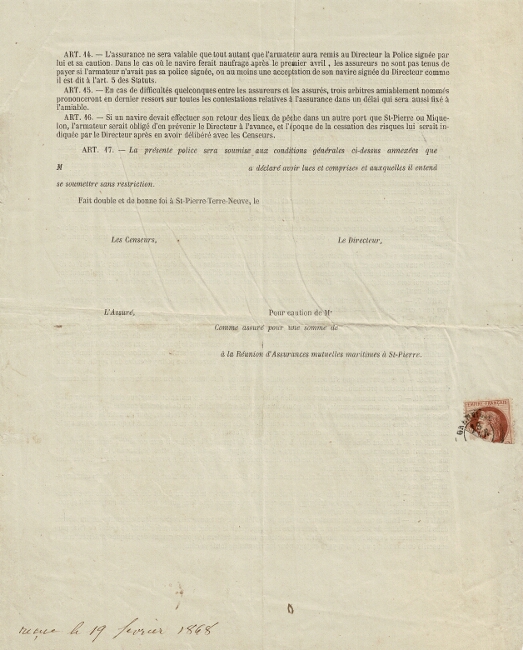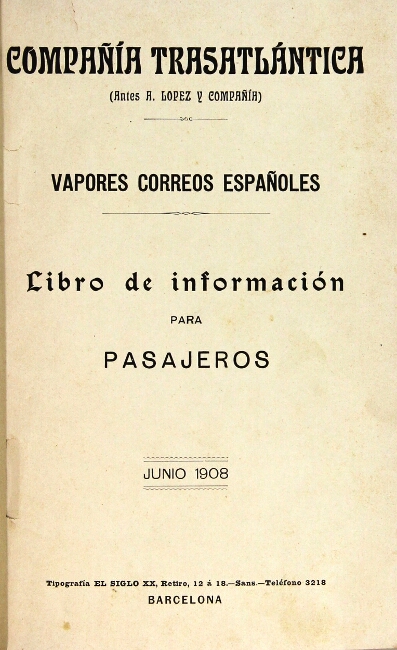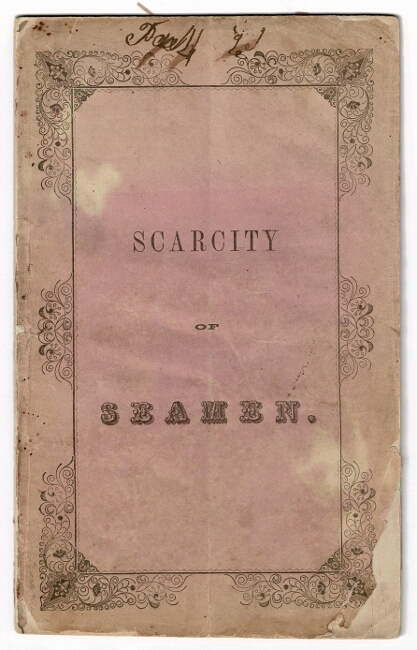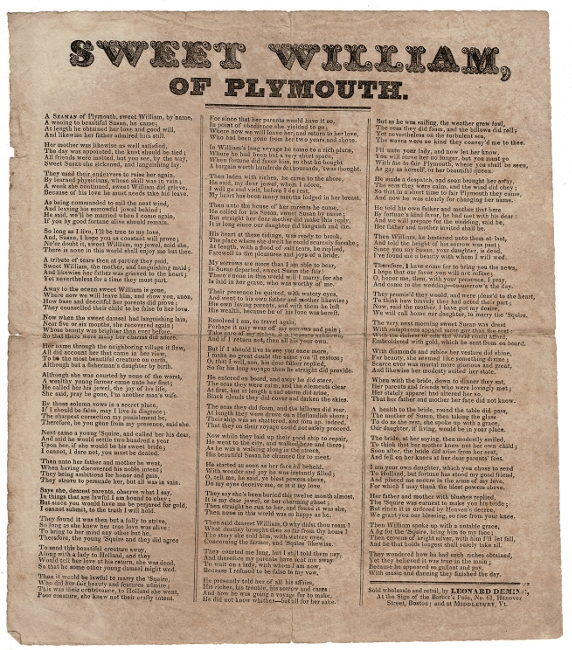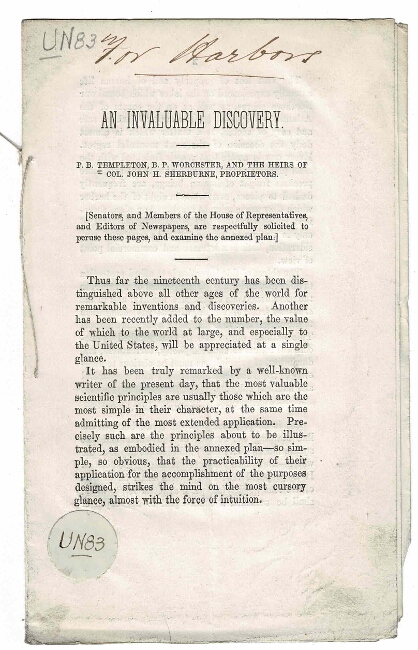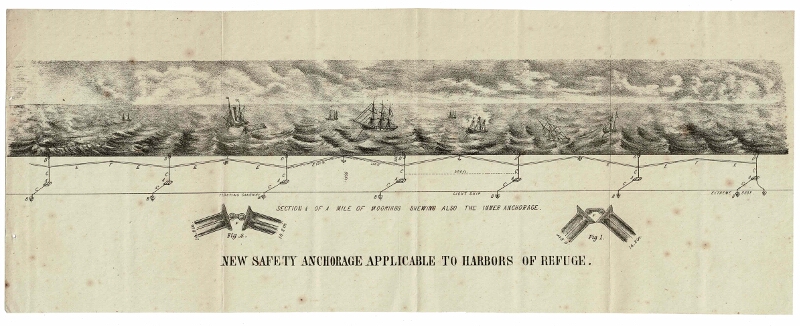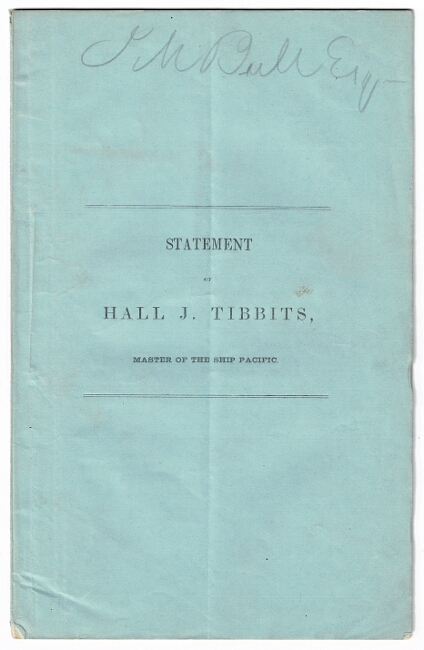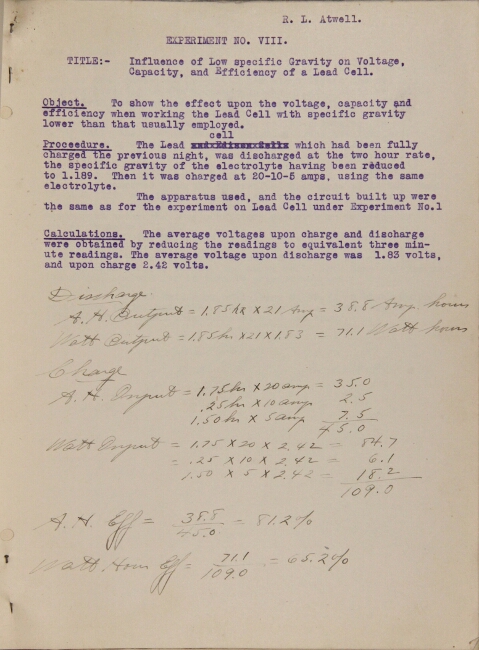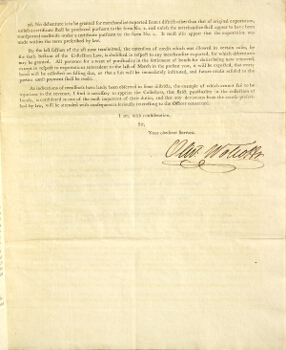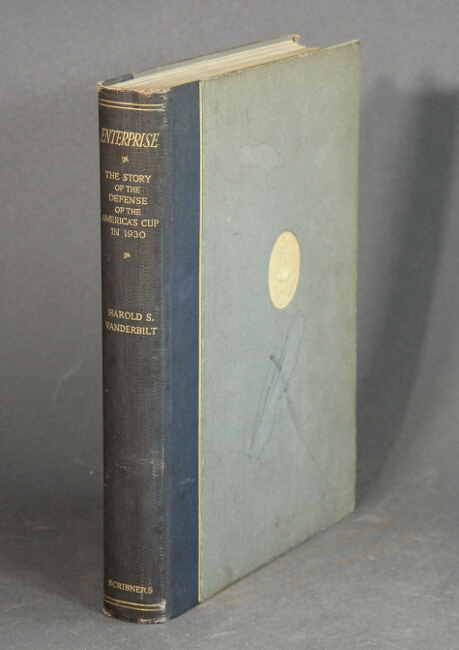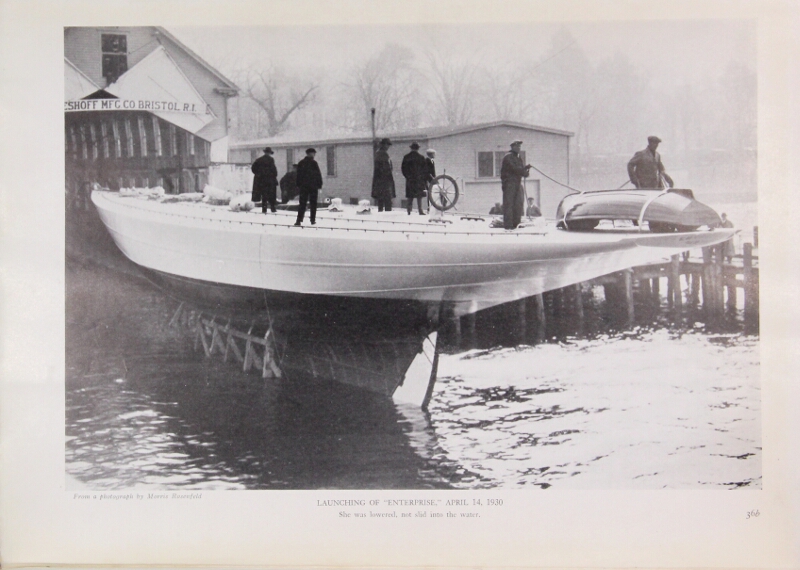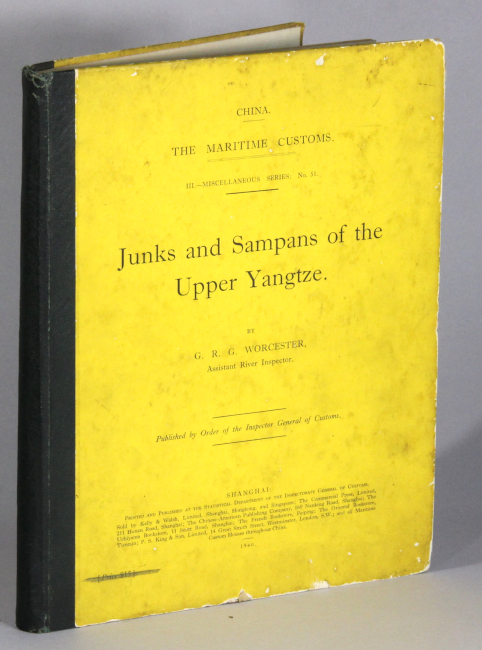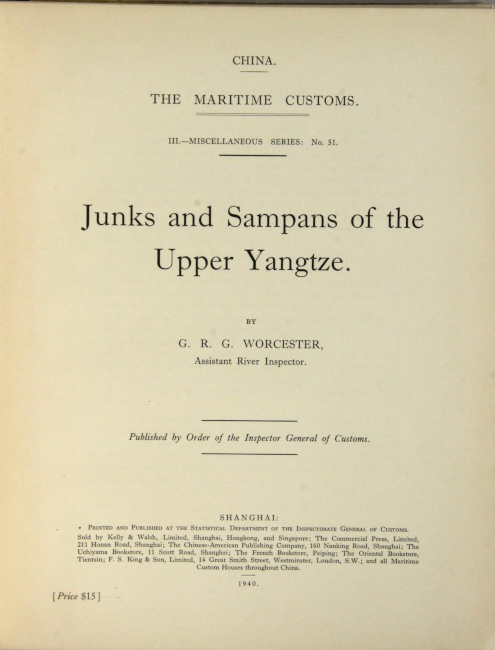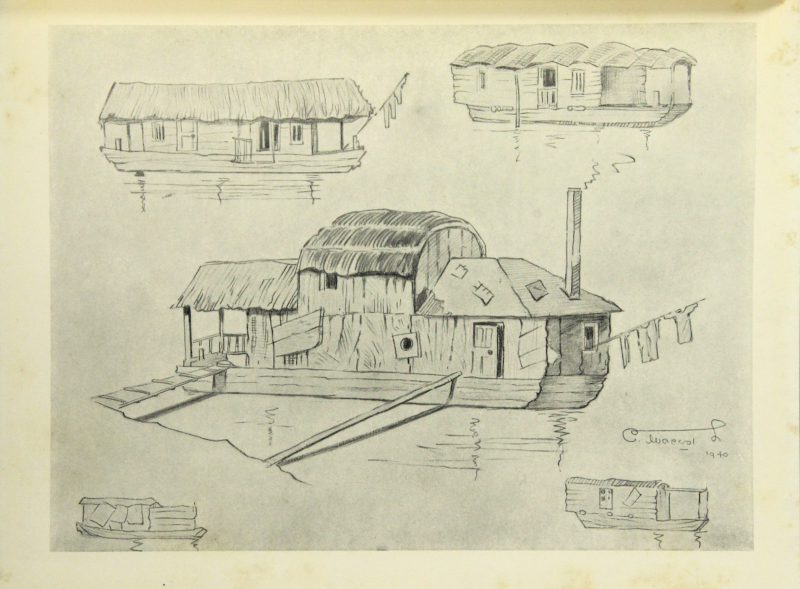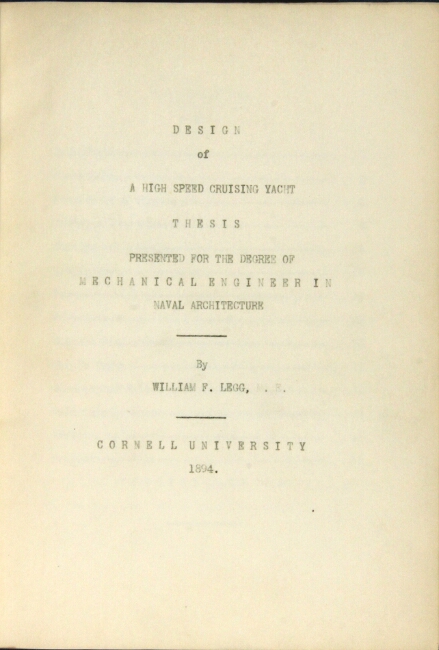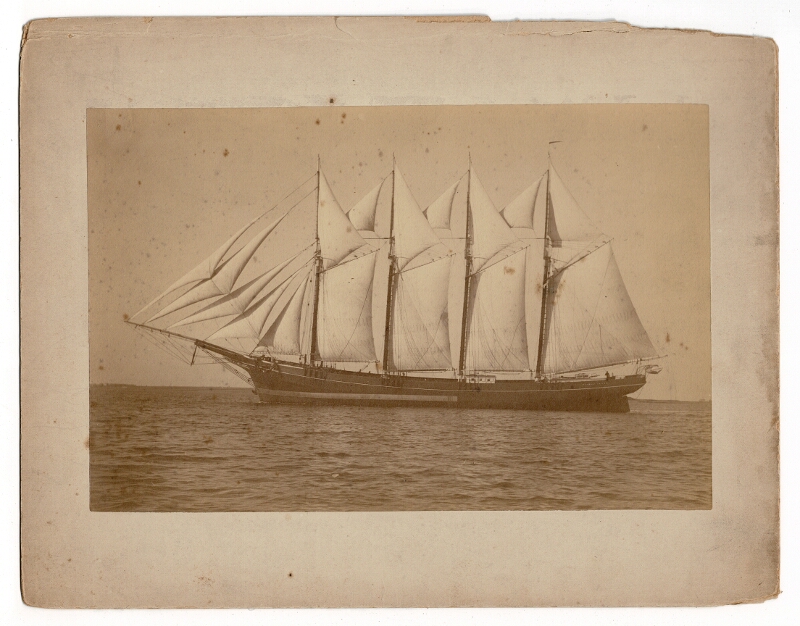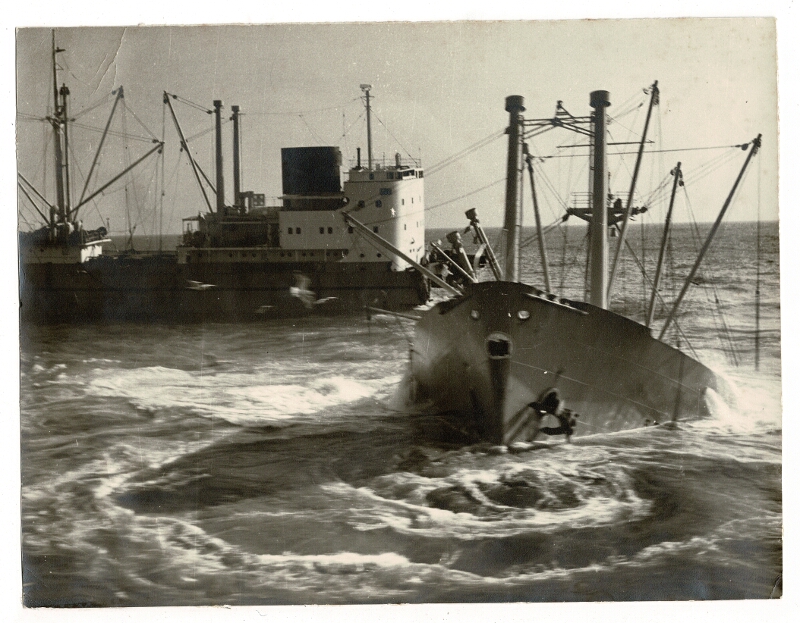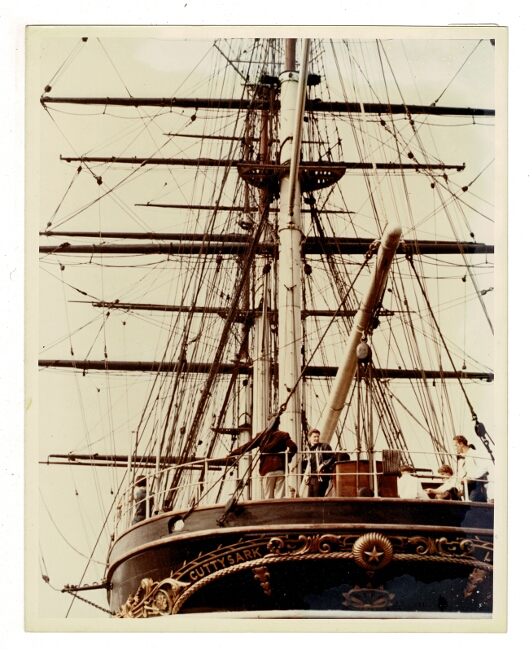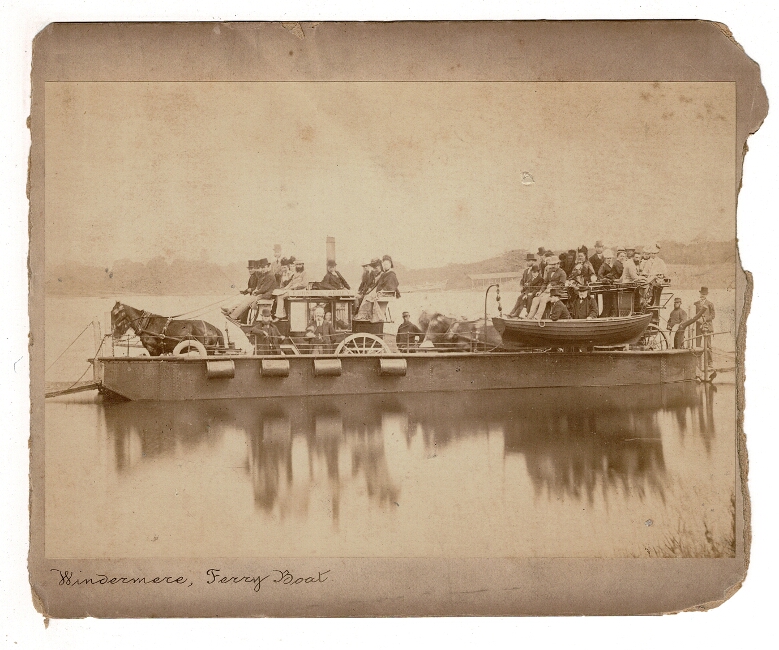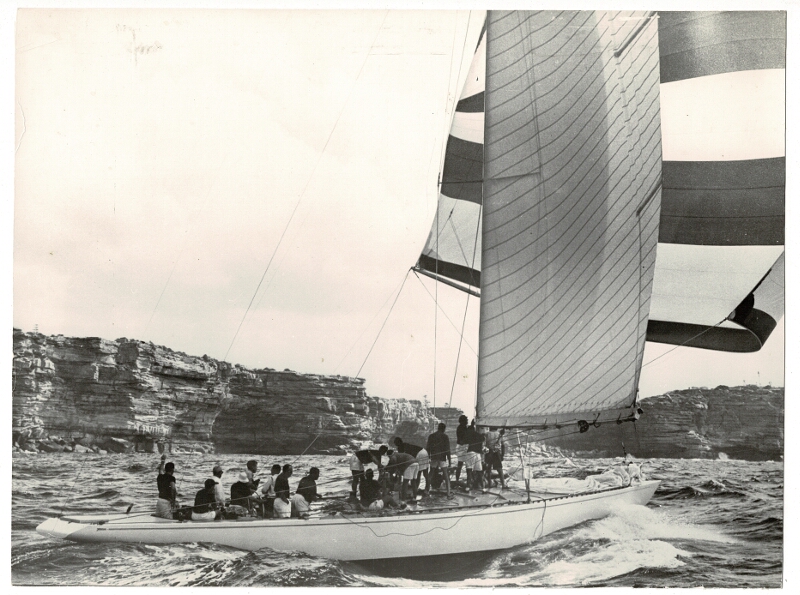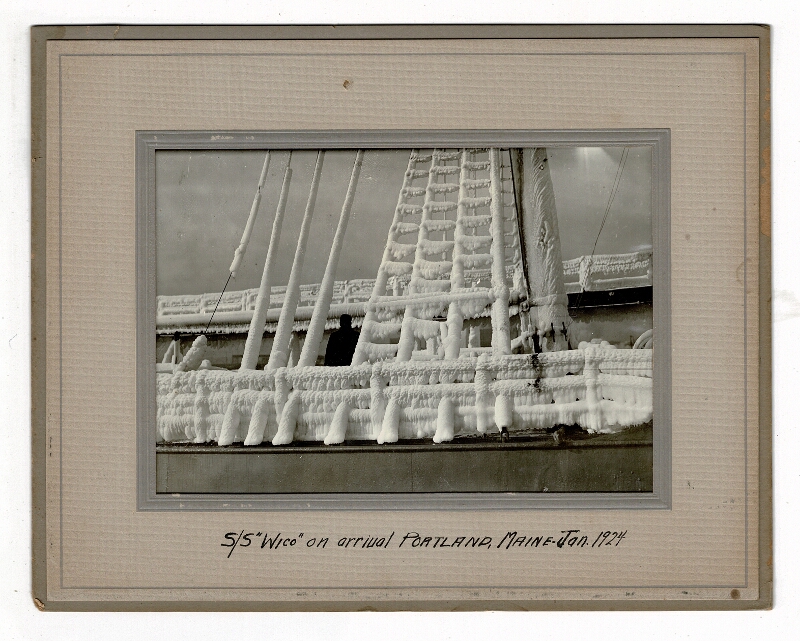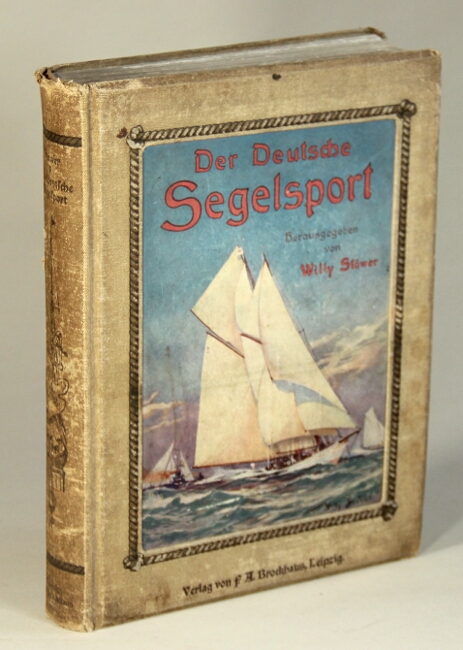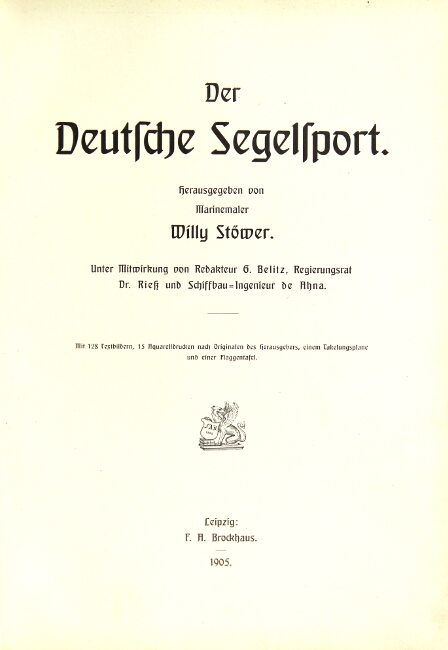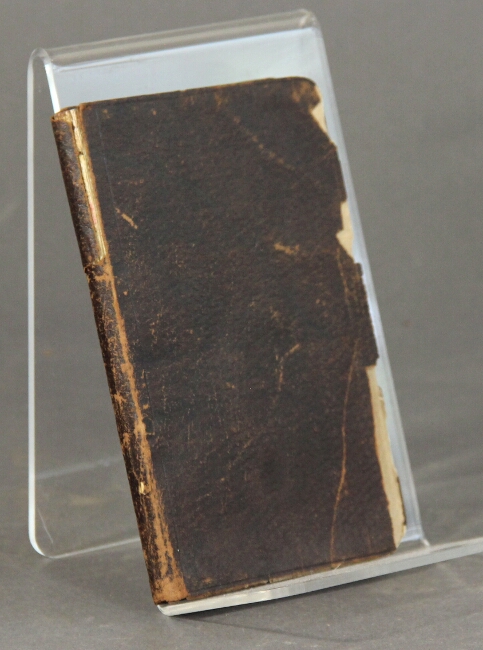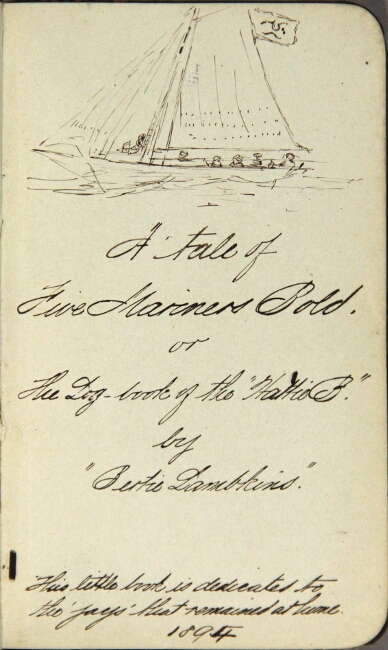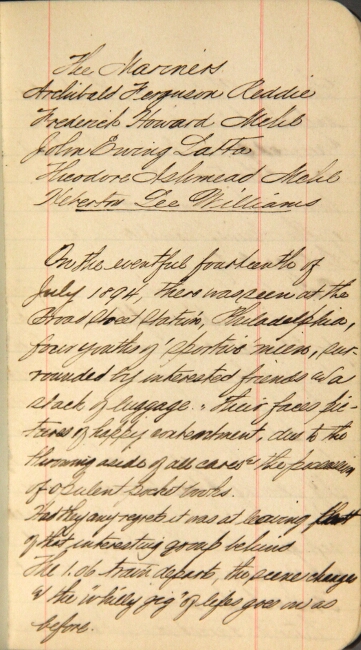The Watery World
To order call toll-free at (800) 441-0076 or 651-290-0700
or email rulon@rulon.com
or, click on the "add to cart" link to order through our website. Phone calls and emails are generally quicker.
All books are guaranteed genuine as described, and are returnable for any reason during the first week after receipt. If you are returning an item, please let us know so we can make it available to another customer.
Shipping and handling charges are extra and billed at cost.
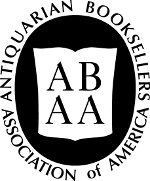
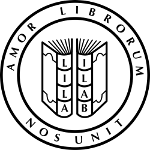
A note on OCLC
As is now the norm, OCLC counts are tentative, at best, as we recognize that searches using different qualifiers will often turn up different results. Searches are now further complicated by the vast numbers of digital, microfilm, and even print-on-demand copies, which have polluted the database considerably, making it difficult, without numerous phone calls or emails, to determine the actual number of tangible copies. Hence, even though the counts herein have been recently checked, most all should be taken as a measure of approximation.

1. A collection. 15th to 20th century.
$235,000
Rulon-Miller Books is delighted to be cataloguing a major collection of Horace (65 BCE–8 BCE) consisting of approximately 700 titles, the basis of which is the Horace Howard Furness collection (approximately 350 titles) purchased from the Furness family through the bookseller Charles Sessler in 1964 by Loras College, Dubuque, Iowa, which has since 1964 added another 350 or so titles.
Horace Howard Furness (1833-1912) was a noted American Shakespeare scholar who edited the "New Variorum" edition of Shakespeare. He devoted more than forty years to the series, completing the annotation of sixteen plays. His son, Horace Howard Furness, Jr. (1865–1930), who continued to collect Horace after his father's death, joined as co-editor of the Variorum's later volumes annotating three additional plays and revising two others. Their extensive Shakespeare collection happily resides at Penn.
The Furness-Horace collection runs the gamut from early printed editions to modern fine press editions, and includes three incunables and more than fifty 16th-century editions including the rare London 1566 edition - the first in English. The texts are in western languages and include many unusual imprints, some with interesting provenance (beyond that of Furness), including a number of "gifts" from Henry Folger, a friend of both the elder and younger Furness.
The collection is presently offered as a whole and serious inquiries are invited. This is a rare opportunity to acquire a major 19th-century collection still largely intact. The subject matter notwithstanding, this is an excellent collection showing 450 years of the history of book production in the west.
Neither Loras College nor I are under any illusion that a six-figure sale of the works of a Roman poet from over 2000 years ago - however influential that poet might have been to thousands of people in all walks of life over many centuries - will resonate in a Tik-Tok, Instagram environment, where Latin is no longer required study, and where pop culture and quaint ephemerons predominate the marketplace. Nonetheless, we make our appeal. In the absence of any serious interest, we've been instructed to break the collection. My number, as they once said, is in the book.

2. [Acts of Parliament.] Anno Regni Guilielmi III. Regis … At the Parliament begun at Westminster the two and twentieth day of November, anno dom. 1696 … An act for the increase and encouragement of seamen [etc.].. London: Charles Bill and the executrix of Thomas Newcomb, 1696.
$375
Small folio, pp. [18], being [473]-492 of the Acts of Parliament, removed from binding; browned, some foxing. Text in black letter throughout.
Establishes a provision for "Seamen who by age, wounds, or other accidents shall become disabled for future service at sea, and shall not be in a condition to maintain themselves comfortably, may not fall under hardships and miseries, may be supported at the public charge, and that the children of such disabled seamen … may in some reasonable manner be provided for and educated."
This act also provides for the founding and endowing of a Seaman's Hospital at Greenwich, the services of which will be available to all seamen who "register themselves, in and for His Majesty's sea-service," as well as their families.

3. [America's Cup Races..] Millions for defense: a pictorial history of the races for the America's Cup. New York: Derrydale Press, [1934].
$850
Edition ltd. to 950 copies, 4to, pp. 98, [2]; color frontispiece of the yacht America, profusely illustrated throughout with 92 illustrations from contemporary sources and photographs, a number full-page, plus a table of the races. Far from perfect, a worn, but good copy in original blue buckram with the crossed burgees of the N.Y.Y.C. and the R.Y.S. on the upper cover.
This copy with a letter of transmittal from one of the authors and Yachting editor, Herbert L. Stone, on Yachting magazine stationary to New York Yacht Club member Edmund Lang, Chairman of the N.Y.Y.C. America's Cup Racing Committee, presenting him this book "with the compliments of the two authors." Furthermore, the book is inscribed to Lang, "To a Cruising Club man who carries the burden of seeing that the British challenger gets a fair race. Herbert Stone / Alfred F. Loomis / July 1934." Also, with a carbon of a letter back to Stone from Edmund Lang, commenting on the book and remarking on Stone's inscription: "I accept [the book] with the deepest of appreciation and realize the responsibility conveyed in the autographed sentiments."

4. [America's Cup Races.] Report of the special committee of the New York Yacht Club relative to certain charges made by the Earl of Dunraven concerning the recent match for the America's Cup.. New York: printed for the Club, 1896.
$750
Only edition, 8vo, pp. [10], xxx, [2], 556; original printed paper wrappers, with the NYYC emblem, edges a little chipped with small pieces missing (no loss of any letterpress), lightly worn and soiled; a good, reasonably sound copy of an uncommon America's Cup title.
Nicely printed on very good paper stock by Douglas Taylor & Co. New York. An account concerning Lord Dunraven's charges against the American yacht, Defender, which, according to his claim, was surreptitiously loaded with ballast to sink her four inches lower in the water, thus making her faster than Dunraven's yacht, Valkyrie III, in the races sailed for America's Cup September 7, 10, and 12, 1895. The charges were subsequently found to be false.
Included are reports and testimonies by J. Pierpont Morgan, W. C. Whitney, A. T. Mahan, C. Oliver Iselin, Nathaniel G. Herreshoff, and Captain Henry C. Haff, among many others prominent in the New York yachting scene.
Ownership signature on the front wrapper of Edmund Lang, New York Yacht Club member and later chairman of the America's Cup Race Committee.

5. Henry Blaney Boston 1822-1896, Journal of voyages to China and Return 1851-1853. Boston: Privately Printed, 1913.
$175
12mo, pp. xiv, 134; portrait frontispiece and 4 plates; blue boards, tan shelfback, printed paper label on spine; touch of soiling to boards and endpapers, else fine. Calling card of Mr. Dwight Blaney with "Compliments of ... 1919" tipped in at the half title.
Henry Blaney, of Massachusetts, was sent to China in the employ of Wolcott, Bates & Company at the age of 29, and returned two years later. He went on to become a successful Boston businessman. His son, Dwight Blaney, was one of the first American impressionists. Blaney's journals illustrate "a time when America furnished the speediest and surest bottoms, domestic or foreign, that the world's carrying trad had ever known."
UC Santa Barbara and AAS only in OCLC.

6. The shipmaster's assistant, and commercial digest: containing information useful to merchants, owners, and masters of ships. New York: E. & G. Blunt, 1837.
$200
8vo, pp. xii, 9-683, [1]; contemporary sheep with moderate overall wear, spine beginning to flake, and light foxing throughout; a good, sturdy copy.
"The following work, although purporting to be a second edition, is, in reality, almost altogether new" (Preface, p. iii). In fact, this edition was preceded by editions in 1822, 1829, and 1832 with the title, The Merchant's and Shipmaster's Assistant.
Blunt (1792-1860) was the son of Edmund March Blunt (1770-1862), publisher of the American Coast Pilot (1796). He was trained as a lawyer and gained some attention for his writing on the Missouri question in 1820. He was an ardent Whig and protectionist and later one of the first members of the Republican Party. His knowledge of the law and his relation to the famous hydrographers Edmund and George W. Blunt (they were his brothers) made Blunt ably equipped to compile such a work as this. Chapter XIX deals with the slave trade.
American Imprints 43281 and 43282.

7. [Brig Dispatch.] Autograph manuscript signed by Nathl. P. Russell, being an "Adjustment of General Average on the Brig Dispatch & Cargo, in consequence of throwing overboard 40 tons of Slates at sea, and putting into St. John, Newfoundland, for repairs, where she was unloaded.". Boston: October 2, 1816.
$275
Folio, 1 page of manuscript on the recto of the first leaf of a bifolium; previous folds; very good. This unfortunate loss of cargo occurred after the brig, with Captain Babson at the helm, left in March of 1816 for Cadiz, Spain, and was in August bound back for the port of Boston. Apparently, they ran into trouble, possibly foul weather, causing the dumping of cargo. The paper shows a careful adjustment of the value of the cargo and other expenses that were against the final remaining cargo that was landed in Boston. The ship sustained £927 of damage.
Nathaniel P(ope) Russell, (1779-1848), a lawyer and director of the Suffolk Bank, had a daughter, Sarah, who married the Rev. Samuel May, famed anti-slavery worker. Mssrs. Wood & Rich, signatories to this document, and who approved the accounting, were likely the owners. The brig Dispatch was built at Wareham in 1815. She was 158' in length, with a beam of 22'.

8. [Broadside - Civil War.] Marshal's sale! By virtue of a Writ of Sale, by the Hon. John Cadwalader, Judge of the District Court of the United States, in and for the Eastern District of Pennsylvania, in Admiralty, to me directed, will be sold, at Public Sale, to the highest and best bidder, for Cash, at Queen Street Wharf, on Tuesday, April 8th, 1862, at 12 o'clock M., The Brig Ariel, her tackle, apparel, and furniture, as she now lies at the said wharf. Philadelphia: March 25, 1862.
$1,250
An unrecorded Civil-War era broadside, approx. 12" x 9¼", generally fine condition. With two ornamental woodcuts of sailing ships, and printed in wood and metal types.
According to the Dictionary of American Fighting Ships, the USS Gemsbock was a 622-ton bark armed with four 8-inch guns and two 32-pounders. "Assigned to the Southern Atlantic Blockading Squadron, Gemsbock sailed from Boston on the 6th of September, 1861 for her duty station off Wilmington ... On the 18th of October the British brig Ariel, loaded with salt, was captured off Wilmington."
Salt was of vital importance during the war, used as a food preservative and also in the tanning of leather. Union General William Tecumseh Sherman said "salt is eminently contraband." Judge Cadwalader, appointed to the District Court in 1858 by President Buchanan, did a lot of work in Admiralty law, so it makes sense that he would have overseen this case.

9. Log of the good ship Wabun of the Newport Yacht Club from July 6 - 9, 1909. .
$450
8vo (approx. 8" x 5¼"), pp. [8], approximately 2 dozen small vignette illustrations accomplished in pen and ink, and watercolor; near fine.
A matter-of-fact log of a pleasure cruise in Narragansett Bay from Newport to Wickford, East Greenwich, Bristol, and return. Wonderful, primitive vignette illustrations depicting sights along the way, where they tarried ashore, the Updike Hotel, weather conditions, and nautical motifs such as anchors, wheels, buoys, and the Bristol and Newport Yacht Clubs burgees.

10. Navigation [workbook].. [Newcastle?: n.d., likely ca. 1821-26].
$750
4to, approx. 200 manuscript pages with entries covering the standard lessons and examples format found in other navigation manuscripts of this period. Bound in full polished calf, spine perished, inner hinges repaired, but the text clean and legible.
Two old bookseller catalogue slips are pasted to the front pastedown attesting to Bruce's authorship. A manuscript note on the verso of the front free endpaper by the bookseller, W. H. Robinson also notes: This book was done by Dr. Bruce the eminent antiquarian of Newcastle, author of Roman Wall. [signed] W. H. Robinson." One of the booksellers' description reads, “MSS - A 4to 177-leaved Manuscript written by Dr. Bruce (author of the Roman Wall) on Navigation, bound in calf. £3/10/-”
John Collingwood Bruce (1805-1892) was from Newcastle, a city on the Tyne River which empties into the North Sea. Ships and shipping were almost certainly a part of his early life. He attended the University of Glasgow 1821-26 during which time this manuscript was likely composed. Bruce's book, The Roman Wall was published in London in 1851.
Two "examples" in the manuscript bear the date 1814, and the watermark on the paper is "Garter / 1815." On the surface, these don't lend credibility to Bruce's authorship except my friend Mr. Greg Gibson tells me that often students just copied "examples" from other sources instead of just creating them themselves, and this would not have much bearing on the date of composition. And that the paper is watermarked 1815 does not confirm the date of composition either as paper stocks often sat around in stationers' offices. More likely is that this is, in fact, Bruce's manuscript, and that if this course was taken while he was at Glasgow University, he would have been in his early twenties.
The manuscript is a good example of its type, somewhat more detailed than usual, but with fewer tables and no illustrations to speak of. Some of the topics covered include Navigation, Middle Latitude and Mercator Sailing, Keeping Track of Distance and Course, Compass Variation, Determining Latitude and Longitude, Hadley’s Quadrant, and Keeping a Logbook.
Typically, the teacher or “master” would have students copy each section of his copy in order to better familiarize themselves with, and memorize the contents of the lesson. Copies of student workbooks turn up fairly frequently, and are almost always clumsy, slipshod replications of the master’s text. (Presumably, students were more concerned with learning the lesson rather than reproducing a beautifully lettered and illustrated copy.) Examples of source books for these lessons, such as this one, are scarcer.

11. [Calcutta.] Copies of Bills of Lading of the ship "Belle of the Sea," Captain C. Lewis, from Calcutta to London [cover title]. Cleared at the Custom House, Calcutta, 4 March: 1858.
$375
Oblong 8vo, 35 leaves, each a printed, pro-forma bill-of-lading, each accomplished in ink and declaring various goods, the quantity thereof, the shipper, the destination, etc., most identified as the "captain’s copy" and all within a printed wrapper, titled as above. Many printed on blue paper. Front wrapper loose, but present; very good.
Among the articles shipped are "50 bags rice," "Ten chests of indigo," "Six thousand, one hundred & fifty pieces deer horns," "Four hundred bags of Cutch," "Six hundred six bags sugar," "Two thousand & fifty-six bags lindseed," "One hundred bale of Jute," etc.

12. [Canary Islands.] Descripcion geografica de las Islas Canarias, para uso de los ninos ... Segunda edicion. Santa Cruz de Tenerife: imprenta y Libreria de J. Benitez y C., 1871.
$500
16mo (approx. 6" x 4¼"), pp. 68; folding lithograph chart of the Canaries; original plain yellow wrappers; second gathering rather toned, tear in rear wrapper, but no loss; all else very good.
Presentation copy, inscribed and signed on the verso of the half-title to Augustin Bethencourt, he of a prominent family in the Canaries, with two of his family progenitors listed in the historical biography in the text, which is mostly in the form of a question-and-answer instructional for children.
Juan de la Puerta Canseco (1827-1902) was a Spanish pedagogue and journalist, great-grandfather of the painter Rodrigo Moynihan de la Puerta. Born in Valencia de Don Juan, he was a teacher at the Santa Cruz de Tenerife Higher School of Primary Instruction, secretary of its Board of Public Instruction and a member of the Economic Society of Friends of the Country. He directed the Colegio de Niños de Santa Cruz de Tenerife, whose regulations he wrote and published. He was a fundamental pedagogical and intellectual reference in the life of the city, as he was the teacher of many of the outstanding Santa Cruceros of the second half of the 19th century.
He founded and directed the magazines El Instructor (1852-1854), a fortnightly; and El Auxiliar, which lasted longer, also focused on primary instruction. Among his various books were the Geographical Description of the Canary Islands for the Use of Children (1861) and the New Legal System of Measures, Weights and Coins, Preceded by Brief Notions of Decimal Arithmetic for use in Schools of Both Sexes (1852).
The city of Santa Cruz dedicated a street to him shortly after his death in 1902.
OCLC locates 2 copies of the first (1861) edition, both in Spain. No copies of this edition in OCLC.

13. A body of correspondence between the author and marine architect Howard 'Chap' Chapelle, and Frederic 'Fritz' Fenger, a fellow yacht designer, author, and sailor. Ipswich, Mass, Cambridge, Maryland and Norwell, Mass.: 1938-1952.
$600
Consisting of 15 letters from Chapelle on 29 pages, all but one typed and single-spaced, all 11" x 8½; and 14 letters in reply from Fenger on 30 typed pages, plus a full-page drawing of a figurehead; some toning to some of the paper, but on the whole these are in very good to fine condition, and chock-a-block full of interesting tidbits regarding many aspects of yacht design and marine architecture, including their respective commissions, rigs and the efficiencies thereof, the aerodynamics of certain types of sails, ballasts, propellers, auxiliaries, marine inspections, boat shows, performance of yachts in different conditions, discussion on articles in Yachting and Rudder Magazines (including their own), an extensive critique of the 72-foot Ptarmagan, a Sparkman & Stephens yawl recently launched, nautical terminology, a summary of Chapelle's time in the Navy where he had charge of all the Army boat and vessel building and the rerigging of Perry's flagship on Lake Erie, book publishing, publishers, etc., and mentioning numerous others in the field (both favorably and not-so-favorably) including Lincoln Colcord, Uffa Fox, Herbert Stone, L. Francis Herreshoff, Bill Luders, Clinton Crane, and others. In all, a fascinating correspondence between two premier naval architects of the 20th century.
Mystic Seaport notes that Fenger (1882-1970) was a yacht designer, sailor, and author. His main contributions to yacht design are his use of the dhow-form hull, the wishbone rig, and the main trysail rig. Fenger was an inventive designer, and while some of his innovations never became popular, they did enjoy a following, and the wishbone rig has recently had a revival of interest in commercially produced yachts. Fenger was particularly interested in rigs which would be manageable when sailing short-handed.
Chapelle (1901-1975) was the author of many books on maritime history and naval architecture, and was curator of maritime history at the Smithsonian Institution.

14. A journal of the voige in the sloop Union Elisha Mahew, master in an expedition against Cape Briton 1745. Printed from the original manuscript in the library of Paul C. Nicholson, with an introduction by Howard Chapin. Providence: [privately printed], 1929.
$125
Edition limited to 100 copies, 8vo, pp. 26; 2 folding maps, 2 plates, 1 illustration in the text; fine copy in original brown cloth-backed boards, gilt-lettered spine.
"Mr. Paul C. Nicholson, the son of the founder of the Nicholson File Company, formed an outstanding collection that now includes over 750 manuscript logbooks describing 1,000 whaling voyages, as well as several thousand printed books on whaling. His collection also contained scrimshaw, a narwhal tusk, three harpoons, a harpoon gun, prints and photographs and ship models.
At the suggestion of Mr. Stuart C. Sherman, then librarian of Providence Public Library, Mr. Nicholson bequeathed the collection to the Library. After Mr. Nicholson’s death in 1956 Mr. Sherman compiled a catalog of the logbooks and wrote an account of the collection that was published by the Library in 1965 with the title The Voice of the Whaleman. The book was handsomely printed by the Stinehour Press of Lunenberg, VT. The Nicholson Whaling Collection is the second largest whaling logbook collection in America" (Providence Public Library, Nicholson Whaling Collection).

15. [Cummington Press.] Incident on the bark Columbia, being letters received & sent by Captain McCorkle and the crew of his whaler, 1860-1862. Cummington, MA: The Cummington Press, [1941].
$250
Edition limited to 300 copies (this, no. 250); square 12mo, pp. [64]; full natural linen stamped in black on upper cover; fine.
The first Cummington Press imprint, preceded by the 1940 From This Hill, and the 1939 Five Cummington Poems, both printed before the press was officially named.
Richmond 3.

16. [Currier & Ives.] High Pressure Steamboat Mayflower. First Class Packet between St. Louis and New Orleans on the Mississippi River. Capt. Joseph Blorne. New York: Currier & Ives, 1855.
$4,500
Hand-colored lithograph approx. 29" x 19½" (by sight, and not examined out of frame); a few slight traces of browning, but in all a fine example with strong coloring; attractively matted and in a curly maple frame.
"Currier & Ives produced more than 200 lithographs depicting the steamboats that navigated the nation’s great rivers, such as the Hudson and the Mississippi. The boats were celebrated as examples of industrialization and the firm often documented the latest advancements in technology. Here, the paddle steamer is shown cruising gently as it travels between St. Louis and New Orleans. Its two stacks billow dark smoke and two American flags fly proudly above its upper deck. Currier & Ives employed many artists to design their prints. Charles Parsons moved to New York City from England when he was nine years old and later became the head art director for Harper’s. He produced over 30 images for Currier & Ives and specialized in marine subjects" (springfieldmuseums.org).

17. Manuscript log book. At sea: 1806.
$3,500
Small 4to, pp. [24]; unusual original printed pictorial wrappers showing on the upper cover copperplate images of 5 ships, with an imprint "Printed for Laurie & Whittle, 1796" at the bottom; lightly stained and toned, but on the whole, very good. Laurie & Whittle were London print- and mapmakers.
John D'Wolf (1760-1841) was the son of Mark Anthony DeWolf and Abigail Potter DeWolf. He married Susan Reynolds in 1784. He was active in the Revolutionary War and was captured and imprisoned on the notorious "Jersey Prison Ship" in New York Harbor. He was also a merchant and ship owner, and later "considered one of the best farmers in New England. He was a member of the Rhode Island State Legislature and was a Presidential Elector."
Among a number Biblical extracts (Psalms, passages from Isaiah) and prayers, this is a proper log giving longitude and latitude, wind direction and strength, sea conditions, sails hoisted, reefed, and struck, etc. on two separate voyages, the first on the Semiramis (owned by James DeWolf of Bristol) on a 14-day voyage to Havana; and the second a return voyage on the Andromache (owned at the time by John DeWolf and Hersey Bradford, and later by James DeWolf, all of Bristol). At least two leaves have been excised from the second voyage, but we do know that the voyage took 29 days, and the return was likely to Bristol, as the last entry states "Fresh breeze standing Westward for Block Island lighthouse. Looks like a gail. I feel very antious." Orthography is not D'Wolf's strongpoint. Also, at least 3 other leaves have also been excised, but these are between the two voyages.
Nonetheless, a very interesting log with extended occasional asides, such as "Remarks on bord ship Semiramis Feby. 8th 1806. First part calm, this day I took physic / very low spirited and home sick. Middle part & latter fresh breeze from S.S.W. Stood West 4 hours and all the rest of the 24 hours stood S.E. O my dear wife & children my effections towards you are two strong I fear you leve but a small part / O my savour."
Lonely, but not phased by privateers: "First part fresh breeze from E.N.E. found myself near 20 miles to the N.W. of the hole in the Wall location. By the book giving the declination wrong. Passed the hole in the Wall at 4 P.M. Was boarded by an English Privatear at 12 M.night. Abrest of Sturgess (?) Key at 2 A.M. stear S.W.. At 9 A.M. was boarded by another privatear. Pleasant weather and fine breeze on the bank in three fathom water..."
"Remarks on board ship Andromache March 5, 1806. Hard gail from SSW the sea runs very high that I could hear that Heavenly Voyse saying be of good cheer it is I be not afraid - O blessed savour if thou but speak the word the wind and the waves will obey thee and be husht to silence. This has been a gloomy night with us nearer the wind let loos with so much fury a tremendous gail from S.W. with rain thunder and lightning and a very high sea but our God has brought us to the light of another morning..."
"Plenty of rain wind ... At 6 P.M. shot out of the Gulph into collord water the water changed from blue water to Very Cold in about half an hour. Sea groes smother. My spirits are quite revived. Latter part fine breeze from S.W. but fogg..."
And at the end, "Imploy my time looking out for land with all the impatiance imaganable - got but little sleep - at one oclock P.M. saw land thought it was Block Island bearing N .N.W. but it proved to be Marthes Vinyard."
A note dated "Havannah July 21, 1806" reads: "Recvd. of Levi D'Wolf three hundred and fifty dollar which I will lay out in sugar and will make up enough to Purches twenty Boxes and bbl. mollases and it shall course home in the ship Semiramis," signed "John D'Wolf."
See Perry, Charles D'Wolf of Gaudeloupe, His Ancestors and Descendants, New York, 1902, pp. 125-26; and, Ship Registers and Enrollments ... of Bristol - Warren, Rhode Island, Providence, 1941, pp. 13 and 239.

18. Two years before the mast. A personal narrative of life at sea. New York: Harper & Bros., 1840.
$750
First edition, second issue (no dot over the "i" in the copyright notice), 12mo, pp. 483; publisher's orig. brown cloth, rebacked, orig. gilt-stamped spine neatly laid down, one or two small chips at the joints, edges rubbed, text occasionally foxed; good and sound.
BAL's binding A (no sequence). Issued as part of the Harper's Family Library Series.
BAL 4434.

19. A narrative of the cruise of the yacht Maria among the Feroe Islands in the summer of 1854. London: Longman, Brown, Green, and Longmans, 1856.
$850
Second edition, large 8vo, pp. [4], 89, [1]; engraved vignette title page, engraved map, 10 tinted lithographed plates, including one folding of whale hunting in Westmannshaven Bay, and a tinted lithograph vignette at the foot of page 84; a very good copy in original blue cloth stamped in gilt on upper cover and spine.
See Abbey, Travel, 81 (the only color plate travel book listed for the Faroe Islands).

20. [Dry Dock.] A brief sketch of the plan and advantages of a sectional floating dry dock, combined with a permanent stone basin and platform, and connected with level bedways, sliding ways, and housed slips for repairing, launching, and laying up in ordinary the ships of the United States Navy. New York: Jared W. Bell, 1844.
$125
Large folding lithograph broadside, 17.5" x 31"; original yellow printed covers present but separated, lacking the 32 pages of text originally bound with; waterstains, covers soiled and chipped, a couple small closed tears at folds, but otherwise sound. 4 copies in OCLC
From an article in the Mechanics Magazine: "The operation of the whole is as follows: - The sections of the dock are hauled out into the river, and water let into them until they sink deep enough to allow the vessel to be floated in. As soon as this takes place, and the vessel is properly secured, the water is pumped out of the sections, and the vessel raised out of the water. When this has been accomplished, the whole is floated into the stone basin and allowed to ground on the bottom, when the vessel may be hauled on the railway. This is effected by means of a hydraulic cylinder, of 36 inches in diameter and 12 feet stroke, worked by an engine of 40 horses power. If necessary, two vessels may be put on the railways, and a ship of the line and frigate left on the dock, so that the capacity of the dock is equal to four vessels of large class. When required, additional ways may be put up in connection with the basin. The whole will be completed during 1851, but some of the sections will be ready this season."

21. [Dutch East Indies.] Handleiding bij de beoefening der Maleische taal en letterkunde, voor de kadetten van alle wapenen bestemd voor de dienst in Nederlandsch Indië. Breda: Gebroeders Nys voor Koninklijke Akademie voor de Zee- en Landmagt, 1856.
$425
Second edition, revised; 12mo, pp. 352; v-viii, [336]; recent cloth backed marbled boards; marks of readership (underlines, interlineal translation) in pencil, page 281-82 in the second (Arabic) part torn with loss of text at the lower corner, old library stamp on title and endpapers, the whole lightly worn and rubbed; good and sound.
Literary education course for the use of the Royal Academy for the Army and Navy serving in the Dutch East Indies, consisting of oratory, writing lessons and reading lessons, the latter in Arabic and Armenian types.
Nine in OCLC, all overseas.

22. A chart for seamen; exhibited in a sermon, preached in Beverly, March 18th, 1804. Particularly addressed to seamen. Salem: Joshua Cushing, 1804.
$135
First edition, 8vo; pp. 23, [1]; removed from binding, trimmed along the top margin, just touching two page numbers; sewing broken and leaves becoming detached; enclosed in a protective cloth folder.
Taking his subject from Matthew 8:25 ("Lord, save us; we perish"), Emerson attempts to show "that persons in peril of waters should feel their dependence upon Christ" because "they must perish, unless he is pleased to save them." Emerson also suggests that seamen should lead holy lives and ought continually to give thanks to God and that and vessels should "maintain social prayer."
Shaw & Shoemaker 6245; Tapley, p. 392.

23. The aegis of England; or the triumphs of the late war, as they appear in the thanks of Parliament, progressively voted to the navy and army; and the communications either oral or written on the subject. Chronologically arranged, with notices biographical and military. London: printed for the author. Sold by Longman and Co. Baldwin and Co.; Law and Whittaker; Black, Parbury, and Allen; Egerton; Westley and Parrish; and all other booksellers., [1817].
$650
First edition, 8vo, pp. xxx, [2], 608; uncut and largely unopened; original drab paper-covered boards, printed paper label on spine; label slightly chipped affecting 2 letters, corners bumped, front joint starting; all else very good and sound.
Includes sections on Waterloo, The Reduction of Algiers, The Battle of Albuera, Operations in the Eastern Seas, Java, The Capture of Martinique, Corunna, Capture Off Santo Domingo, Egypt, Mahratta War, etc.
Includes a lengthy list of subscribers, including the Dukes of Kent, Cumberland, and Cambridge, the Duke of Wellington, Sir Stamford Raffles, and many other naval and military figures.

24. [Flags.] Allen & Ginter's flags of all nations [wrapper title]. Flags of all nations and flags of the states and territories. Richmond, VA: Allen & Gitner, [1888].
$325
First edition, 8vo, pp. [44]; illustrated with chromolithography throughout showing the flags of 96 nations, U.S. states and territories; original chromolithograph wrappers, the whole in a contemporary maroon cloth binding gilt stamped on the upper cover "Steamship Lampassas." Covers spotted, rear hinge starting; all else very good and clean.
The Lampassas was part of the Mallory Steamship Line, with service between New York, Mobile, and Galveston, among other southern ports, and this volume was likely part of the ship's library. She was built in 1883 and scrapped in 1924. Allen and Ginter were manufacturers of cigarettes and high grade smoking tobaccos in Richmond, and this was likely a promotional give-away.

25. Explication des moyens proposes pour faciliter la construction du canal de Provence; et des diverses manieres de s'interesser dan cette enterprise. Aix: chez la veuve de Joseph David and Esprit David, 1743.
$500
First edition, the only printing of this description and justification of and financing plan for a canal from the Rhone to Aix and from Aix to Marseille, 8vo, pp. [iv], 94; contemporary vellum-backed blue marbled boards, light wear to extremities, worming to upper corner of nearly all pages, crudely repaired but rarely affecting the text.
This canal in France occupied the author's efforts through 1750 and is the subject of one earlier and two later pamphlets. The principle object of the project was to facilitate the transport of hemp, vegetables, and lumber. A hydraulic engineer by profession, Floquet reviews the fate of other attempts and sets out his method for overcoming the daunting physical obstacles. Almost 80 pages are devoted to three different schemes for financing and administering canal construction and operation.
No copy is recorded in NUC; 6 copies in OCLC: Oklahoma only in the U.S.

26. Log of the Urchin. Port Huron - Mackinac Race, July 23-27, 1927. .
$1,250
Quarto carbon typescript 8½" x 11“, bound in green cloth with title and small sailboat vignette stamped in gilt on the upper cover; dedication page with a mounted photograph of the skipper, Alger Shelden; 21 numbered pages plus 7 pages with 22 original photographs mounted in photo corners, most of the Urchin and its crew, many with hand written captions identifying the people. One additional crew photo laid in. Light soiling to the front board, one tear in cloth at spine; overall very good.
The Port Huron to Mackinac Race, now called the Bayview Mackinac Race is one of the longest freshwater races in the world and now has more than 200 entrants each year. This log is from the third year of the race in which just 15 yachts participated. The Urchin, owned by Alger Shelden, had run in the previous two races with many of the same crew members. The log itself takes up 11 pages detailing the start of the race, shifts in wind and weather, related sailing strategies, and a bit about the moods and meals of the crew. This is followed by a bogus newspaper account ostensibly written by a Swedish crewmember and which purportedly appeared in the Swedish press (here translated from the "Nordic"). This provides a short but lively sketch of each crew member recounting both their strengths as yachtsmen and their personal quirks. There is also a one-page verse, "The Song of the Urchin," written to commemorate the race - apparently a race tradition. The Urchin finished eighth, but they seem to have had a fine time, nonetheless.
The compiler of the log, Charles DeWolf Gibson, was the nephew of the illustrator, Charles Dana Gibson, and the great grandson of James DeWolf, of Bristol, RI. Gibson was born August 2, 1895, so he would have been 32 at the time of the race. Other crew members included James Newcomb (whose ownership signature is on the front free endpaper); the navigator, Warren Booth; Cleve Thurber, and Bud Gibson. Charles Dana and Bud were sons of Langdon Gibson, brother of Charles Dana Gibson, the official ornithologist on the first Peary Arctic Expedition.
Not found in OCLC.

27. [Golden Cockerel Press.] Matthew Flinders' narrative of his voyage in the schooner Francis: 1798 preceded and followed by notes on Flinders, Bass, the wreck of the Sidney Cove, &c., by Geoffrey Rawson with engravings by John Buckland-Wright. [London]: 1946.
$500
Edition limited to 750 copies, folio, pp. 100, [2]; full-page map, frontispiece, title vignette, and 6 handsome wood-engravings printed in green; previous owner's bookplate, else fine in original green cloth stamped in gilt, t.e.g.
"This is another book of daring exploration in our Sea Series. I tried to produce these stories of high adventure in an exciting way, and planned to make the book a symphony in green. I even thought of scenting the paper with seaweed, and imagined clients commenting to each other: Strange thing about this book - it seems to bring a breath of the sea! The idea was humorously reported by my friend Robert Harling in Alphabet and Image, and I now hear that some advertisers are using my idea by scenting their paper suitably to obtain particular effects" (Christopher Sandford, the printer, in Cockalorum, Bibliography of the Golden Cockerel Press, 170).

28. The Boston Packet, James Shepherd, Master. Instructions Issued by Vice-Admiral Graves...in Obedience to which [Lieutenant lined through and corrected in manuscript to Captain] Bromedge Siezed the Ship ... Given under my hand, on board His Majesty's Ship Preston, at Boston ... September, 1775. [but actually London: William Strahan: 1780?].
$1,250
Folio broadsheet (17½" x 11"); 3 horizontal folds, the paper a bit dusty, else very good. With its original separately printed title leaf, folded into a wrap-around sleeve.
In January 1776, Captain Bromedge wrote to Vice Admiral Schuldham regarding his boarding of the ship Boston Packet, and his suspicion that they were carrying stores to the enemy. "I am informed by the crew of the Boston Packet that the Master declared repeatedly on the Passage that, could he make Cape Codd, he would go in there and land his cargo, or could he make Cape Ann, he did not fear meeting with some of his Friends, to carry him into Beverly or Salem" (see Naval Documents of the American Revolution, Vol III, p. 1005 for the full text of his letter).
Regarding this, and similar allegations, Vice Admiral Graves issued the orders printed here, specifically pertaining to the Boston Packet: "You are to seize and detain all Ships and Vessels belonging to the Inhabitants of the four New England Provinces, and to send them to Boston..." On the verso is printed Rear Admiral Schuldham's confirmation of Graves' order, "the probability of these stores being smuggled away to the Enemy...makes me think it highly proper that they should be detained."
In effect, this is a Letter of Marque, issued during the Revolutionary War, but pertaining only to a particular class of merchant ships, and to two vessels in particular, one of which was the Boston Packet.
Rare. OCLC shows only the John Carter Brown holding a copy. With manuscript additions dating the document September 1775, and addressing it to Captain Bromadge. ESTC also locates a copy at the BL.

29. Problêmes d'astronomie nautique et de navigation, précédés de la description et de l'usage des instrumens, et suivis d'un recueil de tables nécessaires a la résolution de ces problêmes ... Trosième édition.. Brest: chez Ve J.-B. Lefournier, 1839.
$350
2 volumes, 8vo, pp. [12], 531, [1]; [4], 564, [2]; engraved folding plate (with an early rebacking and a bit wormed); contemporary and likely original brown roan-backed marbled boards, rubbed and worn, but sound. Ex- St. Paul Seminary, with their 19th century rubberstamps, old library sticker on each spine, and an old pocket on the rear pastedown of each volume. Volume I is Texte; volume II is Tables.
This copy with an interesting American provenance: on the title-p. in pencil is "U. S. Ship Warren, Joseph B. Hull, Esq., Com. Jan 17, 1844..." Additionally, in the same hand are a number of notes, on the flyleaves and endpapers, and in the text of volume I, most all of a nautical or navigational nature. On the half-titles of each volume, and on the title page of volume II is the ownership signature of B. McGowan, U. S. Frigate Brandywine, dated Toulon, Dec. 23, 1839.

30. [Hakluyt Society.] The Arctic whaling journals of William Scoresby the Younger. London: Hakluyt Society, 2003-2009.
$225
First editions, 3 volumes, large 8vo, pp. lxi, [1], 242; xxxvii, [1], 308; xli, [1], 245, [1]; frontispieces in each volume plus a total of 25 figures in the text and 11 maps; a fine set in fine dust jackets.
Volume I covers the voyages of 1811, 1812 and 1813; volume II covers the voyages of 1814, 1815 and 1816; and volume III covers the voyages of 1817, 1818 and 1820. These are issued as nos. 12, 20, and 21 in the publisher's Third Series.

31. [Harbor Regulations - Port of Amsterdam.] Regulation and ordinance concerning the harbour-duty, by merchant ships and vessels in the harbour of the Nieuwe Diep. Ministry of the Marine, [1817].
$600
8" x 5", pp. 18, [2]; self-wrappers, stitched, as issued; in a contemporary parchment chemise. Some wear to the first leaf causing minor holes (no text lost), early ownership signature on the verso of the last leaf of Martin Page.
These regulations, "enacted by Royal Decree," and clearly meant for British and American eyes, consist of 34 articles giving instructions for entering the busy port of Nieuwe Diep, serving Amsterdam. They specify such things as to how vessels should identify themselves, where and how they should tie up, priority of vessels in finding berths, prohibitive activities (such as heating pitch or other combustibles), rules for keeping watch, procedures for dealing with ships on fire, quarantine regulations, and penalties for failing to follow instructions.
Signed in type: "Secretary at the Ministry of the Marine, Stratenus." This would be Adam Anthony Stratenus (1779-1836) who was Secretary General of the Ministry of the Navy.
Very rare English version of the port of Nieuwe Diep's harbor regulations. Not found in OCLC.

32. [Herreshoff Manufacturing Co..] Report made to the Bureau of steam-engineering, Navy Department, August 9, 1882 ... on the vedette boats constructed for the British and French navies by the Herreshoff Manufacturing Company at Bristol, R.I.. Washington: Government Printing Office, 1882.
$250
First edition, 8vo, pp. 48; 1 large folding plate of the boiler for the vedette boats; original printed blue wrappers; pressure stamp in the front wrapper, back wrapper slightly chipped; all else near fine.

33. [Herreshoff Manufacturing Co..] Report made to the Bureau of steam-engineering, Navy Department, March 3, 1883 ... on the hull, engine, and boiler of the steam-yacht "Siesta," constructed by the Herreshoff Manufacturing Company at Bristol, R.I.. Washington: Government Printing Office, 1883.
$250
First edition, 8vo, pp. 62; 1 large folding table, 1 large folding plate of the boiler, several other illustrations in the text; original printed gray wrappers; a couple of inoffensive library marks on title page recto and verso, otherwise fine.
Includes data on dimensions, weight, and performance

34. One-page autograph letter signed on personalized stationery [N. G. Herreshoff, Bristol, R.I.]. Bristol: August 19, 1937.
$950
8vo, approx. 20 lines and 100 words, to "Brother Leahy" thanking him for the gift of Jeff Davis's log. Autobiographical Reminiscences of the Yachting Editor of the Providence Journal and Evening Bulletin which had been published earlier that same year.
"I ... have days of 'ups & downs.' I want to thank you for the very artistically done-up package ... the Log of Arthur W. Davis - so called 'Jeff' - I don't know why. And cleverly illustrated by that Gale who has real talent ... With cooler weather I hope to be feeling better, and that you will drop in and have a little chat - that is so pleasant! Please give my kind regards to your father and mother..."
Capt. Nat Herreshoff (1848-1938) was arguably the most successful yacht designer of the last part of the 19th century, and into the 20th. Among his many accomplishments were the successful designs of every America's Cup defender between 1893 and 1920. Herreshoff letters are rare. The last record we find of one coming on the market is 1915. Herreshoff died June 2nd the following year.
"Brother Leahy" is Edward Lawrence Leahy, Jr. (1918-1944), son of U.S. Senator Edward Leahy and Fern Dixon Leahy, who was killed in the final days of World War II in a submarine in the North Pacific.
Accompanied by: An undated letter from Mr. Herreshoff's secretary to Mrs. Leahy thanking her, her husband and son "Brother" for birthday flowers.

35. Biographical notice of Com. Jesse D. Elliott; containing a review of the controversy between him and the late Commodore Perry; and a history of the figure-head of the U.S. Frigate Constitution ... By a citizen of New York. Philadelphia: printed for the author, 1835.
$650
First edition, 8vo, pp. 480; temoine at pp. 7-8; 6 pages in the appendix showing lines of battle; appendix with contributions by O. H. Perry, Usher Parsons, Dulany Forrest, Edward Livingston, B. W. Crowninshield, and others; original yellow printed paper-covered boards and spine; bookplate of Dickinson College, the gift of Prof. [Spencer Fullerton] Baird, Secretary of the Smithsonian Institution, and the first U.S. Commissioner of Fisheries, in 1846.
The book is usually found in calf bindings. It is unusual in these attractive printed boards.
A pro-Elliott publication in the controversy between him and Perry. Elliott served as second-in-command under Perry during the Battle of Lake Erie. His conduct during that battle was a source of controversy characterized by the DAB as "without parallel in American naval history."
During Elliott's command of the Boston Navy Yard, a prankster sawed off the figurehead of Andrew Jackson on the Constitution. It was only discovered in 1998, in Paris, with the descendants of Capt. Samuel Dewey, the original decapitator. (See ussconsitutionmuseum[dot]org for the complicated story.)
Howes J-68; American Imprints 32375.

36. Notice to mariners. Lights and fog signals to be carried and used by sea-going vessels of Great Britain, to prevent collision. The following official notice ... is republished for the information of mariners. By order of the Light-house Board ... Treasury Department.... Washington, D.C.: Sept. 6, 1858.
$200
Folio broadside (approx. 17" x 11"), text in double column beneath the running head; several small diagrams representing the hulls of ships, highlighted with blue and red directionals; previous folds in sixths, 3 short breaks at the margins; in all, very good.
This broadside reprints the notice from the British Admiralty regarding lights and fog signals for steam vessels, sailing vessels, and vessels at anchor, here adopted for the American mariner.
Not found in OCLC.

37. My holidays in China. Shanghai: "Temperance Union", 1895.
$1,250
First book edition, small 4to, pp. 180; text in double column, black & white photographic illustrations; tan boards with black lettering & illustration of a boat on front cover, brown pebbled cloth spine. Some darkening to boards, wear to extremities, but a very good copy overall.
Reprinted from the "Temperance Union" for which Kahler was the editor. A detailed and entertaining book giving an account of three houseboat tours, from Shanghai to Hangehow and back via Ningpo; from Shanghai to Le Yang via Soochow and the Tah Hu; and from Kiukiang to Wuhu, accompanied by black & white photo-illustrations of scenes along the way.

38. 韓國 의 배 = Korean ship. Seoul: Seoul Taehakkyo Ch'ulp'anbu, 1994.
$275
First edition, small 4to, pp. xxii, 374; illustrated throughout with drafting plans, sketches, photographs, facsimiles, etc., much in color; text in Korean with an English precis at the back; fine copy in a fine dust jacket.

39. [Law - Customs - Triangle Trade.] Papers relative to the seizure of the British sloop Providence in Bristol Harbor, with the decision of the Supreme Court at Newport. N.p., n.d. [Likely Newport: ca. 1737].
$4,000
Folio, 12 pages, with legal glosses in the margins; some tears and chipping at the margins occasionally touching a letter or word (sense in most cases remains clear), old shadows, later pencil annotations in the margins; good and legible. This manuscript shows up via google in Norton's Catalogue of Rare Autographs, Coins, Etc. in 1862 priced at $2.
The case is outlined succinctly in the Acts of the Privy Council (Colonial - 1738), pp. 603-5: "Reference to the Committee of the petition of Peleg Brown of Newport, Collector of his Majesty's Customs in Rhode Island and the county of Bristol in America, hearing his appeal from a judgment of the General Assembly, 4 May, 1737, confirming a judgment of the Superior Court at Newport, 29. March, 1737, in favour of James Allen and Ezekiel Chever relating to 96 hogsheads and 6 barrels of foreign molasses...
"Brown alleges that on the 11th of March 1735 he made Seizure of a Sloop called the Providence Samuel Silk Master Laden with Ninety Six Hogsheads and Six Barrells of Foreign Molosses and also with twenty five Casks of Gunpowder Cloth and other Commoditys of the product and manufacture of Europe, which Lading the said Sloop had taken in at Surinam a Settlement belonging to the Dutch with an intent to run the same into New England. And that he had filed his Information in the Court of Vice Admiralty for Condemnation of the said Vessel and of the said European Goods, whereupon James Allen and Ezekiel Chever came in and Entered their Claim to the Sloop and set up a Claim by Attorney in the Name of one Green to the European Goods — That on the 30th of March 1736 the said Information came to trial when the Judge of the said Vice Admiralty Court condemned the said European Goods But acquitted the Ship upon a Distinction that the Owners ought not to Suffer for the Malfeazance of the Master...
"That in November following the said Allen and Chever brought an Action against the Petitioner in the inferior Court of Common Pleas in Rhode Island or Account of the Ninety Six Hogsheads and Six Barrells of Foreign Molosses which lay in Your Majestys Warehouse for securing the Duty imposed by Act of Parliament in Great Britain For Encouragement of the Sugar Colonys, and laid their Damages at three thousand pounds New England Money And on the 4th of January 1736 the same was tried when the Jury found the following Special Verdict, That if the Court should be of Opinion that the Duty of the said Molosses was due by Act of Parliament before the Landing they found for the Petitioner If the Court should not be of that Opinion then they found for the said James Allen and Ezekiel Chever the Damages Sued for and Costs of Court, But the Court being of Opinion, that the Duty of the said Molosses was due by Act of Parliament before the Landing, they gave Judgment for the Petitioner. On an appeal by Allen and Chever to the Superior Court of Judicature of Rhode Island, on 29 March, 1737, the jury gave a verdict against the petitioner for 1,848/. and costs. On the petitioner's appeal therefrom to the General Assembly of Rhode Island, on 4 May, 1737, judgment of the Superior Court was affirmed with costs.
"The Committee recommend that the appeal be sustained, and that upon the said Allen and Chevers paying the Dutys for the said Molasses imposed by the said Act of Parliament . . the same be restored to them by the said Appellant Peleg Browne. But in case the said Melasses or any Part thereof shall have been Sold and disposed of the Money arising thereby be Applyed in the first place to the Payment of the said Dutys and the Overplus be returned to the said Owners."

40. [Law.] William Chace and William Davis vs. Tarin and Nanterne. Suit for non-payment of monies due. Nantes, (France): September 6, 1783.
$750
Eleven-page legal document (approx. 9" x 7½") of a judgment from a French court that involved Rhode Island traders.
Providence mariners William Chace and William Davis traded in European goods and were also perhaps sea captains. These documents are entitled "Extract from the Registry of the Recorder of the Royal Seat and Council of Nantes, September 6, 1783. Nantes February 25, 1783. John Ballan senior judge. Appeared Sieur Tarin the younger merchant ... living as Braneas in the Parish of St. Nicholas who presented to us several pieces of which he required the enregistrement by the Recorder to have recours (sic) to in case of necessity and have signed Tarin, Jun., & Nanterne. The following is the tenor of the above pieces ... Debtor Messrs. William Chace & William Davis, Jun of Providence, State of Rhode Island to Tarin Jun. & Nantern for goods delivered for their account to Mr. William Davis Jun in a (?) as a margin." There follows a three-page list of goods which includes several varieties of cloth, gauze, feathers, muslin, mittens, hankerchiefs, stockings, etc. The amount in dispute appears to be at least 4,485 livres.
Also transcribed within the document is a copy of a letter from William Chace to Messrs. Terrez and L'Jeune which states: "The present goes by my sons who will inform you that I have sent to Mr. Jonathan Williams Bills of Exchange by the Ship Donglavez (?) to pay my debt in France. I hope you have received yours before the arrival of the present - I was detained at L'Orient a long time after I left you - and it was near six months before I reached my home in America." (Signed:) "William Chace and William Chace Jun." Apparently, the mariners attempted to make good on their debts but had not made payment soon enough to avoid going into default.
William Chace managed to continue in business after this legal trouble. An advertisement in the Providence Gazette in 1784 shows him selling "a neat assortment of European goods ... at his shop and store, two doors below the market house ... among which are a great assortment of lutestrings, modes and other silks, calicoes, Irish linens, gentlemen and ladies beaver hats ... likewise English and German steel."

41. One-page autograph letter signed to Prof. Alexander Dallas Bache. Flag Ship Osliabia, Road of Alexandria in the Potomac: December 5, 1863.
$750
4to, 16 lines, approx. 90 words; integral leaf attached; generally very good.
A rare letter from the Russian Rear-Admiral while on a diplomatic mission to the U.S. 1863-64. This expedition became a military demonstration by Russia during the Civil War. England and France advocated for the southern rebels. Russia held a friendly position in respect to the federal government in the North. It increased hostility toward Russia on the part of England and France, which strove for loosening Russia's international influence. The Russian government decided to send two ship squadrons to the US to demonstrate support for the northerners, as well as to create a potential threat to marine communications of England and France in order to make them refuse assistance to the South States.
The Osliabia (built 1860) was a screw frigate and was decommissioned in 1874. Bache writes in part: "In reply to your interesting note, I beg to inform you that the following officers of the Squadron have been with me on the Diana during the memorable earthquake..." The Admiral goes on to list the details of two captains and their commands. Bache, grandson of Benjamin Franklin, at the time was head of the U. S. Coast Survey.

42. The voyage of the `Fox' in the Arctic seas. A narrative of the discovery of the fate of Sir John Franklin and his companions. London: John Murray, 1859.
$425
First edition, 8vo, pp. xxvii, [1], 403, [3] ads; 14 engraved plates and 1 folding facsimile, 2 folding maps and folding map by John Arrowsmith in rear cover pocket); occasional spotting, hinges cracked, joints and extremities rubbed, else good in original blue cloth, gilt lettering on spine.
This is the narrative of Lady Franklin's final searching expedition under Capt. M'Clintock on the Fox 1857-59, for her lost husband and the crews of the Erebus and the Terror, all of whom died on the west coast of King William Island in the winters of 1847-49. On this voyage, the proofs of Franklin and his crew's fate were found, and Franklin's discovery of the North-West passage confirmed.
Arctic Bibliography 10555; Sabin 43043.

43. (B. B. Hopkins & Co.'s premium edition of) The complete navigator: or, An easy and familiar guide to the theory and practice of navigation. With all the requisite tables, &c., &c. Illustrated with engravings. Philadelphia: published by B. B. Hopkins and Co. and sold by W. P. Farrand, no. 170, Market-Street. Printed by T. & G. Palmer, Market-Street, 1807.
$250
8vo, pp. xxiii, [1], 275, [1], 40 (explanation of the tables), 16, 15*-16*, 17-220 (tables), [4] advertisement and directions to the binder; 7 engraved plates; tables in the text; contemporary full calf, red morocco label on spine; rubbed, worn, stained, front joint starting, rear joint partially broken, half-title loose, but present, free endpapers wanting; a fair to good copy.
With the bookplate of Joseph Cassin, Jr., U.S.N. and a subsequent inscription in ink on the half-title: Joseph Cassin Esq. / my friend and shipmate." Cassin (1794-1826) was "appointed Midshipman on January 16, 1809, and was promoted to Lieutenant on July 24, 1813. He died November 30, 1826 while on board the United States Schooner, Grampus [almost certainly of yellow fever] on her voyage from Pensacola to Havana. At 4:00 PM on the afternoon of November 30, his remains were committed to the deep with military honors (findagrave.com). The numerous pencil calculations on the endpapers and elsewhere are presumably by him.
In a letter to Captain M.T. Woolsey Commanding U.S. Frigate Constellation and Senior Officer in the West Indies, W.K. Latimer writes: "The painful duty devolved on me of announcing to you the death of Lieutenant Joseph Cassin, who died on board this vessel at Sea on the morning of the 30th Nov. The body was interred with military honours at 4 a clock on the same morning – For some hours previous to his death he was unable to articulate, and made no arrangement for the disposition of articles he left on board and I will thank you to inform me what manner I shall dispose of them."
Given the inscription from "my friend and shipmate," this copy of Mackay may likely have been among his possessions.
First published in London in 1804, this is the first American edition.
American Imprints 12965.

44. Atlantic and transatlantic sketches, afloat and ashore. London: Colburn & Co., 1852.
$750
First edition, 2 volumes, 8vo, pp. x, x*-xi*, 288, 16 (ads); ix, [1], 292, 24, [2] ads; original brown blindstamped cloth, gilt lettering on spine; spines very slightly faded, else near fine.
British naval captain's observations on America (he traveled extensively along the east coast, and west through upstate New York, Michigan, Illinois and Wisconsin) and containing remarks on the Mormons and Mormon poetry; other sections on The Falkland Islands, a hurricane in Antigua, and the pirate, Captain Kidd.
Buck 475; Flake 5214; Sabin 43461.

45. Charter of the Fellowship Club, instituted at Newport, (R.I.) Dec. 5th, A.D. 1752, and incorporated June 15th, A.D. 1754 : which charter was renewed and altered, by the General Assembly, June 15th, A.D. 1785 : and incorporated by the name of the Marine Society. Newport, (R.I.): printed by Wm. & J.H. Barber, for the Society, 1819.
$500
8vo, pp. 24; engraved frontispiece by Fairman of Providence (marred by ink stains); full contemporary calf, worn; small blank piece lacking from title leaf; stain on early blank leaves.
Contains a list of the members from 1752 to 1819. Sectional title page for Laws of the Marine Society at p. [9]; with several contemporary ink annotations in the margins, including five names added to the membership list at the back.
Fairman is not found in Hamilton's Early American Book Illustrators and Wood Engravers. A 1906 Goodspeed catalogue notes of David Fairman (1782-1815) that "this is the only example of the engravers work I have seen. Stauffer says that “none of his work has been found.”
American Imprints 48586; Hammett, p. 90; not found in Bartlett.

46. [Maritime.] The British trident; or, register of naval actions: including authentic accounts of all the most remarkable engagements at sea, in which the British flag has been eminently distinguished; from the period of the memorable defeat of the Spanish armada, to the present time. Chronologically arranged ... In four volumes. London: James Cundee, Ivy-Lane, Paternoster-Row; sold by C. Chapel, Pall-Mall, 1804-05.
$650
First edition, 4 volumes, 8vo, 45 engraved plates; original pink paper-covered boards, brown paper shelfback, printed paper labels on spines; boards a bit faded, some cracking on the spines, top of spine on volume IV chipped away and an elongated crack in the same volume, but otherwise a very good set.
Overview of British naval victories from the 16th century to the early 19th, but before Trafalgar, with rousing illustrative plates. This "original" edition was complete in four volumes, as stated on the printed labels. There were two subsequent volumes published in 1806 and 1809.

47. A narrative of the loss of the Kent East Indiaman, by fire, in the Bay of Biscay, on the 1st March, 1825. In a letter to a friend. By a passenger. Edinburgh: Waugh & Innes [et al.], 1825.
$300
First edition, thin 12mo, pp. 78; very good copy in later calf-backed marbled boards, gilt-lettered spine; nice copy.
One of one of the most famous of all sea disasters. The text is signed "Servatus," generally identified as Sir Duncan McGregor, a major of the 31st Regiment and one of the 640 people on board when the ship encountered a storm in the Bay of Biscay.
"On March 1 an officer checking the spirit room dropped a light just as a cask stove. The spirits at once caught fire and the flames were soon out of control. Fortunately, the brig Cambria was soon sighted, and three of the six boats on the Kent were used to transport her people to the brig." In the end, 568 of those on board were saved -- an extremely miraculous accomplishment given the stormy weather and the difficulty in getting to small boats from a large ship. One soldier's wife even gave birth to a child an hour after reaching the Cambria, and both mother and child were doing well when they reached Falmouth on March 4.
With a 16-p. appendix containing pertinent correspondence following the disaster. Three editions were published in 1825, and another the following year.
Huntress 227.

48. [Medical.] Ship fever, so called; its history, nature, and best treatment. Boston: Ticknor & Fields, 1850.
$150
First edition, 8vo, pp. [4], 48; 1 tinted lithograph plate; dampstain on front flyleaf, spine cracked and partly perished at the top and bottom; a good copy in original wrappers, printed paper label on the upper cover.
Inscribed in ink on the label: "Presented to W. H. Davol by his friend J. W. C. Ely 1850." Ely is almost certainly James Winchell Coleman Ely (1820-1906), a prominent Providence physician. He was born in Windsor, Vermont, graduated from Brown University in 1842, and received his M.D. from Harvard in 1846. He was consulting physician at several public institutions in Providence, and was active in professional associations.
Issued as no. XII, June, 1849 as part of the Fiske Fund prize dissertations of the Rhode Island Medical Society.
Cordasco 50-0365; Sabin 13297.

49. Omoo: a narrative of adventure in the South Seas. New York: Harper & Bros., 1847.
$1,250
First American edition, 8vo, pp. xv, [1], [17]-389, [1], [xv]-xxiii (ads), [1], 16 (ads); integral frontispiece map; covers spotted, text lightly foxed as usual, top of spine a little chipped; a good, firm copy in orig. slate blindstamped cloth, gilt ship stamped central on upper cover, gilt-decorated spine.
BAL 13656.

50. [Merchant Marine Service.] The quirky courting correspondence of a sea-going man and related ephemera. 1931-34.
$500
The bulk of this correspondence, 40-plus letters, was written by George J. Andrews, a U.S. merchant marine sailor, writing to Jeanne Paul, 1931-1934; our research indicates Jeanne Paul’s name was a shortened alias of Genevieve Paulukonis of Brooklyn, NY; with supporting evidence of this conjecture here.
Mr. Andrews writes of ‘gathering data’ on his various trips & sea voyages; the ultimate purpose of these researches is unclear. His use of the language is good and literate; part of the content mentions at least two years of a college education. From his writing it seems that Jeanne is not particularly responsive to his letters and does not appear to wish for a deep relationship; he’s very alone and lonely with his rambling ruminations. There are a few individualist writing quirks to the letters common throughout: a repetition of the first name of his correspondent, “Jeanne”: nearly every paragraph punctuated or with an inclusion of the name, usually in appeal for understanding and cooperation. The feeling given by this ‘technique’ is one of attempts at control, pleading for acquiescence and neediness. Also characteristic throughout are the use of ‘dashes’ instead of punctuation at phrase ends: with emotional, hurried excitability to the writing. His emotional state seems occasionally threatening, overly-assertive and pressuring of his correspondent.
The overall sense gleaned from the letters is one of struggle in mid-Great Depression times to earn a living wage and ‘get ahead’ somehow, like everyone else at the time, and with some compassion for the ills of the individual and society tempered with a level of anger towards the ‘powers that be.’ It appears that Andrews is older than his correspondent; he seems to be about 30-35 whereas ‘Jeanne’ is in her young 20’s. This disparity is another source of depression to Andrews, as he feels his life and opportunities have slipped by, forever. Sometimes it seems like there may be a hidden agenda to his life…beyond his pressure for a date.
Some examples:
1931 Dec. 5 on Pan American Petroleum & Transport Company letterhead, written aboard the SS Allan Jackson of this line, from the Dutch West Indies towards Boston (2) pages.
1932 July 24th from ‘home’ in Watertown, Mass.; George awaiting letter & photos; attempts at calls and staying in touch; (1) typed page; with (7) photographic negatives of the pair on board the Jackson.
1932 August 4; on Oakley Country Club Watertown letterhead paper, 8 pages. Thank you for snapshots, humorous self-deprecating comments; also shipping out, “…took her to Chesapeake Bay – and tied her up with forty-three others…offered a ‘stand-by’ job a sort of ‘Watchman’ – while down there…I took a look at those ships (a most depressing sight) – and then started packing my bags…like being in a ‘Graveyard’…like waiting to die…and so I’m carrying on with other plans….making off towards San Francisco…expect to find something out there…” Hoping for letters & news; loneliness.
1932 Aug. 20th, Oakley letterhead, 5 pages. Working on helping family with a fruit farm, boring a well, preparing for the S.F. trip, hope for seeing Jeanne on his way west; encourages her to give up smoking.
1932 Nov. 29th, Oakley letterhead, 7 pages. Hasn’t received reply to letter; finally finished family farm repair work and now finally attempts to “…gather those plans of mine to carry out and live – as far as I can…Within two weeks I shall be on my way – my last adventure…I last saw the West Coast in the spring of 1923…”
1932 Dec. 5, Oakley letterhead, 5 pages. Visiting NYC & hopes to see Jeanne while in port; growing nostalgia at leaving family home life, “…maybe I have visions and memories – bitter ones – that torture a mind that would try to forget – but cannot – bits of the past…hard times Jeanne hard places – hard days…”
1932 Dec. 14th Hotel Roosevelt Chicago Illinois. On plain quality linen watermarked paper; 4 pages. Written while on his journey west; wistful, thinking of Jeanne & their relationship; letting her know the travel route (Omaha, Cheyenne, Salt Lake City); still very sad about her smoking (he doesn’t consider that his pipe-smoking may have similar consequences).
1933 From the Ambassador Hotel San Francisco letter-paper, with the illustration of the hotel on the mailing envelopes. Contents include Jan. 19th (12 pages) Angry, “…The injustice of so much in this so called high civilization of ours – the helplessness of so many fine, good humans – and the sordid, unhappy lives so many of them are forced to lead…If I ever get a chance to hit back at these things I have mentioned – believe me…I shall hit back hard…”; an appeal to Jeanne to read, grow, progress in her life and consider May 25 (2 pages) “…Let us be of some value and usefulness on this planet of ours…”; June 14th (13 pages) “…I found two jobs for some fellows that needed them badly- They’ve gone Jeanne – off to sea again – They were fine fellows- ambitious – but troubled and downhearted – These fast, shifting times worry them – They would worry all of us…the world is at a crossroad…I’m sailing for Honolulu Pago Pago Fiji New Zealand and Australia…” (Steamship Monterey Matson Line, deck dept.) Sept. 4th (At Tacoma, WA) “…I’m known along the waterfront and can make a position with any steamship company on the coast – It’s taken me eight months to make a name and friends here – but I’ve crawled off the bottom again …and need never go hungry nor penniless – out on the West Coast…signed off the “Monterey” on Tuesday…signed aboard the S.S. Coya of the W.R. Grace steamship line for a few months journey down the West Coast of South America – to Colombia, Ecuador, Boliva, Peru and Chile – she’s an old tramp freighter and goes peddling for cargo clear down to Valparaiso and San Antonio…”
1933 July 16 on Oceanic Line (Hawaii – South Seas – New Zealand – Australia) Sidney. “…I have collected the data – that I came here seeking - And so, for the time, at least, nothing else matters…”
1933 July 23 Oceanic Line; short note, with a front page (pages 1 & 2) from the Melbourne Aus. The Sun news-pictorial newspaper with a photograph of the rowing crew of the S.S. Monterey preparing to compete in the San Francisco Harbor Day Cup; they practiced in every harbor on their voyage, including here in Port Melbourne. Andrews was on the team, from internal evidence in another letter – according to which they won the race and established a new record. According to him, Andrews is in the second seat of the boat.
1934 Jan 9; from Los Angeles; looking forward to taking ship soon for the East coast; with prints of the negatives sent earlier. These show G.J. Andrews & “Jeanne” aboard the S.S. Allan Jackson, Los Angeles.
1934 Jan. 31; Washington DC, Hotel Powhatan, 4 pages. Training vigorously for another lifeboat rowing race, this for NY harbor; thankful for having a job and interested in Washington DC and (unknown) opportunities.
1934 Apr. On board S.S. Tivives U. Fruit Co. to Jacksonville FL. Another note states that he’s third mate under Capt. Herbert Friswold. Another states that “…This is our last trip in the ‘Orange Run’…on our next journey we again enter the ‘Banana Trade’ (14 day voyages) to ‘Puerto Barrios’ Republic of Guatemala…haven’t been down that way since 1923…getting ahead here financially and at Jacksonville – I don’t even bother to go ashore. No hotel – no car fare – no board bill. I’m saving every penny…I’ll be about $ 100 clear upon arrival at New York…I’m planning to get ashore and stay there…They should take all the convicts and sign them aboard these ships to a life of exile…” A single-page note May 12th regards coming arrival in Port Cortez Honduras and includes a little U.S. newspaper clipping regarding bail set for a man in Morrisania setting stench bombs to empty motion picture theatres, “…hired in labor feuds at $ 5 a job…” The attached note implies social familiarity with the man, Barney Baker, for George & Jeanne.
1934 June 14, NY Hotel President notepaper; aboard S.S. Catahoula; “…Third Officer again going to Cuba and returning to Baltimore…this is my first “Molasses Ship” – and she’s a homely old tub…”
1934 Aug. 8 From Belmont, Mass. 10 pages. Notes that he has spent fifteen years “…on the High Seas…” This is the final communication to Jeanne from G. Andrews.
With other miscellaneous materials including: 1) A letter with a few inclusions from Harry Dosch, who married Jeanne; these are WWII vintage and he is in Army service; sadly, it is much about Jeanne’s loss of a child due to miscarriage; 2) a few telegrams from George Andrews to Jeanne regarding aborted visits; 3) a letter to Jeanne from another admirer, written on Hotel Taft NY paper in 1934; 4) a certificate of literacy from the Univ. of NY for her, dated 1933; 5) an official letter from the NYS Dept. of Labor regarding an injury she has sustained on the job; 6) ‘flower cards’ from George Andrews that presumably accompanied bouquets sent; 7) a few small holiday greeting cards to Jeanne from Harry; 8) a few packets of stamps for stamp collectors from various locales, sent by George; 9) a newspaper announcement of marriage to Harry, with bridal image of Jeanne.
Most of the correspondence with the original mailing envelopes; with postal cancellations. Some envelopes with wear, tear & soiling; letter contents generally in very good condition.

51. [Moby Dick in Spanish.] Moby Dick. Barcelona, Buenos Aires, Bogota: Editorial Bruguera, [1960].
$125
Third edition thus (first printing of this edition was 1956), small 8vo, pp. 255, [1]; illustrated title page, 62 full-page composite illustrations telling the story in comic strips separate from the text; pressure stamp of Barbara Johnson at base of title page; all else near fine in pictorial jacket.
A translation and adaptation of the novel for a juvenile audience in Spanish, issued in the publisher's Colección Historias series. Text adapted by A. Vidal Sales with comic illustrations by Pedro Alférez.
Of this edition, only Newberry in OCLC.

52. Descriptive notes to accompany the view of a first-rate line of battle ship [drop title]. London: James Reynolds, 174, Strand, April 29, 1854.
$425
8vo, pp. 4; wrappers wanting; folding hand-colored lithograph plate (approx.10" x 26½") showing a cross-sectional view of the battle ship, its decks, cannon, engines, etc.; some dustiness to the text leaves but the plate clean and compelling.
NY Public, Smithsonian, and BL only in OCLC where it is entered under the wrapper title: Sectional view of a first rate line of battle ship with screw propeller.

53. Journal [of accounts]. Bristol, R.I., [et al.]: 1841 - 1850.
$2,250
Folio, 198 pages; mild dampstaining to the first 15 leaves, pages 2-5 in light blue ink, the balance in sepia; completely legible except at the tops of pages [3-5] where the damp obscures; contemporary calf-backed marbled boards, the covers loose, but present.
Several pages of accounting are laid in, including a letter addressed to Nathaniel Coggeshall of Bristol stating accounts of May, 1840 with a Fall River postmark; and to the same Coggeshall, also with accounts, September 1843, with a New London postmark. Also, a large and neat folio accounting of "Amount Stock on Hand October 22, 1849," which bears directly on this journal (see below).
Nathaniel Coggeshall was Mosher's brother-in-law. Mosher's name appears nowhere in this journal, except for his mention of paying rents to the Mosher estate. His name has been attributed because of his being owner and master of the ship Aquetnet (see Ship Documents of Rhode Island, Bristol - Warren 1773-1939. Providence: National Archives Project, 1941, pp. 16-17).
A ten-year record of revenue and disbursements of William Henry Mosher of Bristol, R.I. (1798-1866), a sea captain and merchant. Much of the accounts relate to his ship the Aquetnet and various voyages to Africa, St. Helena, Canton, Charleston, Liverpool, Gothenberg, New Orleans, Mobile, and Havana and this journal accounts for his debits and credits for a variety of goods and services, including "outfit disbursements at Havana," "for bill of health made by Russian Consul," insurance, wharfage, commissions on freight, customs house charges, cigars, salt, tobacco, oranges, bread, chicopee, sheet copper, nails, wood, oil, apples, and one box of China palm leaf fans.
Among his accounts are Charles Tyng (1801-1879), the famous sea captain and merchant, John Gilliat & Co., Fall River Iron Works, Gardner Willard, Sheldon C. Lewis, the Baring Brothers of London, Crocker Brothers, Phillipps & Tiplady, John Taylor, and Robert Rogers. He draws cash for expenses for children, for the passage of seamen from Fayal, for rent at the Mosher estate.
Beginning in September of 1849 and going to May of 1850, the last 21 pages of this journal, much cash is withdrawn for expenses relating to a voyage to California. Some expenses were related to advertising so he likely was taking passengers: Caleb Gilmore, Charles Gilmore, Frederick Hilberg, and William Stirling are names that are mentioned as paying money to him. Also, for the "freight of Sewell & Mead." Mosher sells his "old canvas sails," although there is no mention of his purchasing new ones. The Aquetnet turns up in San Francisco April 4, 1852, after having been, apparently, in Hawaii.
Quoting from his obituary in the Bristol Phoenix of January 4, 1867: "Captain Mosher was the son of the late captain Abner Mosher, one of the most prominent and enterprising shipmasters of his time. His first voyage was made in the capacity of cabin boy on board the celebrated privateer Yankee in the year 1813, Captain B. K. Churchill. He attained the highest rank of his profession of shipmaster, which position he occupied for more than 30 years, sustaining throughout a character for intelligence, enterprise, and integrity scarcely equaled. He became a Master Mason at Saint Albans Lodge, Bristol, of which his father was a founder, that fraternity conducting the services at his grave. I am informed that he served a number of times as Treasurer of the Lodge. The privateer Yankee captured many prizes and its cabin boys came back well to do. Therein, doubtless, lies the secret of Captain Mosher‘s continuing success. He loved books, wrote a fine hand, and one only wishes his logbooks might be found."

54. The yachts and yachtsmen of America ... being a history of yachting and of yacht clubs, as well as of the various yachts, with biographies of the founders and members of the different clubs of the United States and Canada. New York: International Yacht Publishing Co., [1894].
$4,500
2 volumes, large 4to, pp. [8], 366; [367]-692; 87 photogravure plates of yachts by Frederiksen, Bruce, Bolles, Stebbins, and Johnson, (numbered I - LXVIII, without plate LXI which was not published); plus 13 more photogravure plates of yacht clubs, 42 half-tone portrait plates of club officers, many more, smaller half-tone portraits in the text, and nearly 600 wood-engraved illustrations throughout, some quite large.
This work can be found bound together in a single, very bulky volume, or bound in two separate volumes. Because of its massive size the one-volume configuration usually appears, when it appears at all, in a broken binding. Alternately, volume II of the two-volume set is often missing. This set is complete, and in excellent condition internally. Bound in the two-volume configuration, in heavy cream cloth stamped in blue with the distinctive yacht design on the front boards. Some soiling and staining to the covers, extremities worn, corners showing, some mild abrasion, back hinge of volume II is cracked but holding.
A source book for American yachting up to the turn of the century. “Histories of individual American yacht clubs, drawings of important or typical yachts, photographs and brief biographies of American yachtsmen … For each club data is provided on members, boats, regattas and rules.” Chapters include Evolution of the Yacht, History of Yachting, Yachting in the United States, Speed Records of Sailing Yachts, Types of Yachts, Centerboards, The Rigs of Yachts, The Cost of Yachting and Yacht Decorations, Trophies, and the histories of approximately 45 American yacht clubs, including those on the St. Lawrence, the Great Lakes, inland lakes, and the west coast, and Canada.
Toy 102; Morris & Howland, p. 97.

55. [Mutiny.] The Jefferson Borden mutiny. Trial of George Miller, John Glew and William Smith for murder on the high seas. Before Clifford and Lowell, JJ.. Boston: printed under the direction of the clerk of the court, 1876.
$450
First edition, 12mo, pp. [7], 10-141, [1]; original tan printed wrappers; wrappers a bit soiled, spine partially perished at the top and bottom, and a short tear in the front joint; but on the whole, very good.
Details of the trial including indictment, arraignment, testimony, with the actions of the mutineers detailed, as well as the bravery and resilience of the captain, his wife, and the remaining crew. The defendants were indicted for the murder of Corydon Trask Patterson on board the schooner Jefferson Borden. At the head of the title: "Circuit Court of the United States, District of Massachusetts."
McDade 679.

56. "Farthest North" being a record of a voyage of exploration of the ship Fram ... and of a fifteenth month's sleigh journey. London: George Newnes, 1898.
$350
2 volumes, 8vo; 1 color plate, frontispieces and about 120 full page and text illustrations, large folding map of the Arctic regions, slight rubbing at extremities, light foxing to folding map, generally a fine, very bright copy in what must be one of the most celebrated gilt decorated bindings of the period, showing the ship Fram locked in the ice; original teal blue cloth stamped in gilt, silver and red, a.e.g.
First published in Norway in 1897. See Printing and the Mind of Man 384: "His idea was deliberately to allow the ship to be frozen into the ice-pack, and then to drift across the Arctic region."

57. [Narragansett Bay.] Narragansett Bay illustrated in a series of pen and pencil sketches. Providence: Ferrin & Hammond, printers, n.d., [ca. 1875].
$200
32mo, pp. 71, [1]; numerous wood engravings in the text, several full-page; original pink pictorial front wrapper a little worn, spine a little chipped; rear wrapper wanting; mostly very good and sound.
Merrill has a full-page ad in Edwards' 1866 Chicago directory offering his services as an engraver upon wood. The present pamphlet offers numerous wood engravings of (mostly) seaside scenes, lighthouses, etc.
OCLC locates AAS and Brown only.

58. [New Orleans.] Port handbook of New Orleans. Relating to the port of New Orleans, situate in the parishes of Orleans, Jefferson and St. Bernard, State of Louisiana. New Orleans: Board of Commissioners of the Port of New Orleans, December, 1926.
$325
Tall 12mo (approx. 7½" x 4½"), pp. 95, [1]; 10 folding maps and plans printed in color (a few quite large); fine copy in original full blue calf stamped in gilt on upper and lower cover, retaining the original tissue dust jacket (with several short tears) and the original publisher's mailing box, addressed to Mr. Carroll R. Thompson, Chief Eng., Dept. of Wharfs and Docks in Philadelphia, with his name stamped in gilt on the upper cover.

59. A history of the Royal Navy, from the earliest times to the wars of the French Revolution. London: Richard Bentley, 1847.
$175
First edition, 2 volumes, 8vo, pp. xxv, [1], 469, [3]; viii, 534; vignette title pages printed in red and black, 2 frontispieces; tops of spines cracked, else a fine, largely unopened copy in original blue cloth stamped in gilt on upper covers and spines.
Volume I covers 1066-1327; Volume II, 1327-1422, and the death of Henry the Fifth. The author died before the work was completed. Extensive appendices and bibliographic references.

60. The kagami-no-fune or wicker boat.. Tokyo: Society of Naval Architects, 1930.
$150
First edition, large, slim 8vo, pp. [8], [115]-196, [2]; vignette title page, 10 plates (1 in color, 1 loose) and 20 illustrations in the text; covers a little soiled, else generally fine in original printed beige paper-covered boards.
Issued as Part IV, Section 3 of Vol. V in the publisher's A Study of Ancient Ships of Japan series. Includes wicker boats in Manchuria, Korea, and Mongolia, skin-boats in China, Tibet and India, French and British coracles, the Eskimo and Aleutian skin-boats, the American bull-boats, etc.

61. The kame-no-se or turtle shell. Tokyo: Society of Naval Architects, 1929.
$125
First edition, large, slim 8vo, pp. [6], [61]- 114, [1]; vignette title page, 4 plates (1 in color) and 9 illustrations in the text; generally fine in original printed beige paper-covered boards.
Issued as Part IV, Section 2 of Vol. V in the publisher's A Study of Ancient Ships of Japan series. Includes earliest records of turtle-boats, medieval turtle-shell boats, Japanese myths relating to turtles, etc.

62. The manashi-katama or meshless basket. Tokyo: Society of Naval Architects, 1928.
$125
First edition, large, slim 8vo, pp. [6], 60, [2]; vignette title page, 7 plates and 16 illustrations in the text; generally fine in original printed beige paper-covered boards.
Issued as Part IV, Section 1 of Vol. V in the publisher's A Study of Ancient Ships of Japan series. Includes basket-boats in ancient China, modern basket-boats in French Indo-China, Japanese myths connected with basket-boats, etc.

63. A pictorial journal of a voyage aboard the three masted schooner Louise, last of the sailing codfishermen out of San Francisco as recorded in 1931 by the artist Otis Oldfield with 19 pictures of life at sea under sail. San Francisco: Grabhorn-Hoyem, 1969.
$175
Edition limited to 400 copies, folio, pp. [128]; text printed in red, blue and black; full-page chart of "Unimak Pass, Entrance to the Bering Sea"; full-page sail and deck plan of the Louise; 19 full-page illustrations in color after compelling watercolors by Oldfield; introduction by Karl Kortum, director of the San Francisco Maritime Museum. Fine copy of a handsomely produced book in quarter blue niger morocco over canvas sides.
Grabhorn-Hoyem Bibliography, 25.

64. [Orkney Islands.] The history of the Orkney Islands: in which is comprehended an account of their present as well as their ancient state; together with the advantages they possess for several branches of industry, and the means by which they may be improved. Illustrated with an accurate and extensive map of the whole islands, and with plates of some of the most interesting objects they contain. Edinburgh: printed for the author ... and sold by Archibald Constable and Company, Edinburgh; and Longman Hurst Rees & Orme, London, 1805.
$1,500
First edition, 4to, pp. [2], viii, 509, [3] plate list and ads; folding map and 11 engraved plates; original blue paper-covered boards, cream paper shelf-back, printed orange label on spine; small chip from the corner of the label but on the whole a very good, sound and clean copy.
Barry's History contains 'a view of the ancient and modern inhabitants, their monuments of antiquity, their natural history, the present state of their agriculture, manufactures, and commerce, and the means of their improvement,’ but depends also on the unpublished manuscripts of George Low. The book "displays much diligent research and careful individual observation, notwithstanding the fact that he had access to the valuable manuscripts of Low, who had died without being able to find for them a publisher. Barry never sought to conceal his possession of Low's manuscripts; he refers in his ‘History’ to Low's ‘Tour,’ and possibly would have more fully acknowledged his obligations to him had he not been attacked by his last illness while the ‘History’ was passing through the press" (see DNB).

65. Marine militaire, ou, recueil des differens vaisseaux qui servent a la guerre, suivis des manoeuvres qui ont le plus de raport au combat, ainsi qua l'ataque et la deffense des ports. Paris: chez l'auteur, rue S. Thomas du Louvre, la 4.e porte coch[ère] a gauche, en entra[n]t par la rue S. Honoré, [1762].
$1,500
First edition, engraved title, engraved dedication plus 50 engraved leaves (the last folding) incorporating text and illustration within a ruled border; leaves are printed on one side only; contemporary full mottled calf, gilt-decorated spine in 6 compartments, red morocco label in 1; joints cracked; very good. Design and construction of early French ships of war and naval art and science.
The title, dedication, preface, table of contents and all illustrations and text are etchings by Nicolas-Marie Ozanne. The title is within an elaborate naval-themed architectural frame. The first dedication leaf, "à monseigneur le Duc de Choiseul," is a full page illustration with a royal coat of arms. Most plates depict ships or ship formations at the top of leaf followed by text and a battle plan or vignette at bottom.
Scott Collection 477.

66. [Pitcairn's Island.] Pitcairn: the island, the people, and the pastor. To which is added a short notice of the original settlement and present condition of Norfolk Island. London: Society for Promoting Christian Knowledge, n.d., [ca. 1860].
$200
Twelfth edition, with a new preface bringing parts of the text up to date, 12mo, [2], xiv, [15]-414, [4] ads; engraved frontis, 17 plates, and a few small illustrations in text; very good in original green cloth, gilt-stamped spine, and gilt vignette of a ship on the upper cover.

67. [Portugal - Sailing Directions - Big Waves.] Directions for the Bar of Figueira in Portugal. N.p.: n.d. (ca. 1807).
$600
Broadside (approx. 12½" x 7½"), with signature "Balthor Whitney & Co." in manuscript at the bottom; previous folds, else fine.
This is a broadside of about 400 words giving instructions for entering the port at Mondego River, midway down Portugal's western coast. The first part of the Directions - "Cape Mondego" - direct the mariner to Cape Mondego, the headland by which the port may be recognized. "On the South side of the Cape, at the bottom of the Bay, lies Buarcos, a small Fishing Town, from which boats go off to Vessels that require a Pilot." The Directions then discuss tides, water depths, and proper approach, warning ships seeking a pilot "to steer by the Signals from the Castle and Pilot Boats within Side of the Breakers."
Figuera is situated on that part of the Portugal coast known for its massive waves. Just 20 miles south is the famed Nazare Beach where surfers come from the world over to ride 100-foot waves. Little wonder that in the early 19th century there were very specific directions for attaining the port at Figuera.
The second half of these Directions - "Explanation of Signals" - concern the signaling process. "When the sea is high and no Boat can go off to put a Pilot on board, it is customary to call vessels to the Bar, by hoisting a Flag, or Colours at the Castle; but if the Colours are afterwards lowered it shows the Tide is not sufficiently made...If a gun is fired without the Colours hoisted; it is a Signal for Vessels to make more sail in order to save the Tide." Further signals from the castle "which are made by a Pole with a small Flag attached to it" instruct ships on how to approach the bar while waiting for a pilot.
The document is signed in manuscript, "Balthor Whitney & Co.," presumably an English mercantile firm. The othography - i.e., "colours" strongly suggests a British origin for these Directions, and the watermark "F/1807" helps confirm this since during that period England was allied with Portugal in the Napoleonic wars.
Unrecorded and certainly very rare.

68. [Prince Edward Island.] Map of Prince Edward Island in the Gulf of Saint Lawrence. Charlottetown, Prince Edward Island: G. Ballingall, 1920 (with additions to 1939).
$175
Color lithograph map 51" x 26", backed on linen (as issued), and folding down into an octavo-sized binding 8¾" x 5½", in very good condition. "Compiled from the latest information afforded by surveys, records, and other authentic sources by Caverleigh Milford, 1920." Ownership signature of L. B. MacMillan.
Includes railroads, paved highways, roads, gravel pits, cities, towns, and counties, as well as coastal features and a small black-and-white outline map.

69. Island St. Helena, port regulations.... [James' Town, St. Helena]: printed at the Government Office, by Geo. Gibb, [1853].
$1,500
Broadside, approx. 12¾" x 8", printed on blue paper; lengthy text in a single column beneath a cut of the Royal Arms at the top; very slight spotting, else a fine copy of a rare South Atlantic imprint.
The regulations, 15 in all, outline manifest requirements, customs fees and charges, quarantines, dockage, and launch services and charges, etc. Also, the times draw bridges are raised and lowered, the town gates closed, and the latitude and longitude of the islands. Also information regarding the "Time Ball."
The time ball, a visual signaling device meant to be observed by ships at sea for calibrating chronometers, was first successfully tested by the Royal Navy at Portsmouth in 1829. Among the first time balls constructed was that at St. Helena Observatory, in 1834. The white canvas ball dropped precisely at noon while a time gun positioned on the High Knoll fired the signal. The procedure was repeated at one o'clock to coincide with Greenwich mean time.
Not in OCLC and unlocated bibliographically.

70. An authentic narrative of the loss of the American brig Commerce, wrecked on the western coast of Africa, in the month of August, 1815, with an account of the sufferings of her surviving officers and crew, who were enslaved by the wandering Arabs on the great African desert, or Zahahrah; and observations historical, geographical, &c. made during the travels of the author, while a slave to the Arabs, and in the empire of Morocco ... with a new, valuable, and interesting appendix ... Third edition. New York: published by the author, 1818.
$1,250
8vo, pp. xiv, [2], 407; 10 engraved plates; lacks the folding map; pp. 229-30 bound out of order and with a hole with loss to a total of 20 lines (recto and verso); frontispiece trimmed in the gutter and reinserted; the recto of the frontispiece with an interesting presentation from Riley: "Commodore James Barron from his friend and admirer James Riley, Washington Feby. 27, 1819."
Bound with, as issued: Paddock, Judah. A narrative of the shipwreck of the ship Oswego, on the coast of south Barbary, and of the sufferings of the master and crew while in bondage among the Arabs... New York: published by Captain James Riley, 1818, pp. xv, [1], 186. This third edition of Riley's Narrative is the first to contain Paddock's Narrative of the Shipwreck of the Ship Oswego.
Recent brown calf, black morocco label on gilt-paneled spine; aside from the defects noted, a very good, sound copy.
James Riley and James Barron were two of the most celebrated, skillful, and ill-starred American seamen of the 19th century. Riley (1777-1840) survived shipwreck and enslavement by the Arabs in Morocco in 1815, and in 1817 published this account of his and his shipmates' ordeal that went through many editions and became one of the most popular books of the 19th century. Abraham Lincoln called it one of his half dozen favorite books, and he was surely influenced by the book's description of white Americans enslaved and humiliated by black Moors, as well as by Riley's salute to the charity and benevolence of a Muslim.
James Barron (1769-1851) was a naval officer highly regarded for his masterful seamanship. His most notable service was in the War with Tripoli, but his career was blighted and his reputation destroyed by two events: the "Chesapeake-Leopard Incident" in 1807, when Barron was forced to surrender his ill-prepared frigate to a British ship that boarded his vessel and seized alleged British deserters which lead to a court-martial and Barron's suspension without pay for five years; and Barron's fatal shooting of Commodore Stephen Decatur -- America's greatest hero of the time -- in a duel in March, 1820.
Barron had spent a period of his suspension involved in commercial trading in Europe. During part of that time Riley was also traveling and trading in Europe, and it was perhaps then that the two met. In February 1819 Riley was in Washington to secure an appointment as deputy surveyor of public lands in Ohio, and Barron arrived there that month to seek -- successfully -- reinstatement in the U. S. Navy following his suspension and exile. Although both men suffered extraordinary vicissitudes during their lives, they were among the leading American celebrities of their time.
Huntress 190C (Riley) and 193C (Paddock); Sabin 71397; Smith, American Travellers Abroad, P3 and R30.

71. The telegraph dictionary, and seamen's signal book, adapted to signals by flags or other semaphores; and arranged for secret correspondence, through Morse's electro-magnetic telegraph: for the use of commanders of vessels, merchants, &c.. Baltimore: published by F. Lucas, Jr., 170 Market Street, [1845].
$2,500
8vo, pp. x, [2], xi-xii, [2], 11-334, [2]; frontispiece and 4 chromolithograph plates of signal flags; contemporary full sheep neatly rebacked, new black morocco label on spine; the plates lightly spotted but on the whole very good and sound.
This copy with a presentation on the front pastedown: "To the Association of New York Pilots with the compliments of Messrs. Rogers and Black per Colt & Robinson, proprietors of the New York & Offing Electro-Magnetic Telegraph." Dedicated to Samuel F. B. Morse, "inventor of the American Electro-Magnetic Telegraph."
Rogers, a trained engineer from New York City, worked as Morse's assistant in constructing the first telegraph line from Washington to Baltimore. He was himself an inventor and pioneered the use of insulated cables for use underground and underwater. During the Civil War, he helped develop the military telegraph system.
American Imprints 5604; see Sabin 72626 for a later edition.

72. [Royal Navy.] The Royal navy; lithographed in colours, in a series of illustrations from original drawings. Second edition. Portsmouth: Griffin & Co., 1873.
$950
4to, pp. [6], 15, [1]; final leaf with list of subscribers; title page printed in blue and black, 24 chromolithograph plates, each with a descriptive leaf of text, including one of the H.M.S. Sultan; original blue cloth stamped in gilt and black on upper cover and spine; light wear; very good and sound.
With an inscription on the chocolate-coated flyleaf: "Daddy from Georgie. June 23rd, 1873. H.M.S. 'Sultan'." In this instance "Daddy" is John Panton Gubbins (1806-1879, a judge in the Indian Civil Service) who has penned his ownership signature on the title page. A further inscription under Georgie's is to a "Mr. Woodmass, 10 Oct. '90, a souvenir of J. P. G." Laid in is an envelope with 5 sleeves, each containing an embossed monogram cut from stationery, four of them monograms from ships, including the Sultan.
Together with: The Royal Navy 1872-80. In a series of illustrations lithographed in colours. From original drawings by F. W. Mitchell, Esq. with an introduction by a naval architect. Portsmouth: Griffin & Co., 1884. 4to, pp. [6], 11, [1]; title page printed in blue; 25 chromolithograph plates, each with a descriptive leaf of text; original pictorial blue cloth stamped in gilt and black on upper cover and spine; light wear; very good and sound. With an ownership inscription on the flyleaf: "Harold E. Sulivan Mid. H M.S. 'Royal Sovereign.' Chamiel Squadron."

73. [Royal Navy.] British Navy past and present. London: Virtue and Company, City Road, 1905.
$250
4to, pp. [6] plus 30 chromolithograph plates from watercolor drawings; title page printed in red and black; original pictorial blue cloth stamped in red and white; white lettering on spine somewhat faded; very good, the plates clean.

74. [Russian Navy.] La Marine russe ... Dessins du lieutenant V. Ïgnatius. St. Pétersbourg: Stadler & Pattinote, 1892.
$950
Oblong folio, 3 p.l. plus 56 chromolithograph plates, each with descriptive text on the verso of the preceding plate, 1 leaf of index; original pictorial blue cloth stamped in gilt and black on the upper cover; front hinge reglued, the contents slightly shaken, otherwise on the whole very good, the plates clean.
With explanatory letter-press in Russian and French.
Four copies in OCLC, only the U.S. Navy and Miami University in the U.S.

75. [Sailing Directions.] The little sea torch: or, true guide for coasting pilots. London: for the author by J. Debrett, 1801.
$12,500
First edition, folio, pp. [2], [i]-ii, [v]-vi, 144, [6]; likely original marbled boards, rebacked in gilt-paneled brown calf, original red morocco label preserved; minor spotting; a very good, sound, and attractive copy. The subscribers' list contains 171 names taking 191 copies, so the edition was likely a small one. This copy with the engraved bookplate of Joseph Neeld, one of the subscribers.
A lovely work on "how to navigate along the coasts of England, Ireland, France, Spain, Portugal, Italy and Sicily; the isles of Malta, Corsica, Sardinia, and others in the straits; and of the coast of Barbary ... enriched with upwards of one hundred appearances of head-lands and light-houses, together with plans of principal harbours..." With 130 pages of sailing directions for and descriptions of the above-named places, followed by 20 full-page hand-colored aquatints, showing views of about 125 ports, harbor entrances, and harbors. These are followed by 12 engravings with 24 hand-colored charts of harbors and seaports. The text is a translation, with revisions and additions for the British market, from the French of Bougard's Petit Flambeau de la Mer.
Phillips 2852; National Maritime Museum III, 218; Abbey, England, 344.

76. [Sailing Directions.] Sailing directions for the east coast of North America, from Boston to the Mississippi. London: Charles Wilson (late J. W. Norie & Wilson,) publisher of charts and nautical works, &c. at the Navigation Warehouse & Naval Academy, 157, Leadenhall Street, E.C., n.d., [ca. 1878].
$500
3 volumes in 1, each part with a separate title page; 8vo, pp. [4], 24*; iv, 38 [2]; [4]; 56; original blue printed wrappers; spine chipped with small loss at the extremities, otherwise very good.
A composite volume, beginning with an Appendix. Description of the Banks Situate between Cape Sable and Cape Cod to the Eastward of Boston; followed by Sailing Directions for the East Coast of North America, from the Peninsula of Cape Cod to Philadelphia (title page dated 1873); followed by Sailing Directions for the East Coast of North America, from Delaware to the Gulf of Florida, &c. (title page dated 1877).
These three volumes, originally issued separately in 1866, 1873, and 1877 respectively, were issued together by Charles Wilson as a cost-saving, composite volume, likely as a way to use up unsold sheets.
With ads for charts for sale by Wilson on inside and out back wrapper, and inside front wrapper, plus on 3 full pages in the text.
Illinois and NYPL only in OCLC.

77. [Sailmaking.] Tratado práctico de velamen. Tradicido del ingles por Don Juan Jose Martinez y Tacon, ceniente de navio de la Real Armada. Madrid: imprenta de Don Miguel de Burgos, 1829.
$750
8vo, pp. iv, 101, [3]; 4 engraved folding plates showing a total of 61 cuts of sailcloth; recent full maroon niger lettered in gilt on spine; minor dampstaining, but generally very good or better.
Includes a 24-page dictionary of sailmaking terms. A translation of Steel's The Art of Sail-Making, first published in The Elements of Practice of Rigging and Seamanship, 1794.
Not in NUC; OCLC locates 2 copies in Spain and another at the National Maritime Museum in the UK.

78. The marine mammals of the north-western coast of North America, described and illustrated: together with an account of the American whale-fishery. San Francisco: John H. Carmany and Co.; New York: G. P. Putnam's Sons, 1874.
$1,750
First edition, 4to, pp. 319, [1], v (index); lithographic frontispiece of a whaling scene in the California lagoon, 26 lithograph plates (6 double-p.) by Britton & Rey, numerous wood-engraved illustrations in the text (1 full-page, and counted as a plate in the list of illustrations); original green cloth, gilt vignette on upper cover, gilt-lettered spine; light wear at spine ends, a few plates lightly spotted, but generally a very good, sound copy, without cracked hinges.
Says my colleague Greg Gibson: "I've spoken before about this book. It's one of my favorites. In writing about the natural history of these creatures, and in describing with complete accuracy and lack of moral judgment (though his personal feelings are implicit) the brutal slaughter involved in the industrial harvest of these animals, Scammon is every bit as eloquent as Melville. Charles M. Scammon (Melville was his middle name!) was a whaling captain turned naturalist. He wrote with authority, both of whaling history and the natural history of whales. With its skillfully executed single and double-page lithographs of the major species, this is one of the most dramatic and attractive American whaling books."
At the back is a 4-page whaling glossary and a 7-page list of stores and other outfits for a first-class whale-ship, for a Cape Horn voyage.
Cowan, p. 570; Hill 1530; Howes S-136; Jenkins, p. 143.

79. Contemporary copy of a lengthy two-page autograph letter signed to His Excellency James Madison, President of the United States of America. N.p.: November 8, 1812 [copied after March 11, 1814].
$950
Folio, previous folds, near fine. With integral address leaf attached.
This copy of Seelye’s letter was found among the papers of U.S. Senator Elijah Boardman of Connecticut who served in the Senate 1821-1823. Boardman may have been handling a claim from Seelye, as a matter of constituent service, relative to the invention described in the letter.
(Paragraph breaks inserted for legibility.) "Sir, the state of our political affairs being such with the English Nation at this period, that I think it the indispensable duty of every American Citizen to endeavour to exert himself in every measure to the utmost of his abilities in defence of his Country. Therefore I pledge my word, & honour to your Excellency that I have not, at any period of my life had so favourable an opportunity to do it as at the present moment. Therefore I embrace this opportunity to make known to your Excellency a Scheme I have invented which appears to me might be greatly to the benefit of our Country; which Scheme of defence, and means of Capture I have long deliberated on, and I firmly believe was it put into execution, it would be found to answer the desired expectation; which at this particular Crisis deserves our more minute attention. And if this Scheme be framed on Just principals (which I firmly believe it is) sufficient for our small Vessels (and Infant Navy) to cope with the powerful English Navy, we should thereby be immediately in possession of force without building large Ships; which would require much time, attended with an immense cost.
"The Scheme which I have invented, and now offer to the wise consideration of your Excellency is as follows. Viz. That every armed Vessel while riding at anchor in our ports be (secretly) furnished with sufficient Copper boilers, and also Engines such as is made use of in our Cities to throw water in case of fire, and Leaders to extend up through their quarter, and main decks, and also up their Masts to their round tops. And when coming in sight of an enemies Sail, to raise their fires and put their water in said coppers a boiling, and when coming in contact, to Grapple, Sweep the decks of the enemy, Extinguish their matches, Wet their Cartridges, and board them. By this means of throwing boiling water, I am firmly of opinion would be found successful, in so much that one of our Vessels of moderate size, might be able to disconcert, Silence, and Capture an English first rate Ship of war!
"I am also of opinion, that while the Crew belonging to a Gun, could haul her back, load, and fire once, that the decks of a first rate Ship might be completely sweeped by this means of throwing boiling water. I further beg leave to remark, that the same principal, be made use of in all our Forts; to prevent the enemy from scaling their walls, &c. I would make the leaders of wool, or furs worked down to the consistency, or density of a hat, in strips. And those leaders, or Conductors covered with Sail cloth. I submit this principal to your Excellencys more wise consideration, with this request, that you lay it before our Government, for their more mature deliberation. Should this Scheme meet the approbation of Congress, and put in execution, The proprietor thereof, only asks what in the wisdom of our Government, they think he merits after a due proof of its utility.
"N.B. Forwarded November 8th 1812. And for what Government has done on this Letter, look in the Universal Gazette (printed out of Washington City), dated March 11th 1814. Or in the National Intelligencer of the same date."
The letter is docketed: "Copy of Mr Jaleen Seelye’s Letter to James Madison President U States, 8 Nov. 1822" [i.e. 1812].

80. [Shetlands.] A true and exact description of the island of Shetland, containing an account of its situation, trade, produce, and inhabitants together with an account of the great white herring fishery ... and the methods the Dutch use in catching, curing, and disposing of the herrings... The second edition. London: printed and sold by T. James ... M. Cooper [et al.], 1753.
$500
12mo, pp. v, [1], 34; somewhat later green pebble-grain cloth lettered in gilt on spine; nice copy.
No earlier edition is located in either OCLC or ESTC.

81. [Shipboard Printing.] The Tomahawk of the U.S.S. Pocahontas. At Sea: U. S. S. Pocahontas, 1919.
$750
Nine issues in all (viz. volume I, number 1, March 1919 to volume I, number 11, August 1919 (wanting nos. 5 and 6); no. 2 is misidentified as volume II, no. 2; light edge wear, previous folds, very good. Each issue is a bifolium of 4 pages and each measures 7¼" x 5".
A lively and colorful look at naval life at sea during the closing months of World War I. The USS Pocahontas was originally a German ocean-liner (SS Prinzess Irene) built in 1899. At the start of the United States' involvement in World War I the Prinzess was in New York, and thus confiscated by the United States in 1917 and converted into a troop transport. As the USS Pocahontas, she carried 24,573 servicemen to Europe, and after the war returned 23,296 servicemen to the United States. Issues of The Tomahawk were published at sea aboard the ship on its way back to the United States with troops for repatriation. In the Pocahontas's final year of service The Tomahawk was published and contained news of the crew, passengers, a history of the ship's service in the war, and with much jollity at the expense of the crew.
Other highlights include editorials, poetry, liberty parties, departures and arrivals of crew and officers, the "Moving Picture Schedule," a report of a recent shipboard boxing match complete with participants, and an additional preview of an upcoming boxing tournament which promises to be "a real bang-up, high-class Farewell Smoker with the whole gang - gobs, yeogirls, Pill-rollers, Pelhamites, sailors, Bensonhurst Boots on deck."
OCLC shows Wisconsin Historical Society as the only holding. How many issues is uncertain.

82. [Shipwrecks.] Loss of the Albion. New York: printed and sold by C. Brown, n.d., [ca. 1822].
$250
Broadside, approx. 8" x 9", wrinkled, with loss and tears at all margins (no loss of letterpress); 9-stanza poem in double column beneath a running head.
Not found in OCLC.

83. Naval journal, workbook, study notes and personal observations of a United States Navy Captain. At sea, and various ports-of-call: 1922-36.
$2,800
Folio, pp. [2], 247, plus 30 pages at the back; many blank pages between; pro-forma ledger, ruled throughout, original binding of quarter maroon calf over cloth-covered boards, gilt-lettered spine; old paper repair at the bottom of the spine, top of spine with wear and small cracks; over all very good, with a firm binding, text clean and legible.
Captain Smith-Hutton (1901-1977) was born in Alliance, Nebraska and had a fascinating career. Following his graduation from the Naval Academy in 1922, Smith-Hutton had several tours of duty on the old China Station and then went to Tokyo to study the Japanese language. He subsequently served in the cruiser USS Houston (CA-30) and as fleet intelligence officer on the Asiatic Fleet staff. Later tours included attaché duty in Tokyo, serving as executive of the destroyer USS Lawrence (DD-250) and communications officer of the cruiser USS Augusta (CA-31). Smith- Hutton was a U.S. naval attaché and air attaché, stationed at the U.S. Embassy in Tokyo when World War II broke out. There's much to be found on his career at the United States Naval Institute (usni.org), he is the author of The Reminiscences of Capt. Henri Smith-Hutton, USN (Ret.), 2 volumes, U.S. Naval Institute, 1976.
Offered here is a notebook-journal-commonplace book that Smith-Hutton kept throughout his pre-World War II career, including notes made at ten duty stations up to the time he was sent to Tokyo. It includes sections on such topics as "Japanese Naval Activities," "Japanese Characteristics," and "Fleet Air Tactics." Gunnery still remains a topic of interest, with sections of his notes devoted to "Pistol Shooting Techniques," "Target Angle," and "Torpedo Control." These sections are interspersed with psychological, political, and administrative subjects: "American Naval Officers by a French Officer," "Philippine Defense," "Command Principles, Functions, Processes," and "Task, Type Command Organizations." Then a section of summaries of key books and texts —"Books — Far East," James and Nortin — the Republics of Latin America," "Karlgren — Bolshevik Russia," and a section on studies of Japan, such as "Japan, an Enigma — Unknown Quantity," followed by studies of a more global nature, such as "Navies of the Future," or "USSR Naval Policy."
Also included are a number of personal observations, limericks (likely composed by him), aphorisms, slogans, etc. The last two pages of the main section with notes made later, one as late as 1976.
Included are double-page manuscript charts of "The Yangtze and Woosung Rivers," "Amoy Harbor and Approaches," "Hong Kong Harbor and Approaches," and "Manilla Bay," a full-page elevation view of Tsing Sue Light, Wagland and surrounding islands, Corregidor (sic) Island, and several mechanical drawings, all drawn by Smith-Hutton in the 1920s. An interesting adjunct to the record of an unusual and interesting career of a U.S. Naval officer from Nebraska.

84. Réunion des Armateurs des iles St-Pierre et Miquelon.... St-Pierre-Terre-Neuve: Granville Impr., Noel Got. 2.68, 1868.
$425
Quarto bifolium (approx. 10½" x 8½"), 2 small nicks in the margins, slight wrinkling, but on the whole, near fine.
In 1832, following the death of Napoleon II, the only northern American “colonies” that France managed to hold were St. Pierre and Miquelon, in the northwestern Atlantic Ocean near the Canadian province of Newfoundland and Labrador, the last remaining vestige of the once vast territory of New France.
Years of dispute between France and the new government of Canada ensued over the islands and their valuable fisheries. Canada wanted to assume France’s role in the islands, the French Shore of Newfoundland, and Labrador. In 1849 Canada recognized St. Pierre and the French Shore rights as the property of the French Republic, not Canada. As compensation, Canada inherited France's rights in Labrador. By the Parliament of 1868, the political influence of the French islands was in doubt, even as the value of the cod fishery remained high.
This unaccomplished pro-forma document lays out, in 17 articles, a proposal for a union of fishermen for the “mutual insurance of the ships and schooners, weapons for the fishing of cod on the banks of the new ground…” so the French cod fishery would continue.
Not found in OCLC.

85. [Steamship Travel Guide.] Compañía Trasatlántica (antes A. Lopez y Compania). Vapores correos españoles. Libro de información para pasajeros. Junio 1908. Barcelona: La Compañía, 1908.
$150
8vo, pp. 189, [9]; double page folding color map of the world, illustrated throughout with steamships, interiors, scenic views, ports-of-call, illustrated advertisements, etc.; original green cloth stamped in gilt on upper cover, cover with pictorial pastedown; hinges cracked; good and sound.
Peabody-Essex only in OCLC.

86. Scarcity of seamen [wrapper title]. . [Boston: press of J. Howe, n.d., ca. 1854].
$225
Second edition, 8vo, pp. 32; original pink printed wrappers faded, slightly chipped and partially separated.
To alleviate the shortage of able-bodied seamen, the author promotes his work as a "missionary" in the Office of the Marine Mission At Large, where applications were accepted from young men seeking employment, and the applications matched with vessels seeking crew.
NUC locates only the LC copy of the first edition of the same year. OCLC locates the Harvard, AAS, Peabody Essex, Princeton Theological, and Library Company copies only. Sabin 93547.

87. Sweet William of Plymouth. Boston: sold wholesale and retail, by Leonard Deming, at the sign of the Barber's Pole, no. 61, Hanover Street ... and at Middlebury, Vt., n.d.,, [ca. 1830s].
$500
Broadside (approx. 9½" x 8½"), text in triple column beneath the running head; toned, previous folds, the paper limpish; all else very good. First lines: A seaman of Plymouth, sweet William by name, / a wooing to beautiful Susan he came."
Deming published another edition (text in 2 columns) ca. 1830, and the poem has at least 10 other printings going back to the 18th century.
This edition not found in OCLC or American Imprints.

88. An invaluable discovery. P. B. Templeton, B. P. Worcester and the heirs of Col. John H. Sherburne, proprietors [drop title].. [Washington, D.C.: [Buell & Blanchard, printers, n.d.], [ca. 1852].
$175
12mo, 12pp., stitched, as issued; 1 folding lithograph plate; fine.
A proposal for making approaches to harbors safe in foul weather, by submerging a cable of considerable length sufficiently below the surface of the water that a ship might purposely snag the cable with its anchor. The folding plate is quite nice, even though the scheme seems half-baked at best.
Not in NUC. Hagley Museum and AAS only in OCLC.

89. Statement of Hall J. Tibbits, master of the American ship Pacific, as to his removal from the command of said ship, by Gorham Parks, U.S. Consul at Rio de Janeiro. New York: George F. Nesbitt, 1849.
$450
8vo, pp. 24; original blue printed wrappers; ownership signature in pencil at the top of the front wrapper of I[saac] M. Bull, Esq.; vertical fold; near fine.
The famous story of Captain Tibbits is brought alive in an article by Eric C. Rodenberg which appeared on the 4 November 2013 front page of Antique Week’s National Section, and is now available on line. Gold Rush fever was sweeping the east and Tibbits offered deluxe passage to San Francisco on the Pacific, replete with fine dining and staterooms. But Tibbits booked, booked, and eventually overbooked his ship with passengers, and the food and quarters were not all that was advertised. "Once the passengers learned they had been hoodwinked, they filed a lawsuit. But, Capt. Tibbets 'not to be dry-docked by any lawyer' quietly slipped the Pacific out of New York in the late afternoon 'to escape any further problems with the lawsuit'.”
“Thirty days out of New York, the passengers were miserable with seasickness and cold. Snow confined them in verminous quarters. The food consisted of raw mush, preserved meats, dubbed ‘old junk,’ and beans ... Once the ship made port in Rio de Janerio, the passengers scurried to the U.S. Consulate with their allegations of cruel and inhumane treatment. Despite protesting vigorously against what he characterized as 'the abuse of authority and the outrages committed upon me individually,' Tibbits was relieved of duty by the American Consul."
Among the unsatisfied passengers were Hiram Bingham and J. Ross Brown.
NY Historical, NY Public, and Union College only in OCLC.

90. [U.S. Navy.] Experiments I - XIII. U.S. Submarine School, Electrical Department ... Laboratory Reports. New London: October 2 - October 24, 1918.
$750
A collection of 13 reports on storage batteries by Atwell, as follows. All 4to, all text mimeographed in printed wrappers, all with manuscript additions, drawings, tables, graphs, etc. Approximately 85 leaves printed and/or with manuscript on rectos only; cover of Report One is slightly tattered with worm holes, the remainder of reports toned, but very good.
Rare Electrical Department Laboratory reports from the early days of the United States submarine school in New London, Connecticut. Founded in 1916, the present Naval Submarine School is the Center of Submarine Training Excellence for the United States Navy. Titles of the reports have to do with the characteristics of lead and Edison cell storage batteries including the influences of temperature and specific gravity. The reports include hand and type written notes on printed forms along with log sheets and charts. Batteries were obviously crucial to sustainable submarine operation.
Swedish inventor Waldemar Jungner had invented the nickel–cadmium battery in 1899. The battery was developed by Thomas Edison in 1901 and Edison's batteries were made from about 1903 to 1972 by the Edison Storage Battery Company in East Orange, N.J. The author of these reports was Robert LeRoy Atwell who was born in Virginia in 1892 to E. H. and Eva B. (Pittinger) Atwell. He enlisted in the Navy in 1917 and in 1918 was an Ensign at the Submarine Base in New London. He graduated from the University of Virginia and married Lucy Williams. Atwell later became a property owner, stockholder, and corporation president of the English Village Corporation of Richmond, Virginia, a housing cooperative and planned community begun in 1927. Cooperatives were, at the time, an innovative form of ownership. He also had a career as an engineer. Atwell died in 1971.
When the first class of twenty four officers began studies for submarine duty in the summer of 1916, the submarine base in Groton, Connecticut was little more than a handful of buildings scattered across the area now known as Lower Base. By Christmas 1916, the twenty two graduates of the first submarine officers' course were heading out for assignments after spending six months in training on submarines, torpedoes, engineering and electricity. Records are sketchy on the nature of much of that training-especially since the bulk of the early trainers were salvage material from decommissioned submarines. Within a year the submarine officers, and those who followed them through Naval Submarine School, were serving around the globe as the United States entered World War I. From one building on Lower Base in 1916, Naval Submarine School has grown to the largest single tenant unit on the Submarine Base, with nearly forty thousand sailors graduating annually from nearly two hundred different courses. [http://www.netc.navy.mil/centers/slc/nss/CommandInfo.aspx?ID=3]

91. [U.S. Treasury Department.] Circular to the collectors and naval officers. Treasury Department, March [16th], 1795. Sir, You will receive herewith an act entitled "an act making further provision in cases of drawbacks," accompanied with certain forms for carrying the same into execution. [Philadelphia]: 1795.
$1,500
4to, pp. [4], 7, [1] leaves (i.e. 10 leaves, the last blank); original drab blue paper wrappers, stitched, as issued; previous folds, and a couple of short splits at them entering from the fore-margin; all else very good. Docketed on the back wrapper: "An act passsed 1795 with forms accompanying."
Following the passage of "An Act making further provision in cases of drawbacks" the Secretary of the Treasury issued instructions for using the forms, and with explanations of seven forms to be used by customs collectors under the terms of this Act. The three pages of explanations are signed at the end in ink by the Treasury Secretary Oliver Wolcott, followed by copies of the seven forms (printed on rectos only) in question, viz: Coastwise goods to be exported to another district; Exportation of goods from a district other than that into which they were imported; Bond for delivery of goods; Debenture form; Abstract of goods exported from any district other than that into which they were originally imported; Abstract of drawbacks or debentures payable in consequences of exportations; and, Abstract of debentures paid.
Evans 29764 (noting "pp. 3"); Bristol B9392 (locating the Rosenbach Foundation copy only and noting "1 p.l., [6] p."); Shipton & Mooney 47657 ("[8] pp. The one recorded copy is not available").

92. Enterprise: the story of the defense of the America's Cup in 1930. New York & London: Charles Scribner's Sons, 1931.
$850
First edition limited to 250 signed and numbered copies, 4to, pp. [4], xvii, [1], 230; tipped in color frontispiece, numerous plates from photographs, charts, plans, etc. (some folding); edges and corners a little worn, 3½" x 1" stain on front cover, plus two other smaller and less obvious ones, else a very good copy in original quarter blue buckram lettered in gilt, embossed America's Cup ornament on upper cover, t.e.g.; without the scarce publisher's box.
This copy is no. 19 and is inscribed by Vanderbilt on the limitation page to "Edmund Lang with the compliments of Harold S. Vanderbilt." Lang, who died in 1940, was a member of the New York Yacht Club, and was Chairman of the America's Cup Race Committee in 1930, the year Vanderbilt and his J-Boat Enterprise won the America's Cup.

93. Junks and sampans of the upper Yangtze. Shanghai: Statistical Department of the Inspectorate General of Customs, 1940.
$650
First edition, China. The Maritime Customs. III.--Miscellaneous Series: No. 51; 4to, pp. [xii], 97, [1]; map and 45 plates, some folding; original black cloth-backed printed yellow paper-covered boards; boards soiled, extremities rubbed, one internal gathering sprung, all else good, clean, and sound.
The plates are primarily lines drawings, with scales. Worcester was an officer of the River Inspectorate, and for 30 years was employed in the Chinese Maritime Customs, and produced a total of five volumes on the watercraft of the Yangtze. This copy with an interesting American provenance: Captain C. E. Coffin of the U.S. Navy whose ownership signature is on the front pastedown in both English and Chinese.
Coffin (b. 1906) was later awarded the Bronze Star for action taken against the Japanese forces at Okinawa in 1945. But prior to that, in 1933-34 he was Gunnery Officer and Landing Force Officer of USS Guam of the Yangtze Patrol Force, and later, in August 1937, he joined USS Tutuila of the Yangtze Patrol Force. He served as Executive Officer and had additional duty as Armed Guard Officer in Socony-Vacuum M. V. Mei Lu on the Upper Yangtze. In February 1939 he was detached from USS Tutuila at Chungking and proceeded overland with a Chinese Army transportation unit to Kunming, where he took the narrow-gauge railroad for the Indochina port of Haiphong. In March 1939 he reported to the American Embassy in Peiping, China, for instruction in the Chinese language (see www.history/navy/mil).
Captain Coffin has also been awarded the Yangtze Service Medal, the China Service Medal, and the Special Brest Order of Yun Hui with Ribbon, by the Government of China.

94. [Yacht Design.] Design of a High-Speed Cruising Yacht. Thesis presented for the degree of Mechanical Engineer in naval architecture. [Ithaca]: Cornell University, 1894.
$250
4to, ff. [6], 46; 47; typescript, several leaves in the last section ("Specifications") bound out of order, but the text appears to be complete; 2 folding tables and 2 manuscript graphs bound in; occasional manuscript corrections in the text; contemporary half green cloth over black cloth sides, lettered in gilt on the upper cover; aside from the misbound leaves, near fine.
Legg was Cornell class of 1894. Chapters include Methods of Design, Theory and Computations, Safety, Power, Correct Displacement, Strength of Ship, Trim Calculations, Propeller, etc.
Cornell only in OCLC.

95. [Yachting Photographs.] Approximately 475 yacht and nautical-themed photos - the collection of the late Llewellyn "Louie" Howland. V.p., v.d.: [ca. late 1870s - 2000s].
$6,000
Ranging in size from 3" x 4" to 11" x 14" with representative examples by N. L. Stebbins (28 in number), John T. Hopf (22); P. L. Sperr (11); Charles Magnus (5); Morris Rosenfeld (5); Frank H. Child (3); Hollis Burgess (3); James Burton (10); plus numerous others by Norman Fortier, E. Paul Tilghman, Bror Tamm, George Nye, and Albert Cook Church. But the majority of these are of the vernacular variety. Variously toned, faded, the occasional mount broken, some with traces of previous mounting on verso, some scratched. Approximately a dozen are photo-mechanical, engraved, or offset.
Ferry boats, cat boats, gun boats, excursion boats, dories, whalers, barges, steam yachts, power yachts, America's Cup defenders and challengers, thistles, star boats, J-boats, S-boats, twelve-and-a-halfs, lobster boats, junks, launches, knockabouts, training ships, battleships, sidewheelers, harbor views, dry docks, lighthouses, crew shots, match racing, launchings, christenings, sinkings. It's all here - a critical mass. Many, but not all, identified on versos or on mounts.

96. [Yachting.] Der Deutsche Segelsport ... Unter Mitwirkung von Redakteur G. Belitz, Regierungsrat Dr. Riess und Schiffbau-Ingenieur de Ahna.... Leipzig: F. A. Brockhaus, 1905.
$275
First edition, imperial 8vo, pp. [2], xii, 315, [1]; color frontispiece portrait, 14 color plates,128 illustrations in the text (a number full-page), mostly after paintings and watercolors by the author, plus 1 folding plate; original beige buckram with a large color insert on the front cover; wear at the edges, spine a bit soiled and slight cracking of the cloth on the rear joint; all else very good.
An uncommon history of yachting in Germany, with a section on The America's Cup, as well as powerboats, regattas, and rules.

97. [Yachting.] A tale of five mariners bold or the log book of the Hattie B. by "Bertie Lambkins". Philadelphia: July 15-30, 1894.
$750
Pocket diary 3½" x 6", 73 pages written in ink in a neat hand; 2 small pen & ink drawings at the beginning and the end of the journal; leather cover with some wear at extremities but the binding is sound.
Together with 7 cabinet-size photographs, each identified on the verso: George B. Taylor, Walter E. Terry, John E. Latta (2), Harrison W. Latta, and Theodore A. Mehl (2).
Recounting the adventures of five young men from Philadelphia who formed a club called the "Turk's Club" and who set off on an adventure along the New England coast aboard the sloop Hattie B. out of New York. The names of the five as listed on page one are: Archibald Ferguson Reddie, Frederick Howard Mehl, Theodore Ashmead Mehl, John Ewing Latta, and Heberton Lee Williams. They were all born between 1868 and 1870, making them in their late twenties at the time of the cruise. They were from upper middle-class families and included coal and lumber dealers (the Mehl brothers), a merchant tailor, and Reddie, at the time an "artist" but later the head of the Public Speaking Department of the University of Oregon.
Heberton Lee Williams was to achieve future fame as the designer of the Campbell's soup can label. Campbell introduced its highly recognized red-and-white label in 1898. According to corporate lore, the company's treasurer at the time, Heberton L. Williams, was inspired to drop the then black-and-orange labels in favor of the colors of Cornell University's football uniform after attending a Thanksgiving Day game between Cornell and the University of Pennsylvania in Philadelphia (see: "Campbell Collecting Pieces From Its Past For A New Museum," by Charles V. Zehren, Inquirer Staff Writer. May 26, 1987).
The journal (not actually a log) is humorously written and opens with "On the eventful fourteenth of July 1894, there was seen at the Broad Street Station, Philadelphia, four youths of sportive mien, surrounded by interested friends and a stack of luggage, their faces pictures of happy contentment, due to the throwing aside of all cares and the possession of opulent pocketbooks ... Leaving Philadela (sic) on the Limited express played whist enroute, arriving in New York, chased across the town to East River and boarded the steamer Manhattan of the Mains Steamship Co for Cottage City...
"After a hearty dinner we wound our way to the wharf and were delighted to find that the celebrated sloop Hattie B had just arrived. Met the captain, a typical yankee skipper with a curious dialect peculiar to the natives ... The first procedure on board the sloop soon as she was under way was to make ourselves look as tough as possible in this the success was astounding ... Went ashore and laid in a stock of provisions, then took an oar apiece and pulled for the sloop, found her anchored in Little Harbor, Woods Hole, with everything in readiness for the night and Capt Carney at his post almost starved no doubt, after shipping the stores we proceeded to get supper under discouraging circumstances, everything was new the boat the store and the cook. Theodore assumed charge of the culinary department, the fire goes out, and the water refuses to boil but after two hours of effort supper was announced ... The dory drifted quite far out in the bay without our knowledge until we noticed a fog coming up--with an effort reached the sloop just in time to escape it. The spectacle of the gang turning in for the night was amusing, such an innovation, all slept in our tough clothes and sweaters. Fred in the cabin, Theo and Arch on the deck under the awning with cushion for a mattress and a down quilt for covering..."
The group visited Boston, New Bedford, points around Cape Cod including Hyannis Port, Vineyard Haven, then down to Rhode Island; Block Island and Newport.
"The entrance to Newport was superb a harbor could scarcely be more picturesque. Arrived in port at 3:15 PM and anchored to a wharf, the cook struck tonight so we donned our full dress uniforms and went ashore early to satisfy our curiosity and greedy appetites ... Later we ventured to inquire the price of that meal-$6.00 a piece, Holy Smoke! but one must put on style at Newport ... The Turks flag on our sail seems to attract considerable attention, it looks either like a private flag or some ensign. Tis amusing to watch the officers on board some of the palatial yachts in the harbor trying to make out the flag apparently. Owing to the suspicious character of our flag we always arm ourselves to the teeth at night when tied to a wharf for fear of river pirates and other vagabonds. Theo sleeps with his bowie knife under him but judging from the difficulty in rousing him to build the fire in the mornings it is doubtful an intruder could clear the deck without disturbing Theo. Bertie has a trusty revolver at hand but should purchase a barn float down the stream and it became necessary ... the chances are the bullet would go right over the barn with the very best intentions..."
The voyage ended up with stops in New Jersey and then back into New York via steamship.

